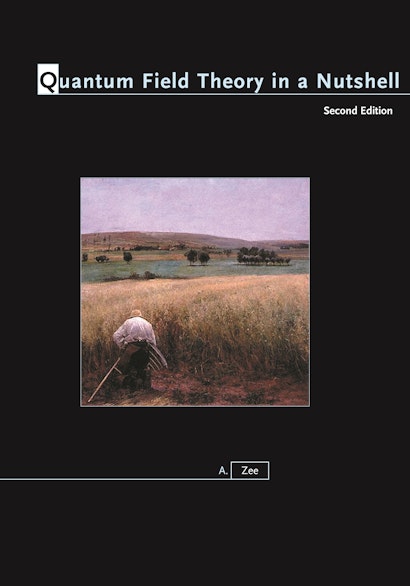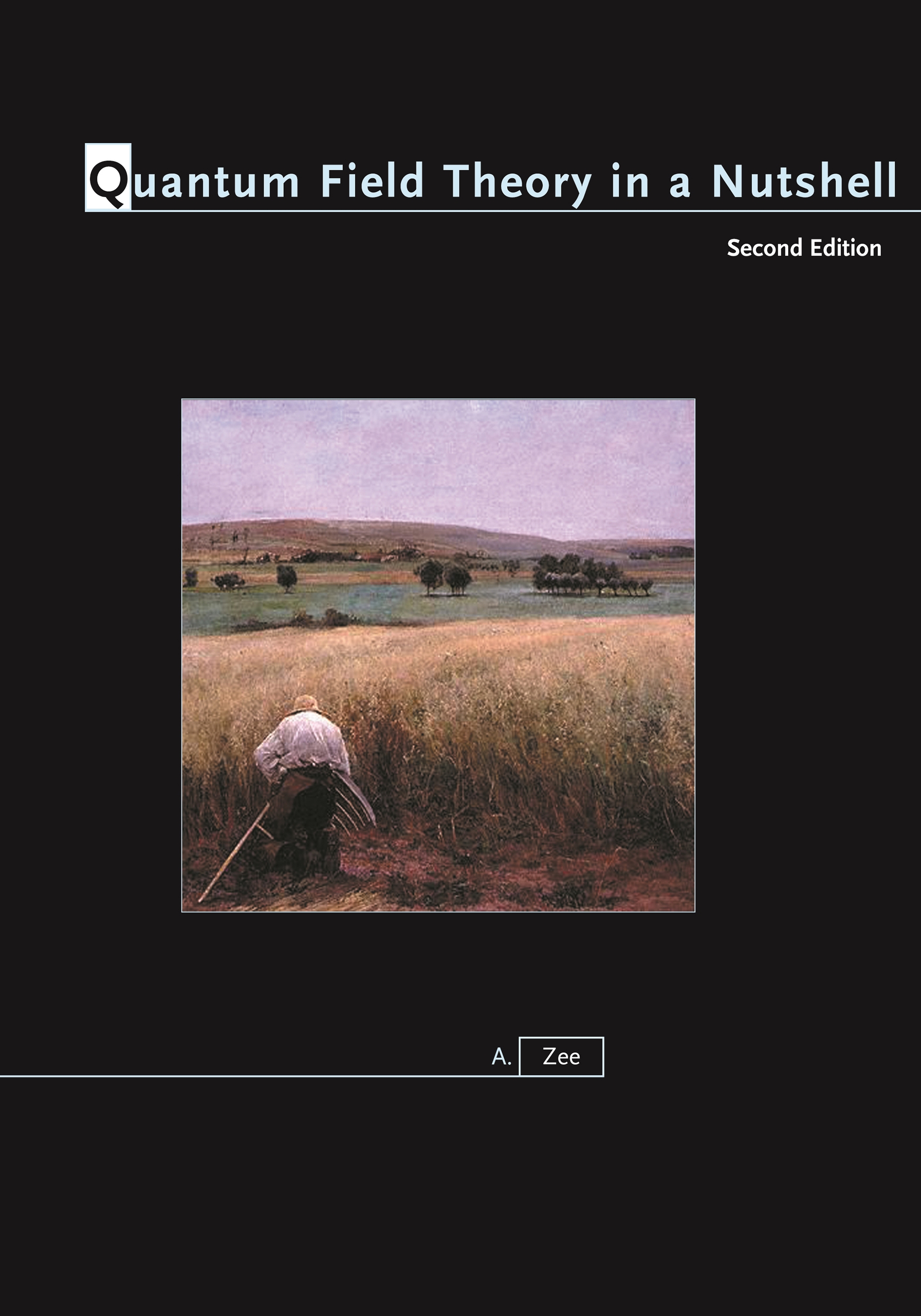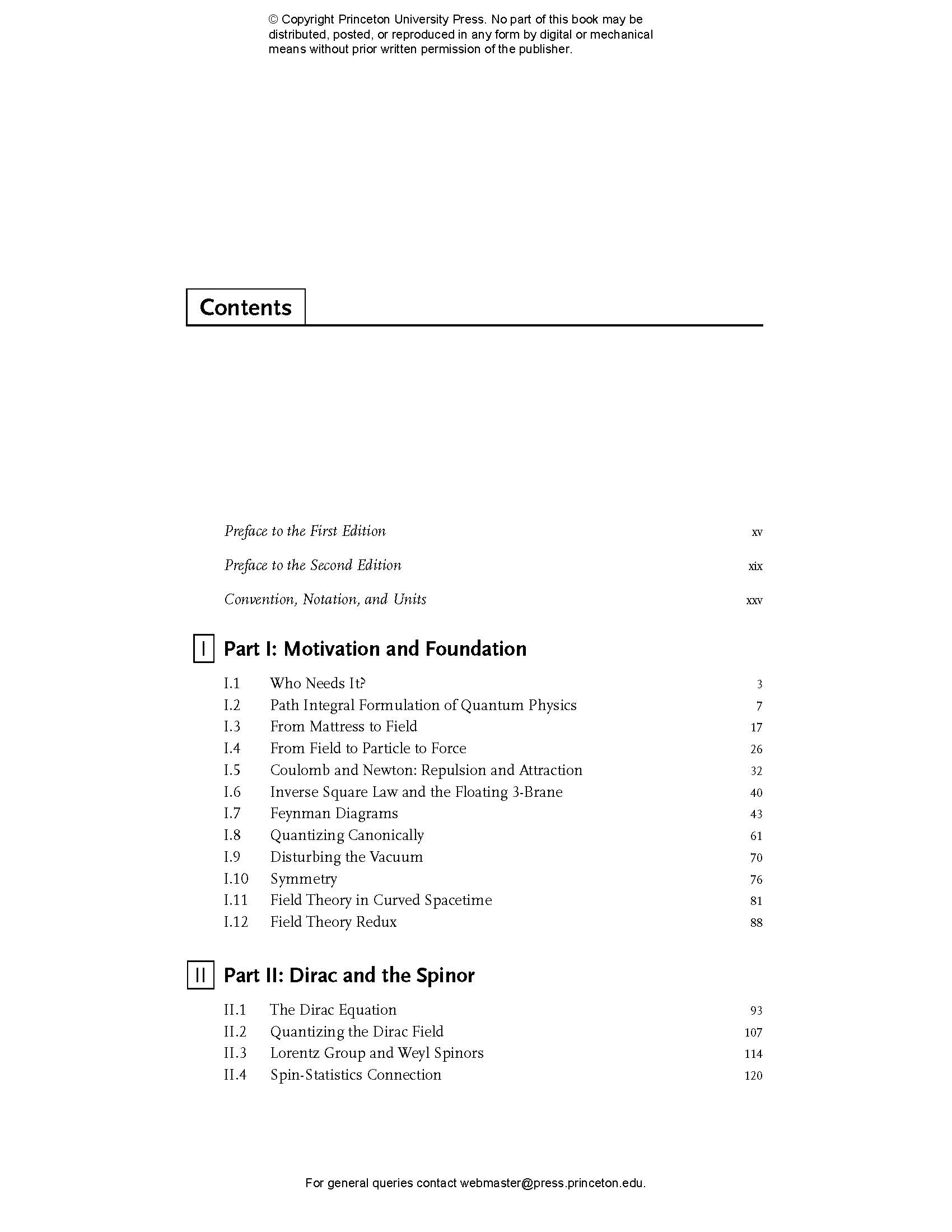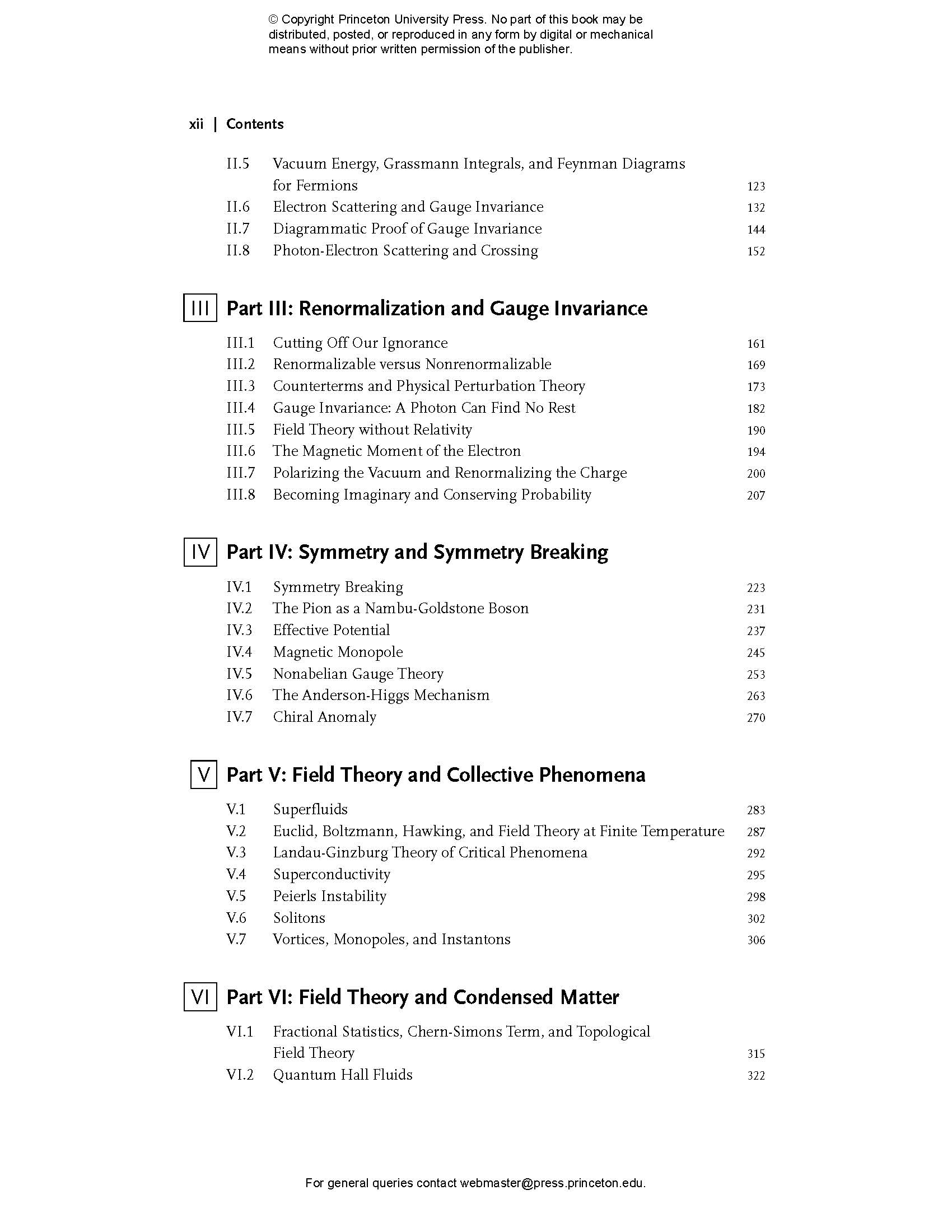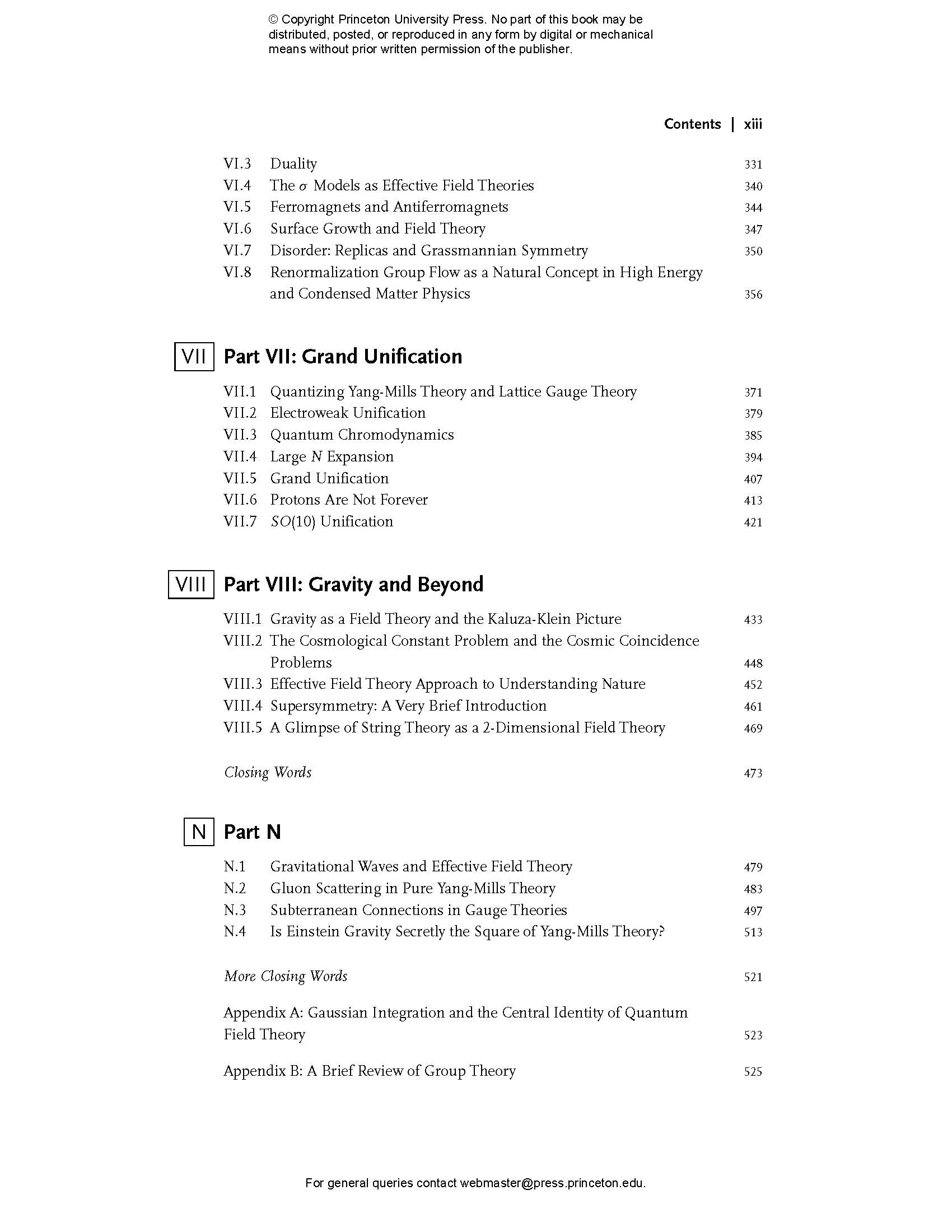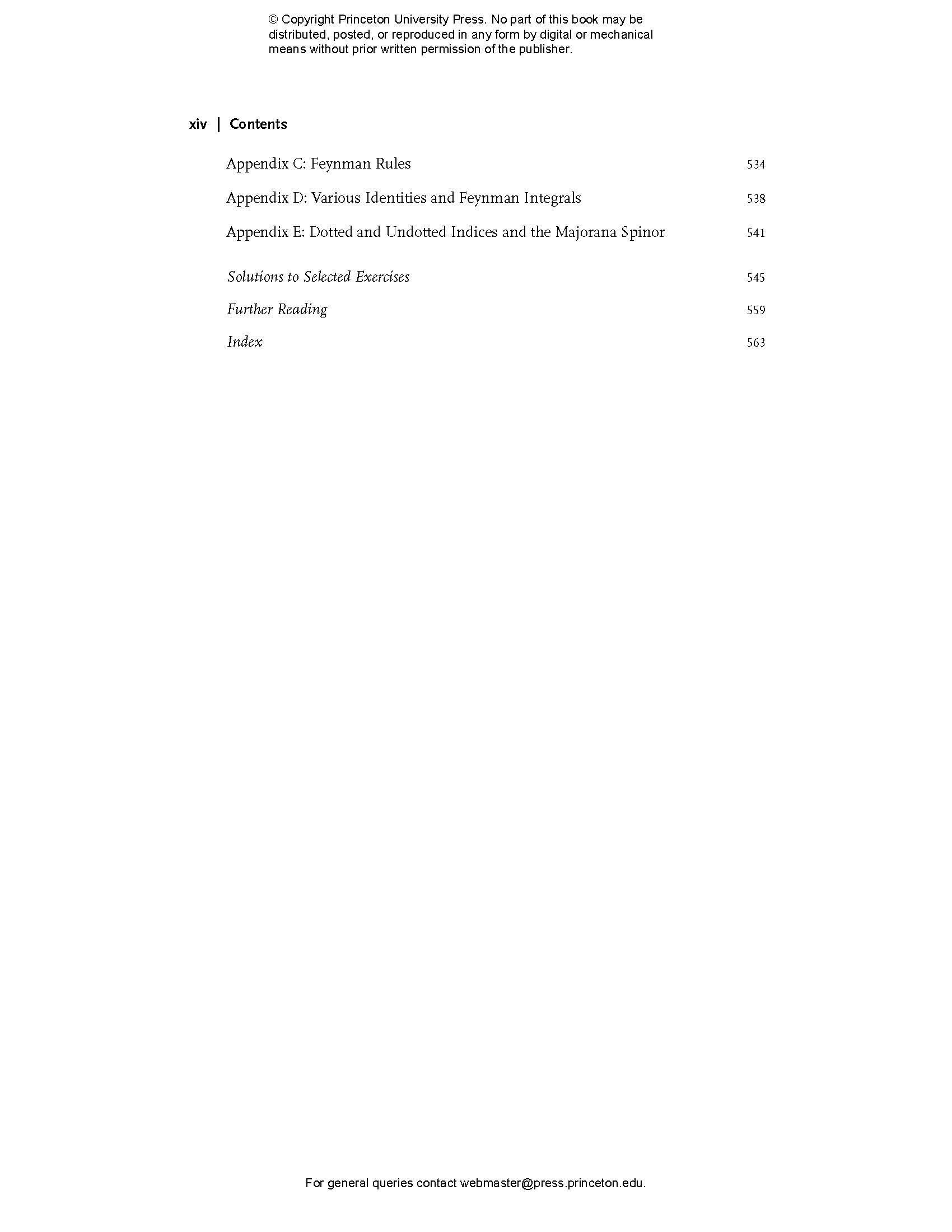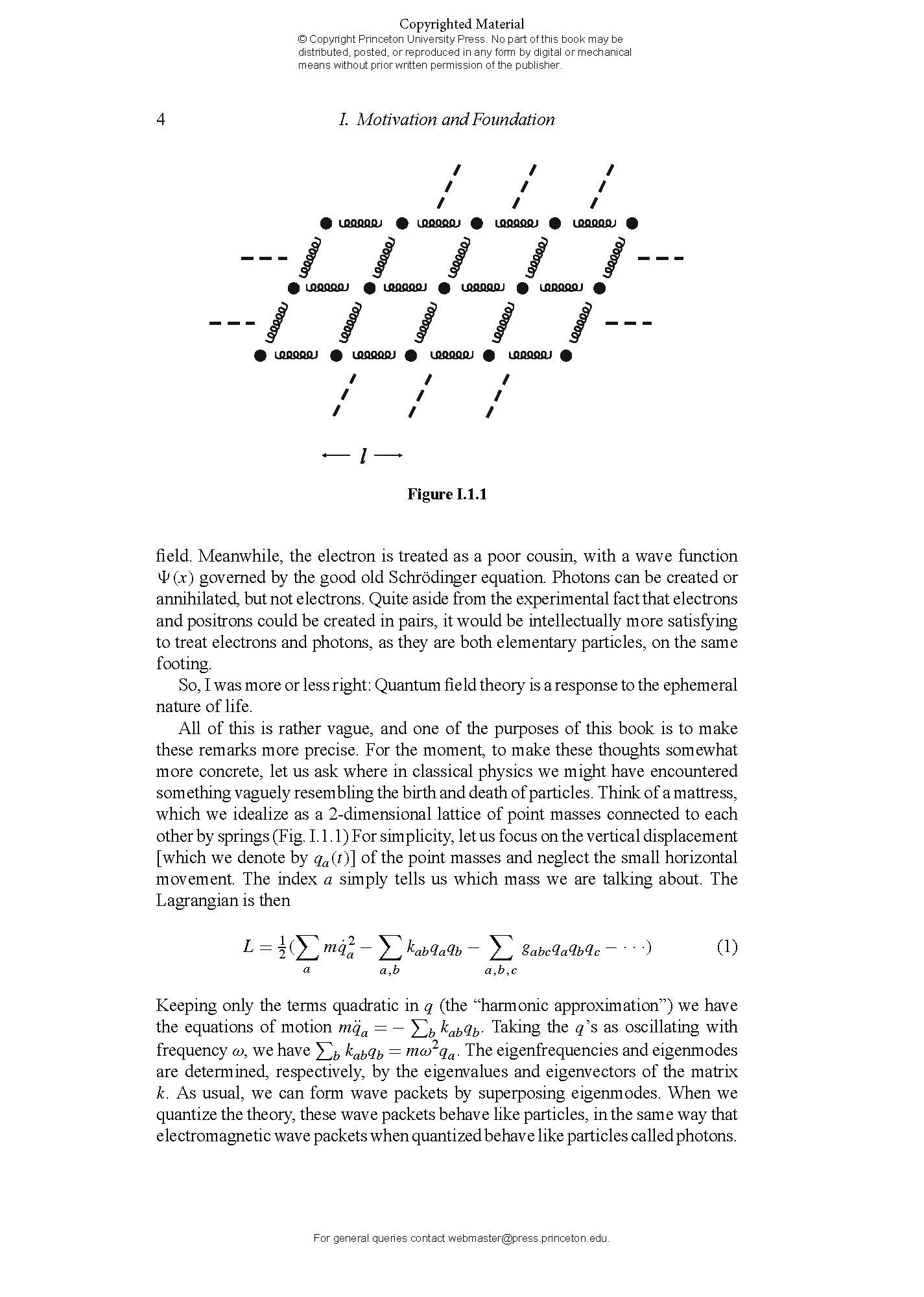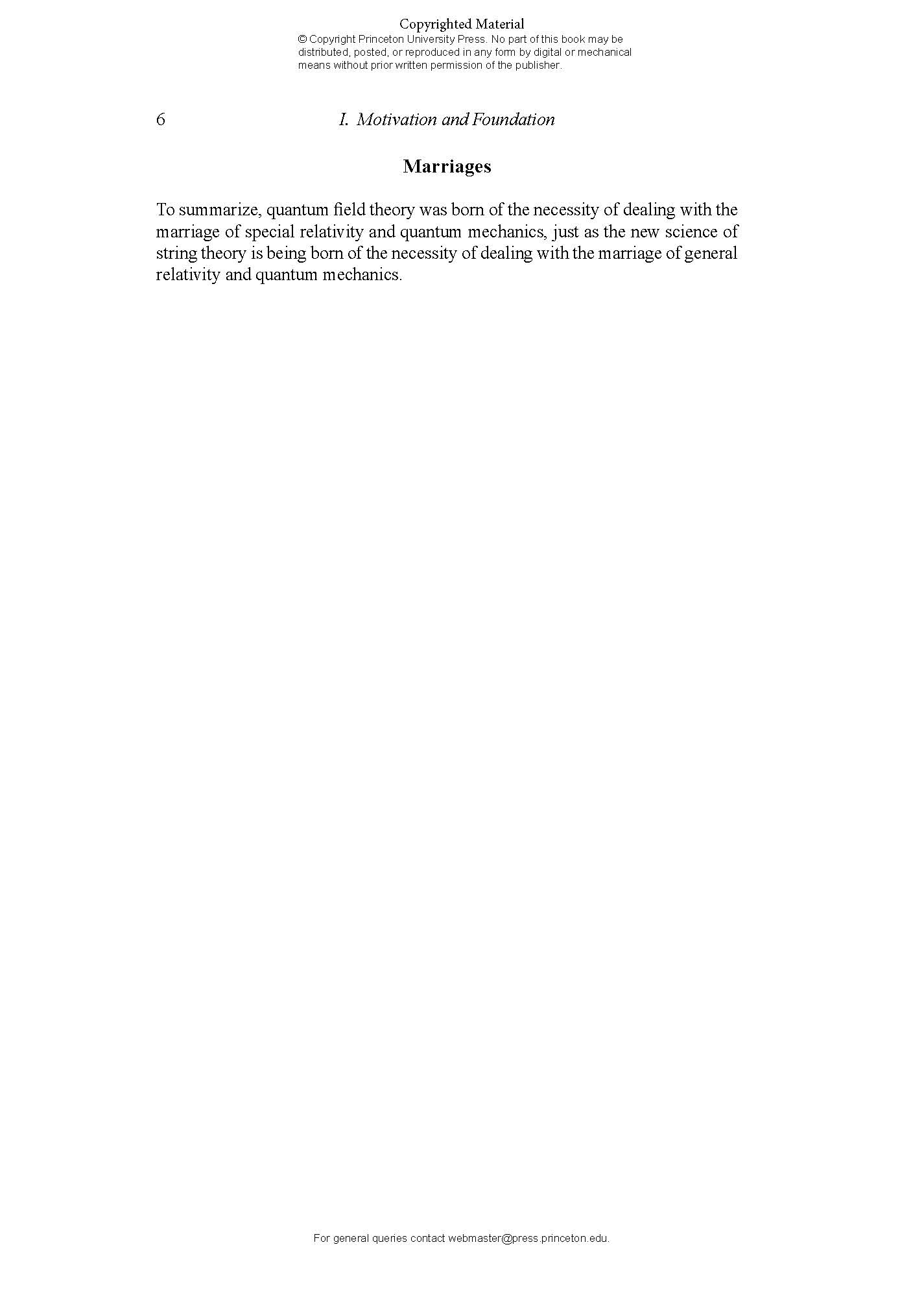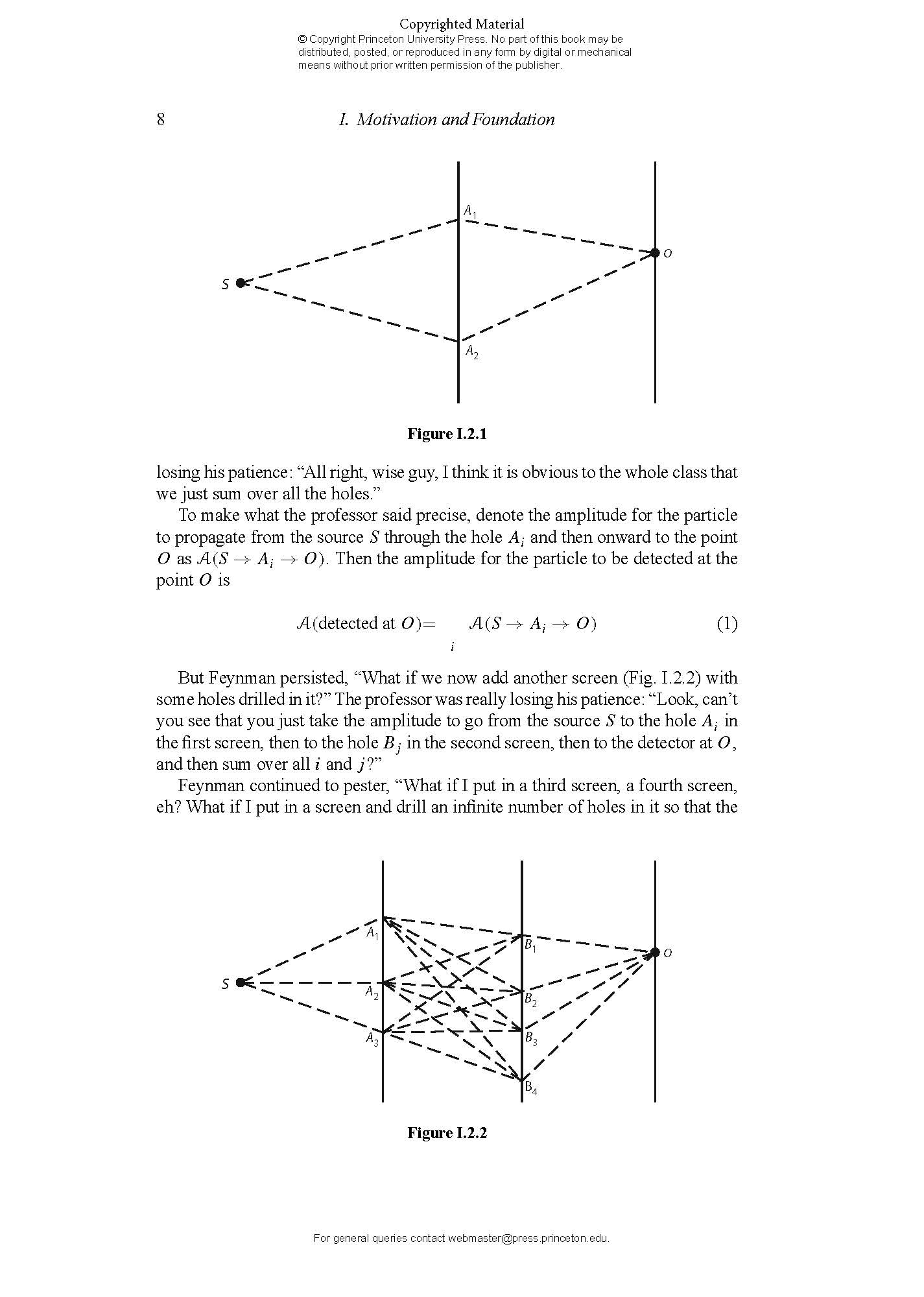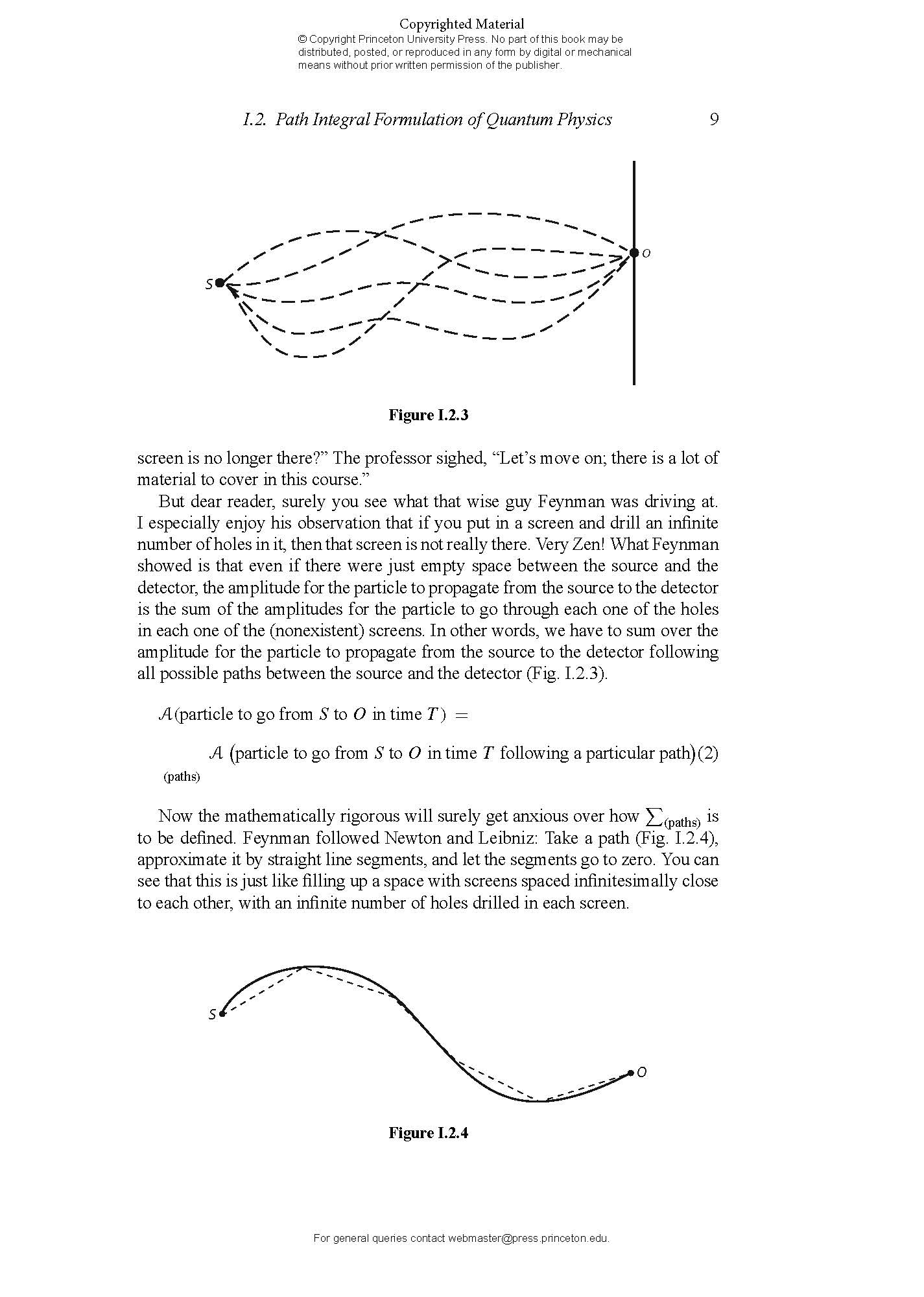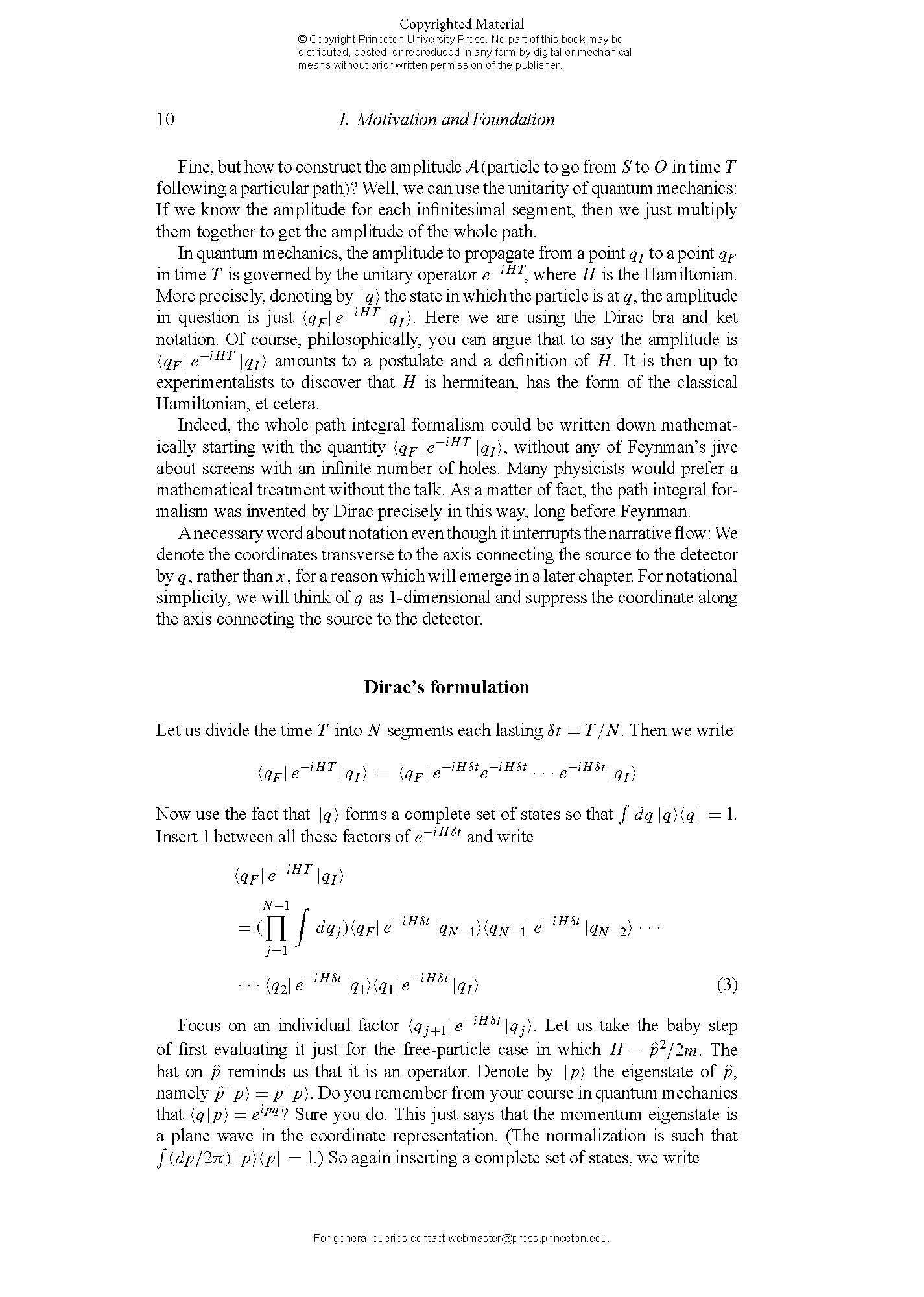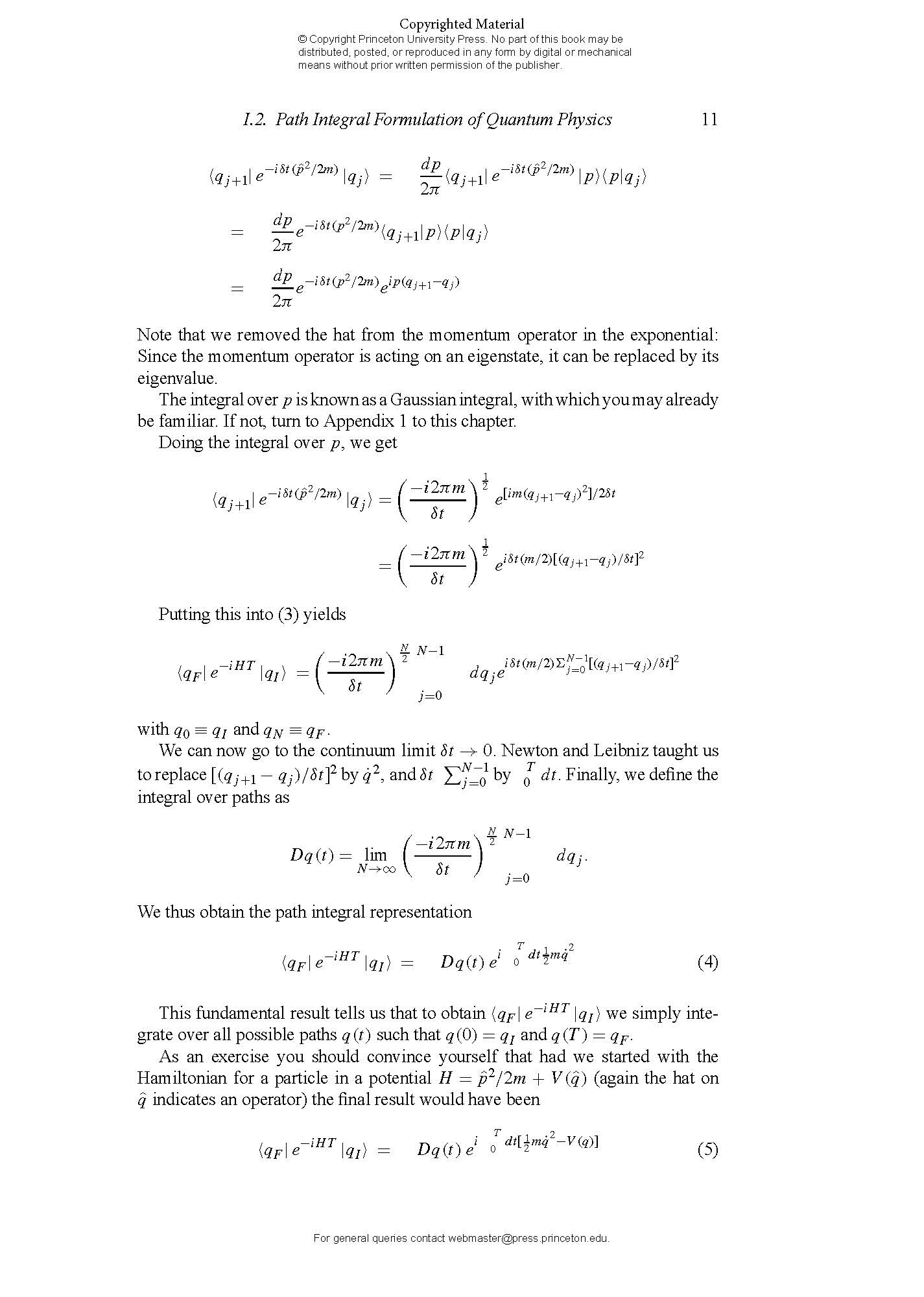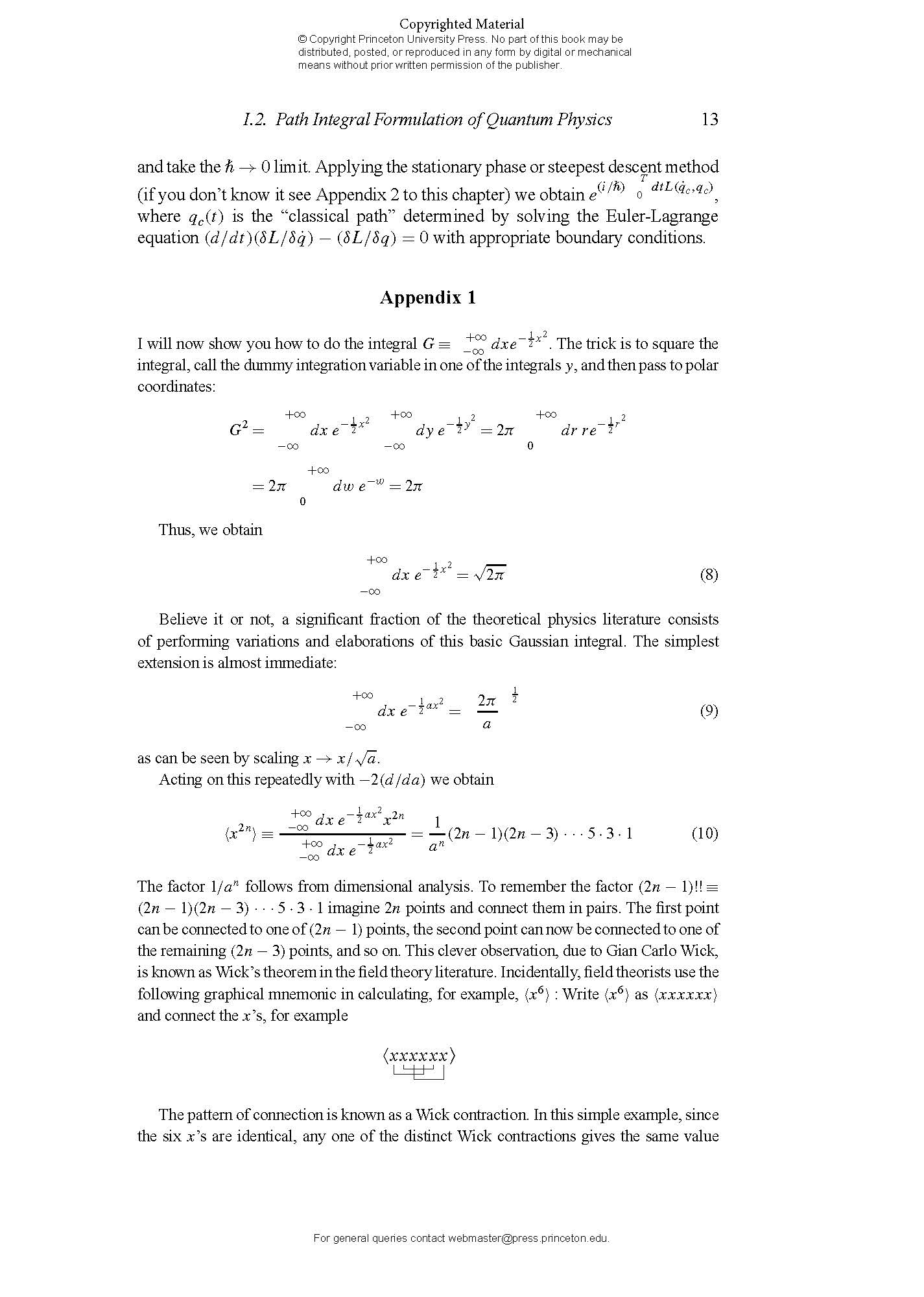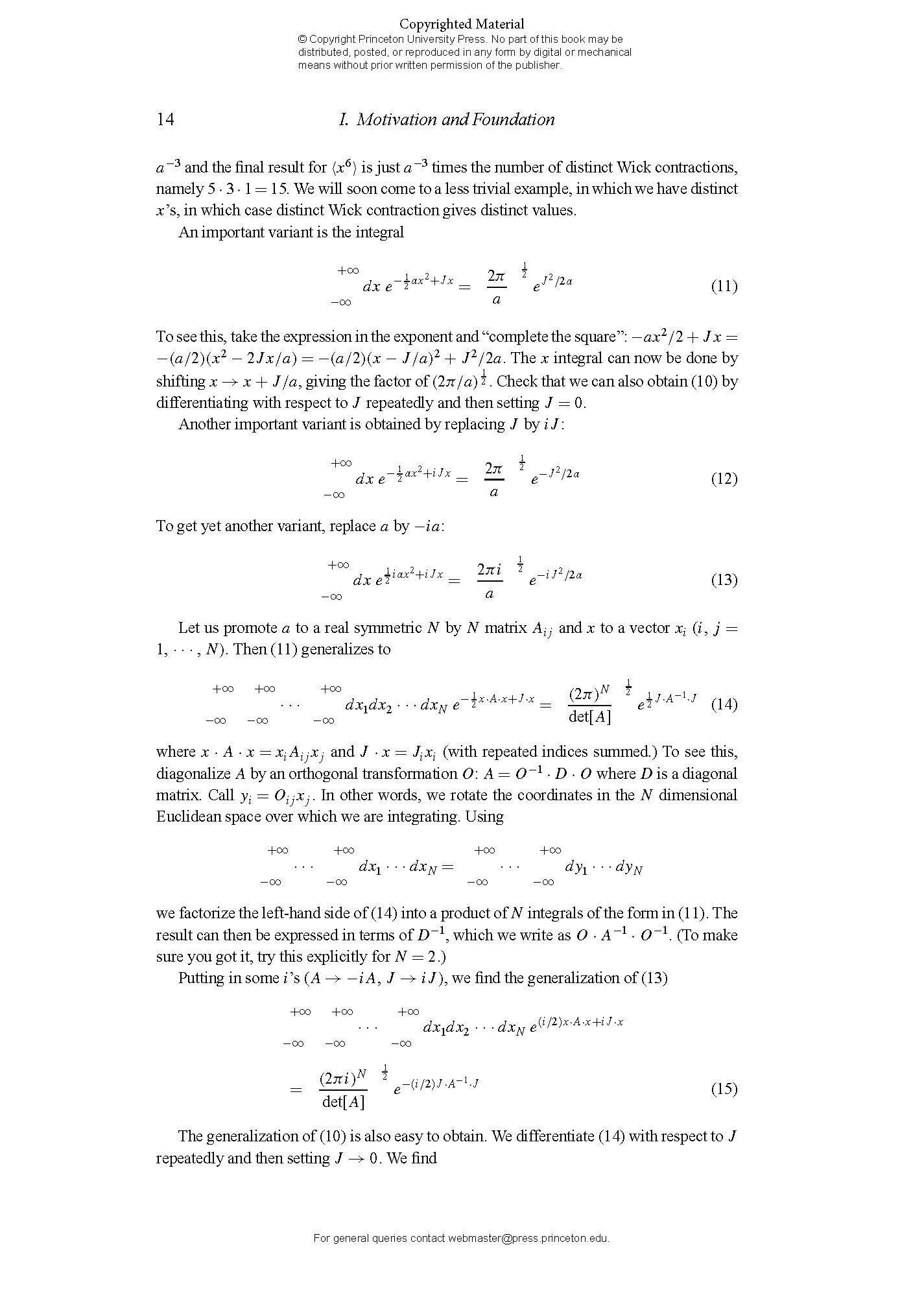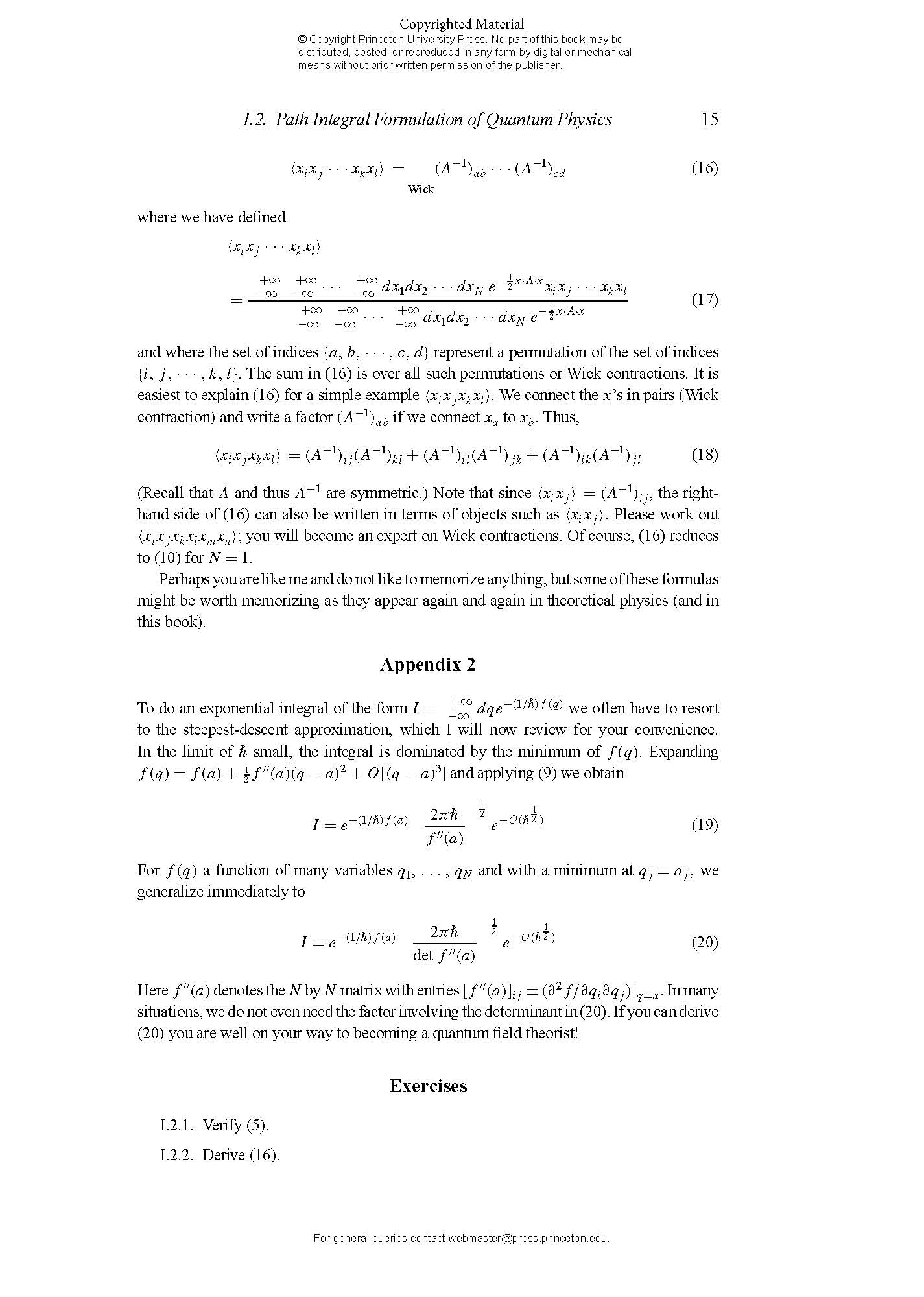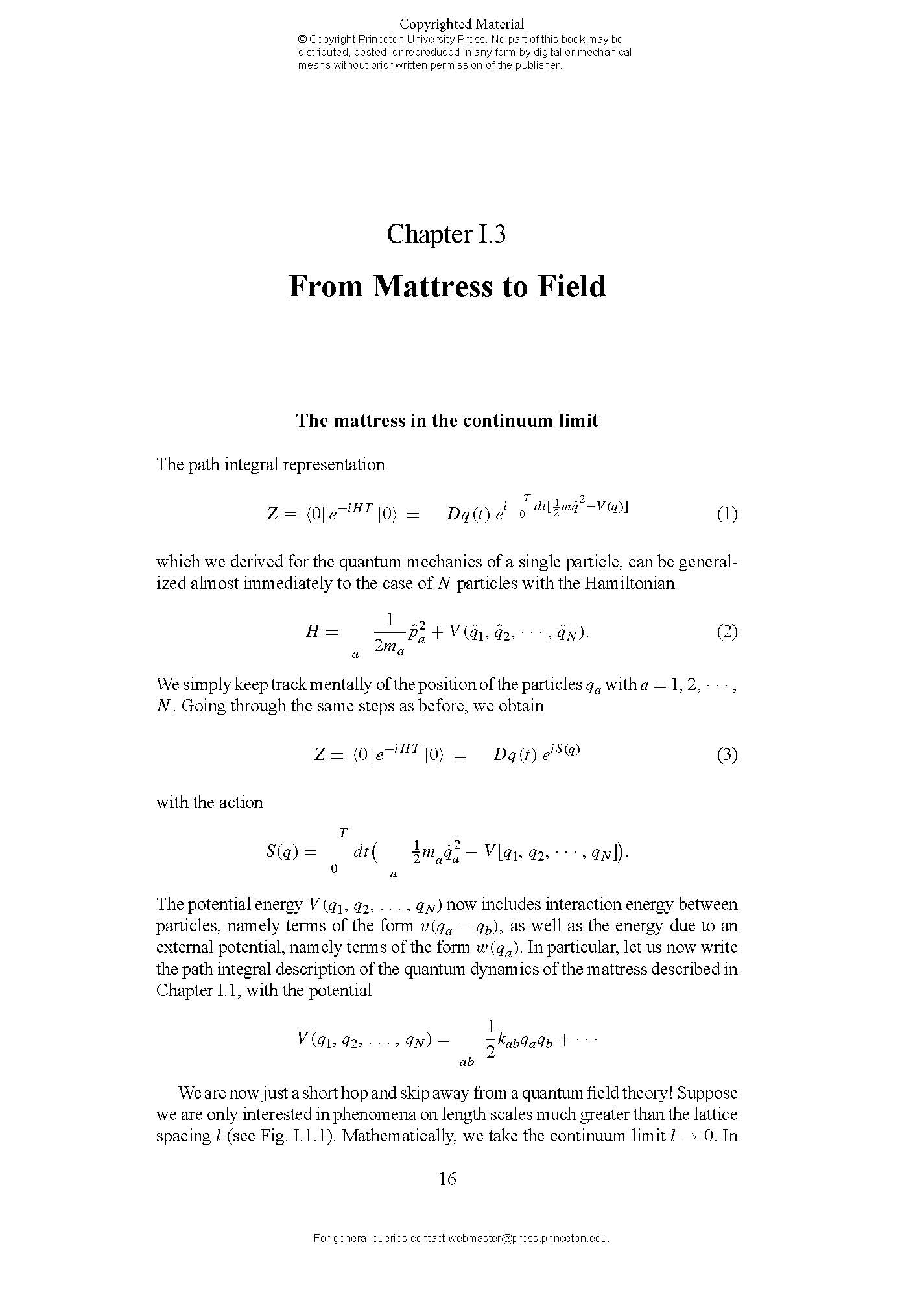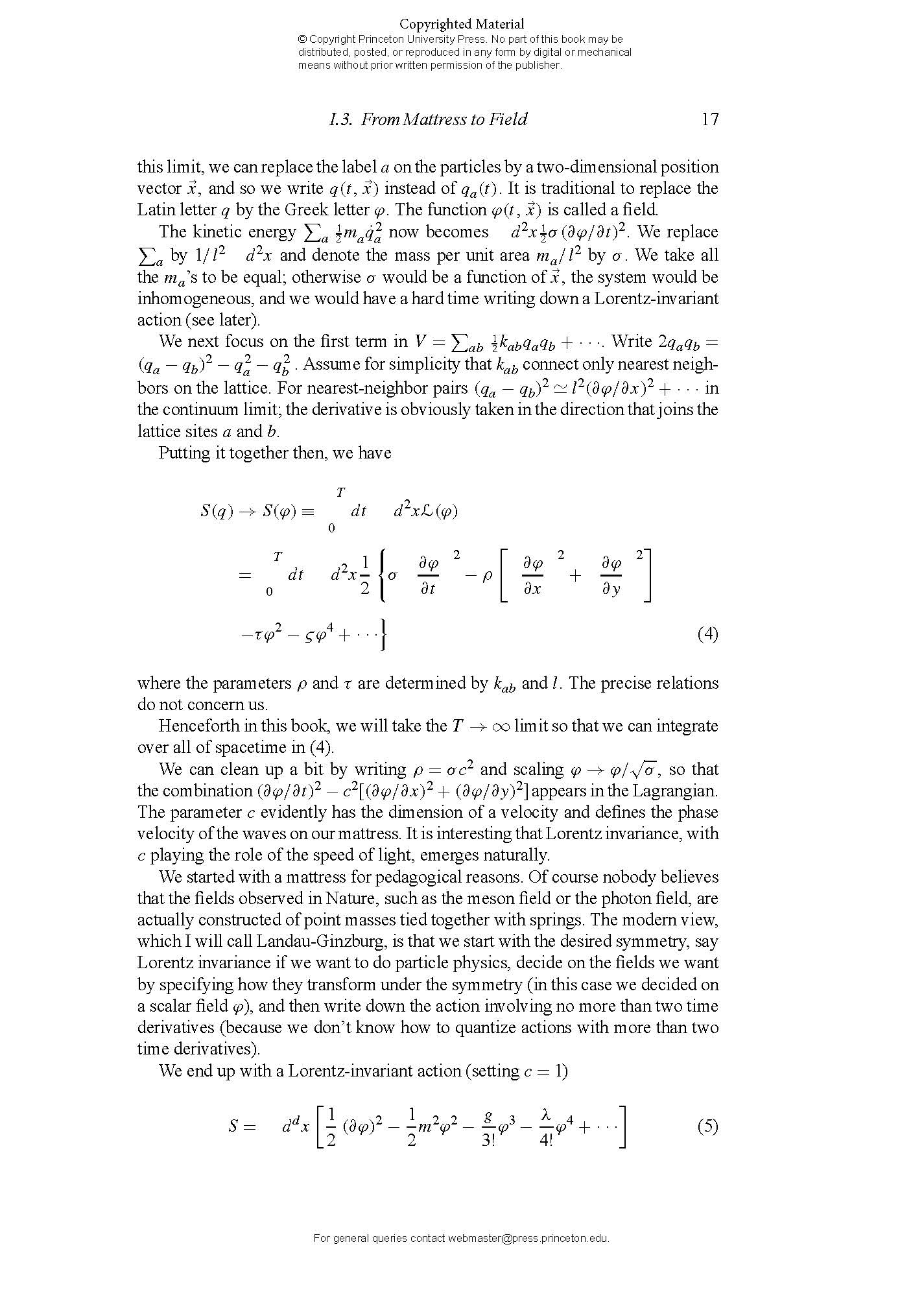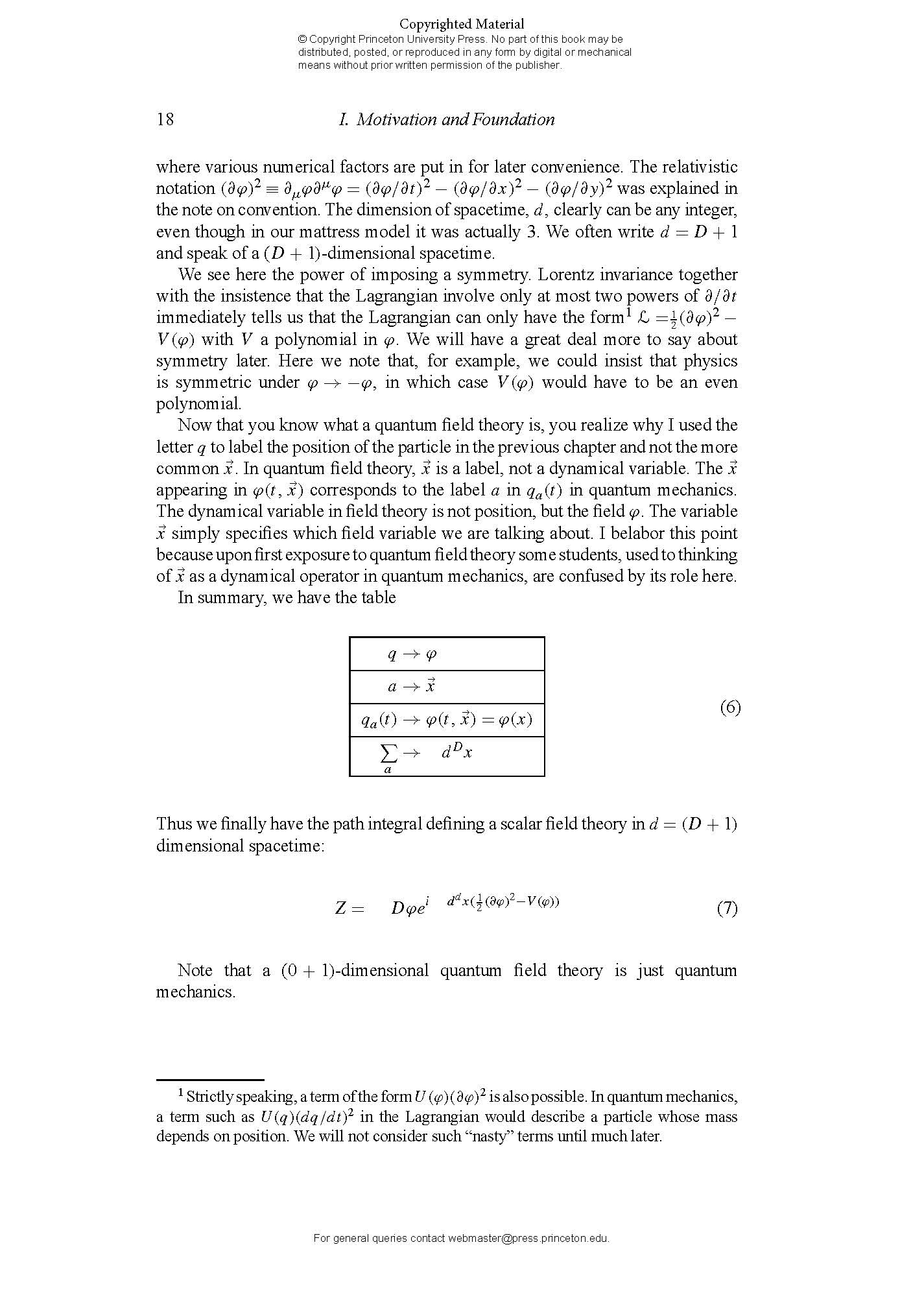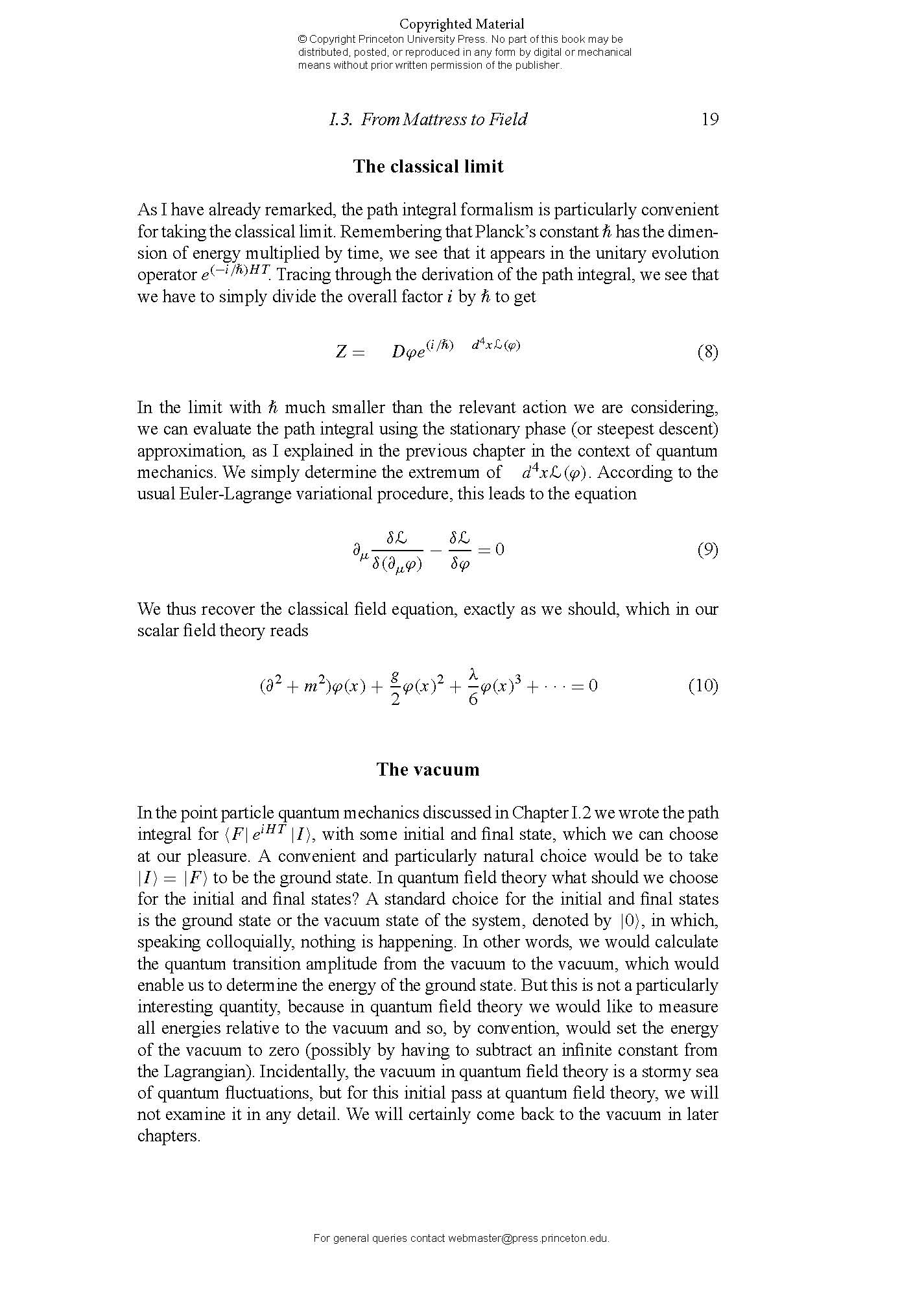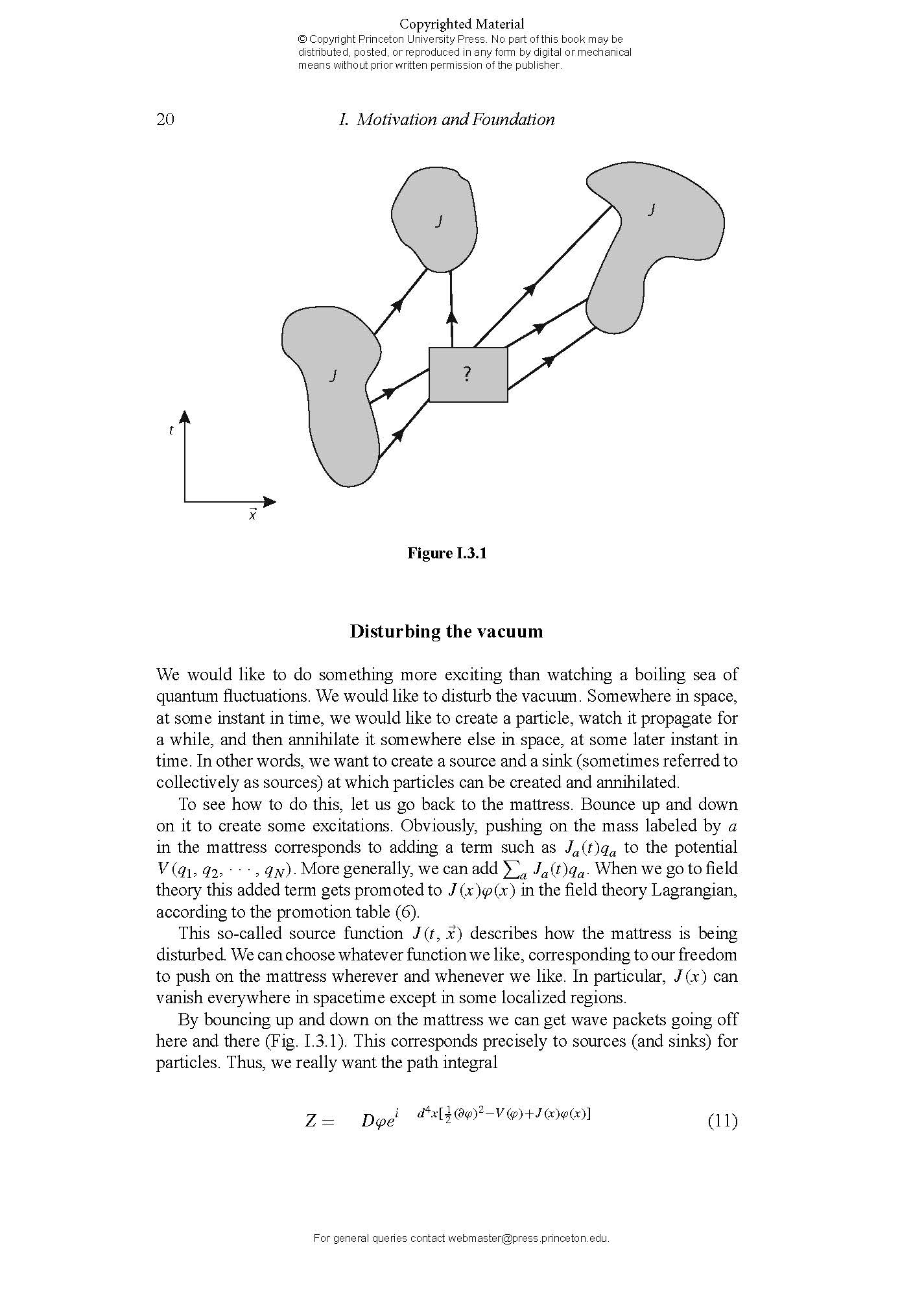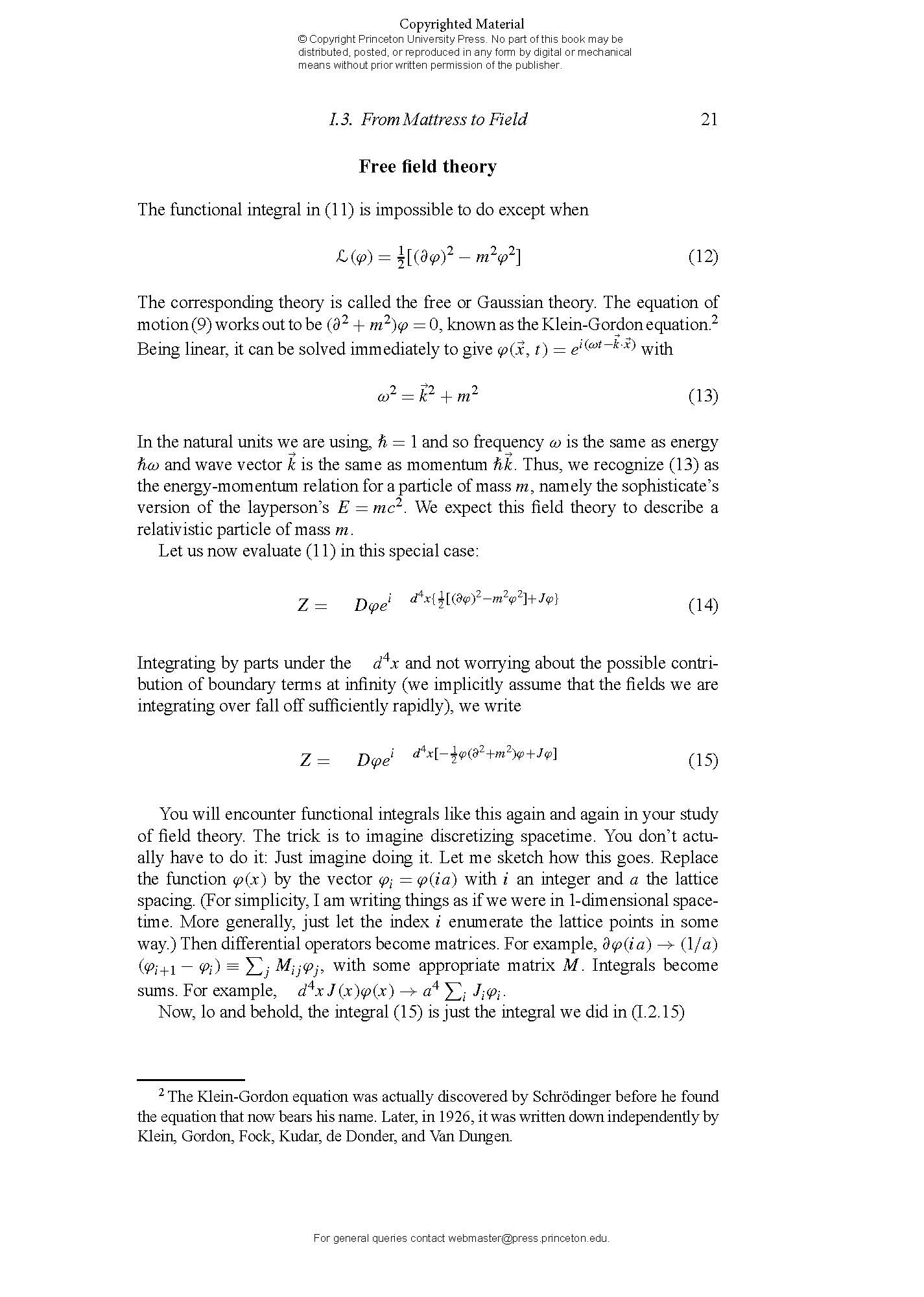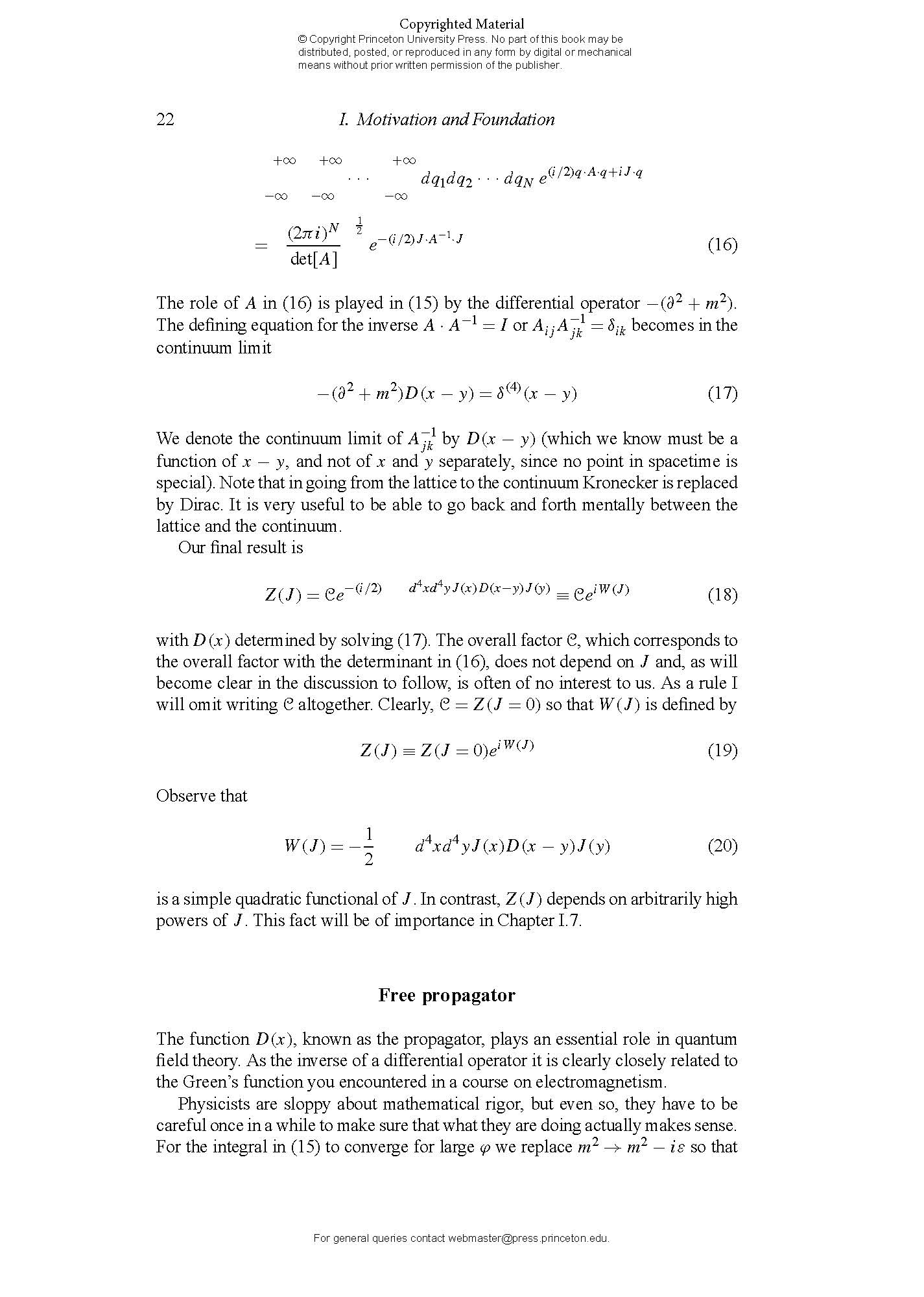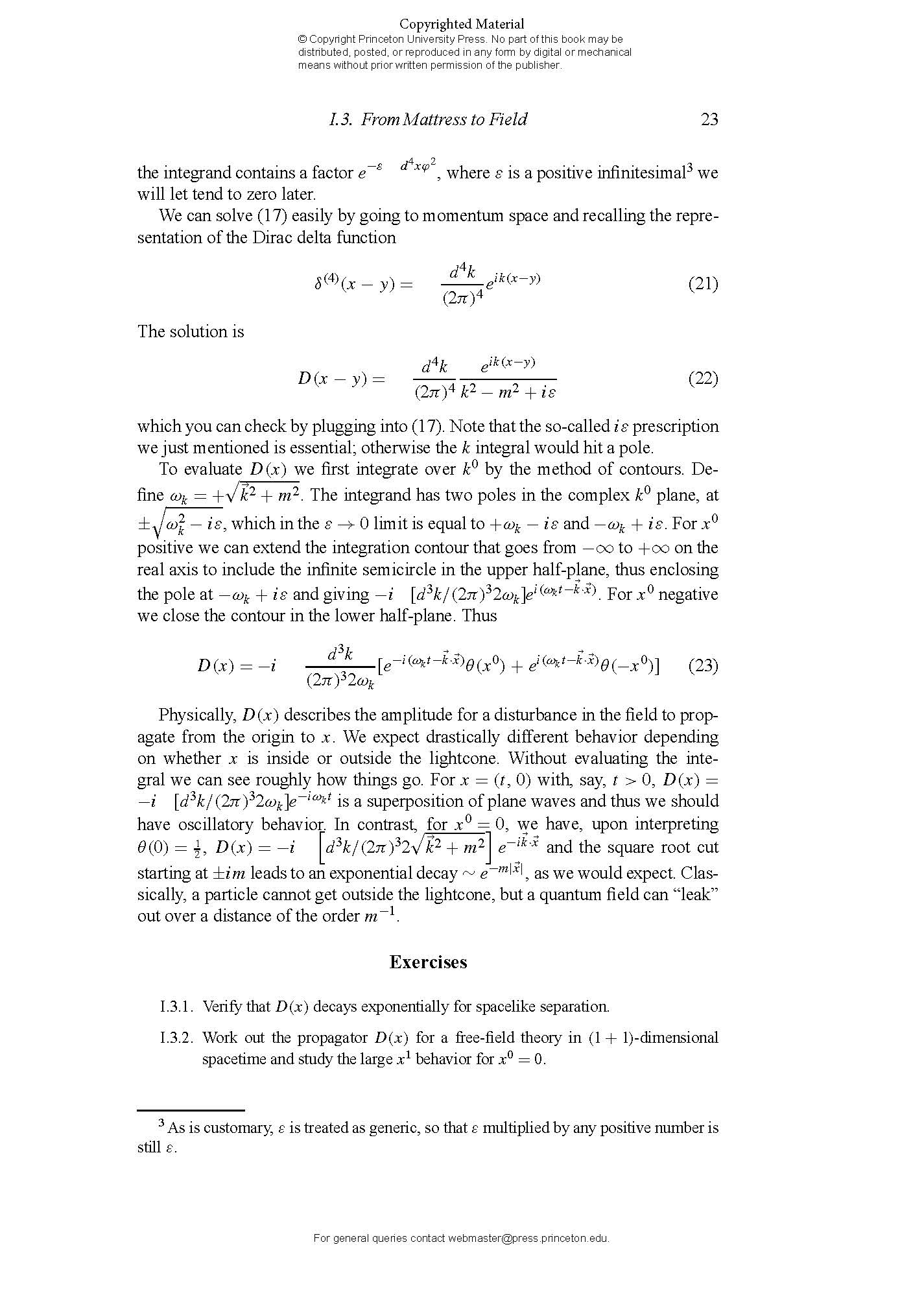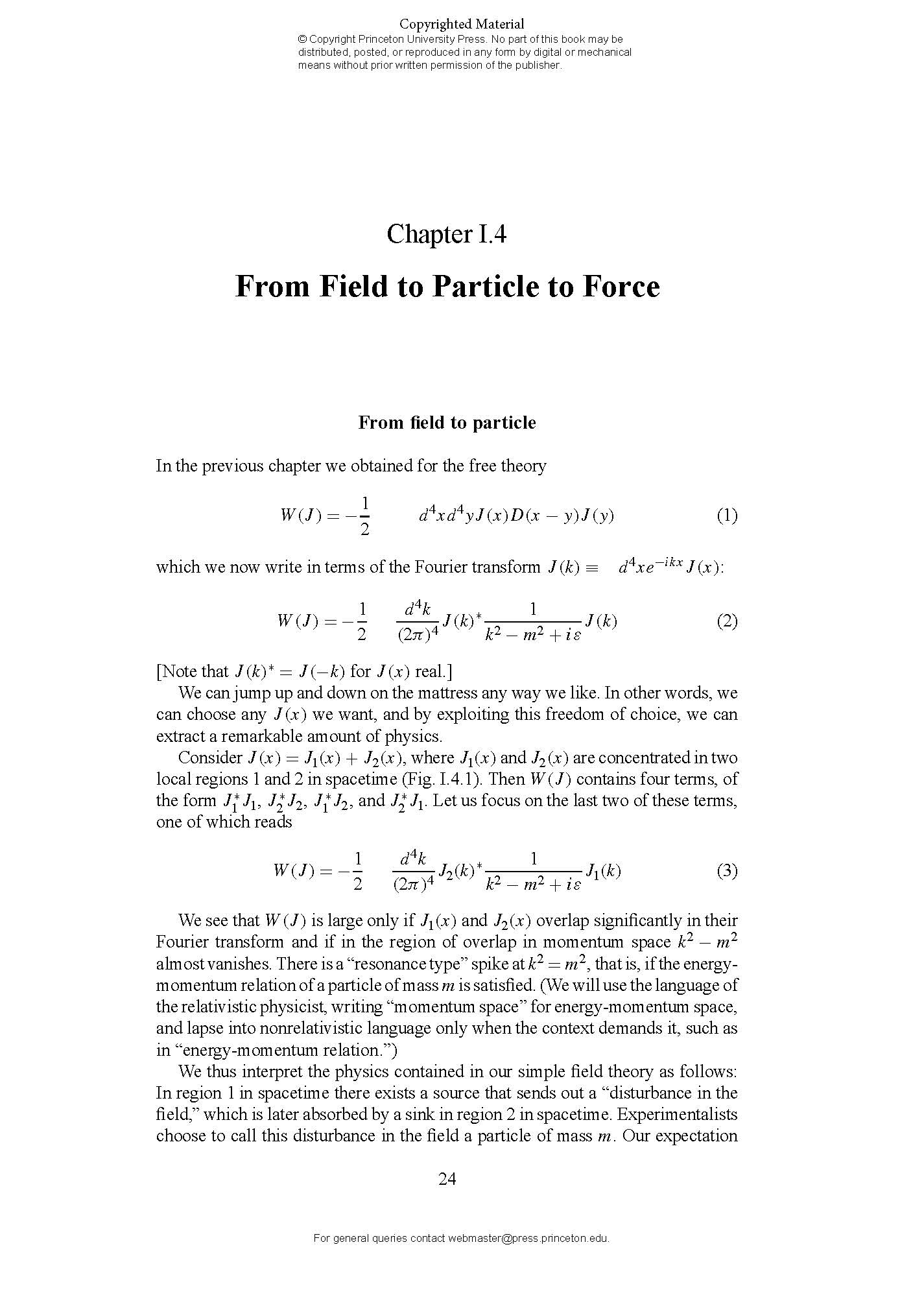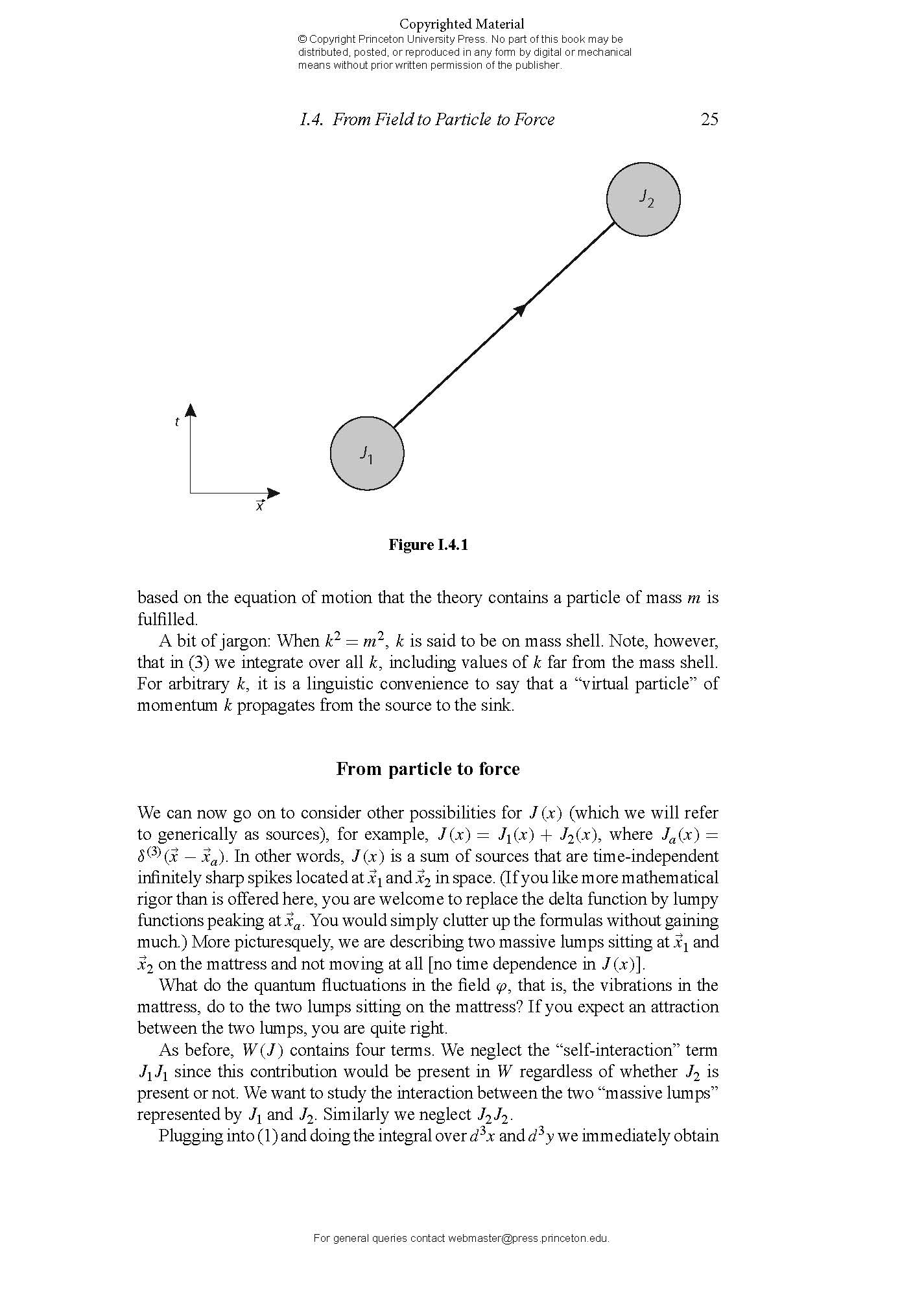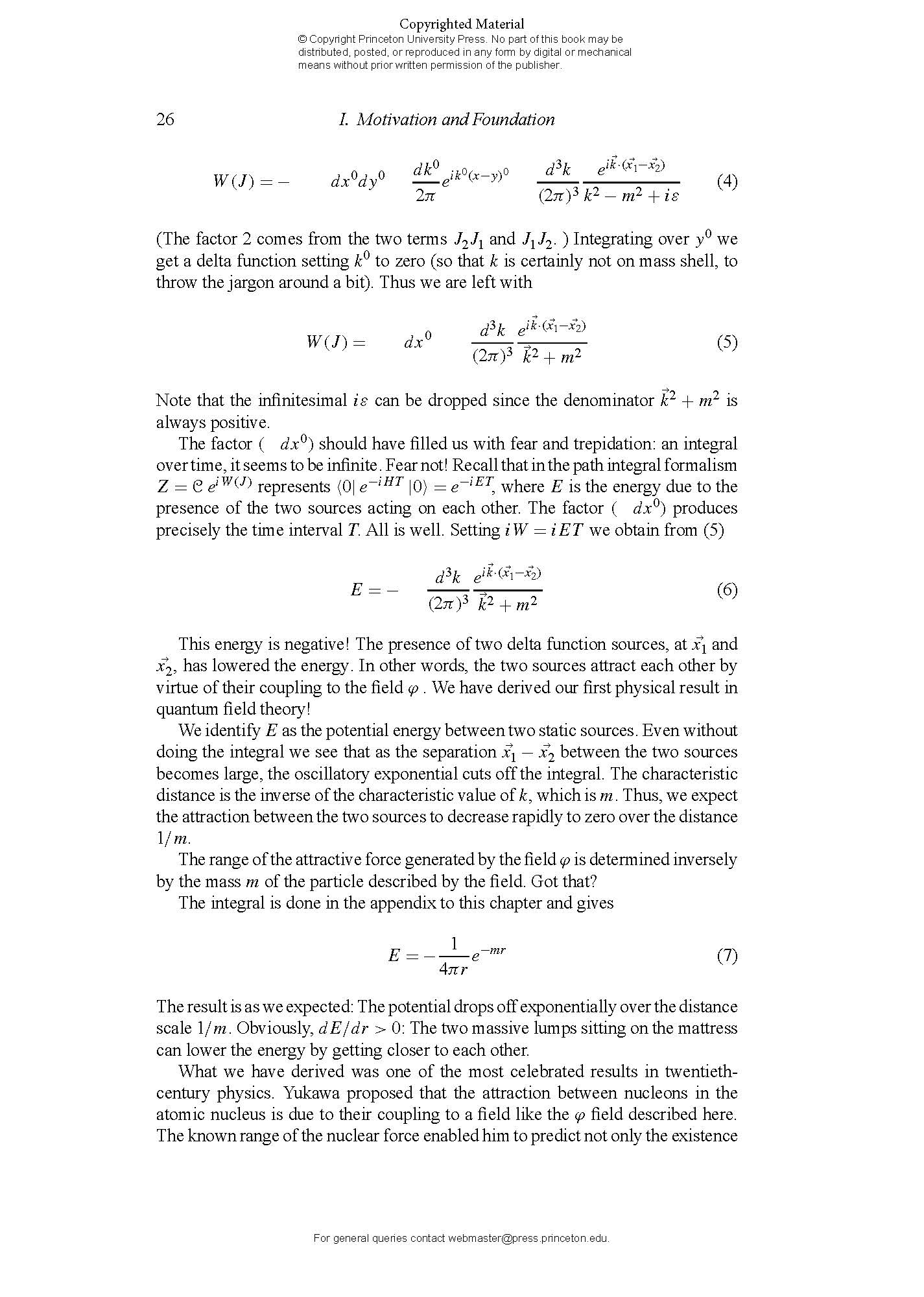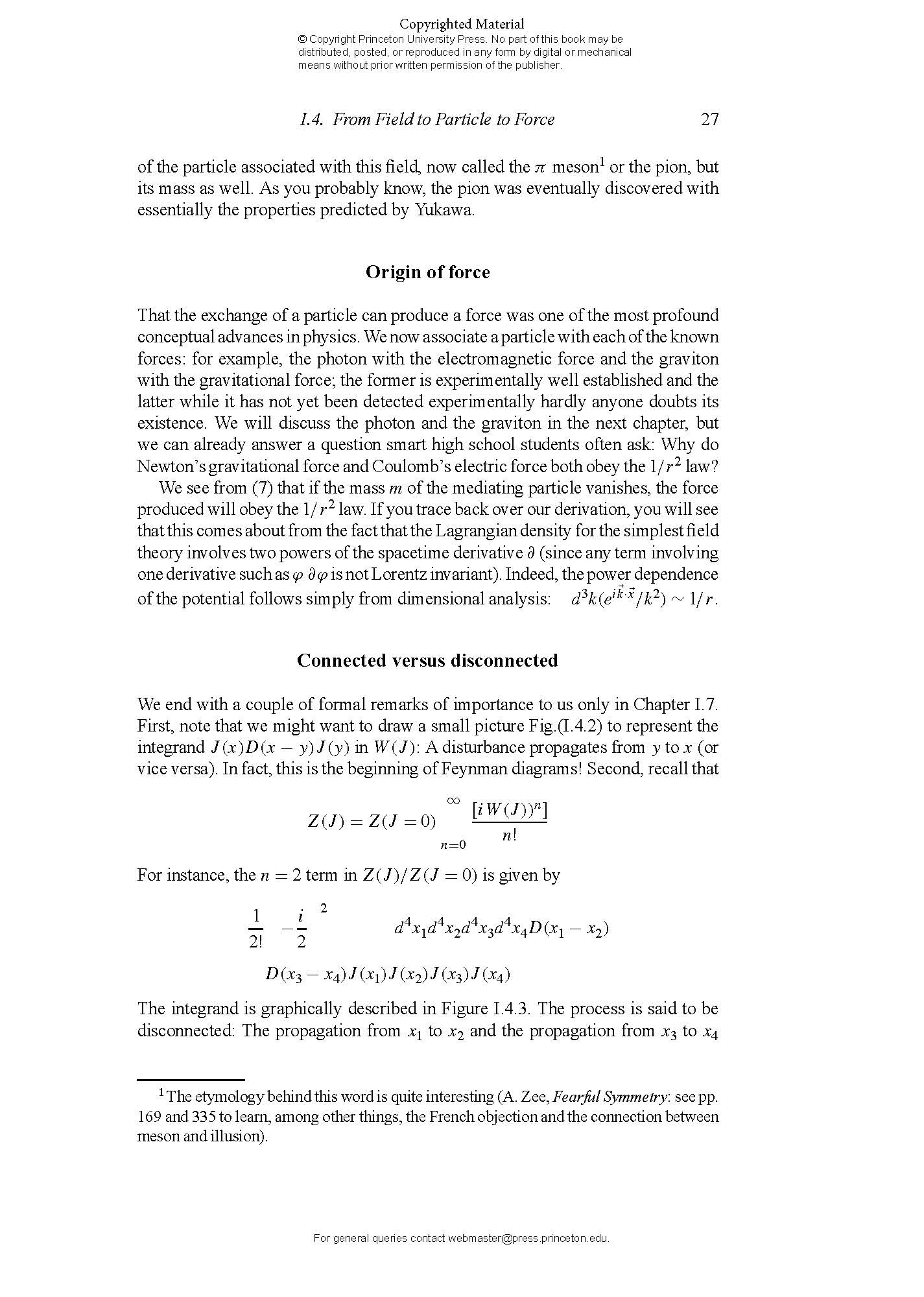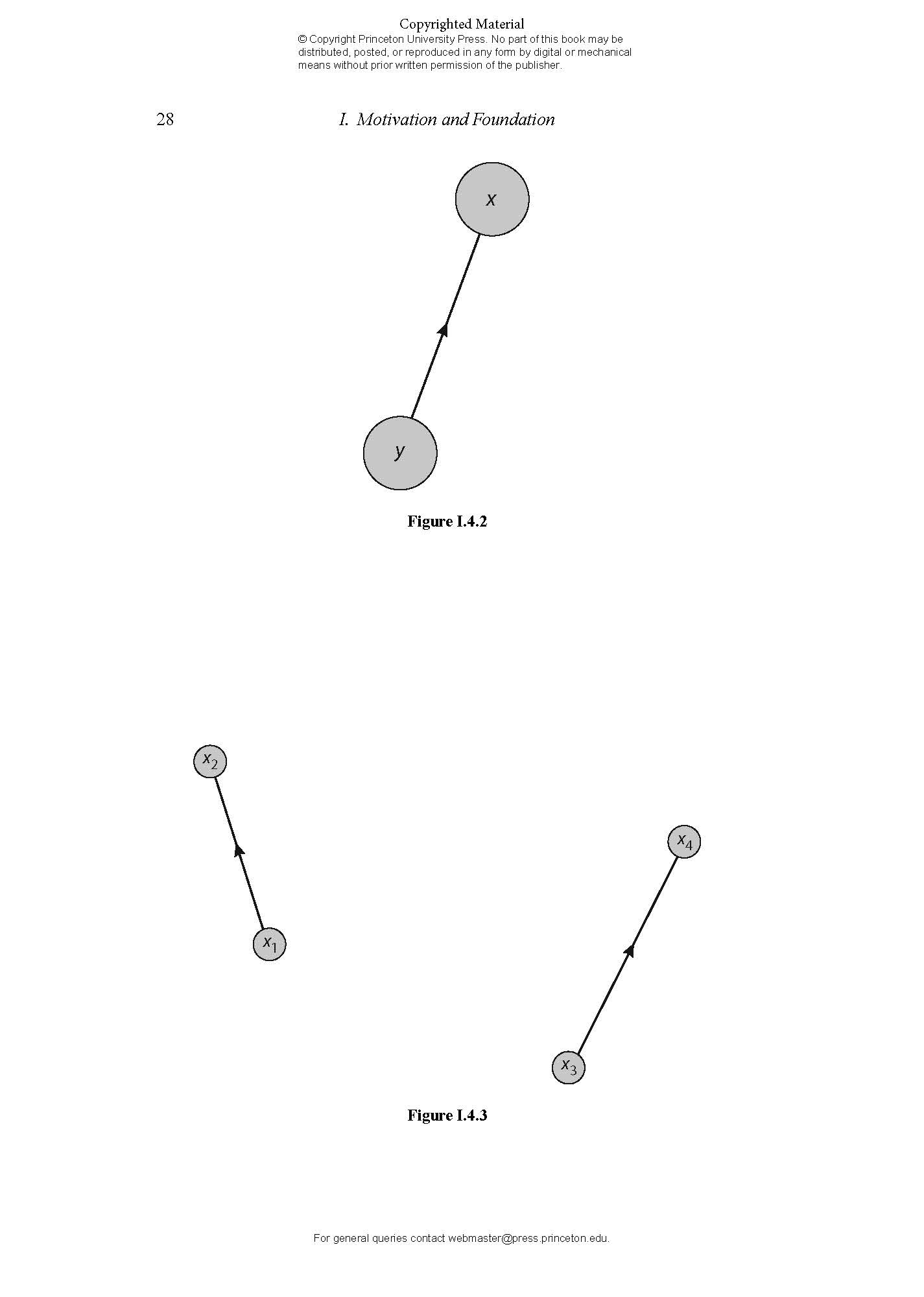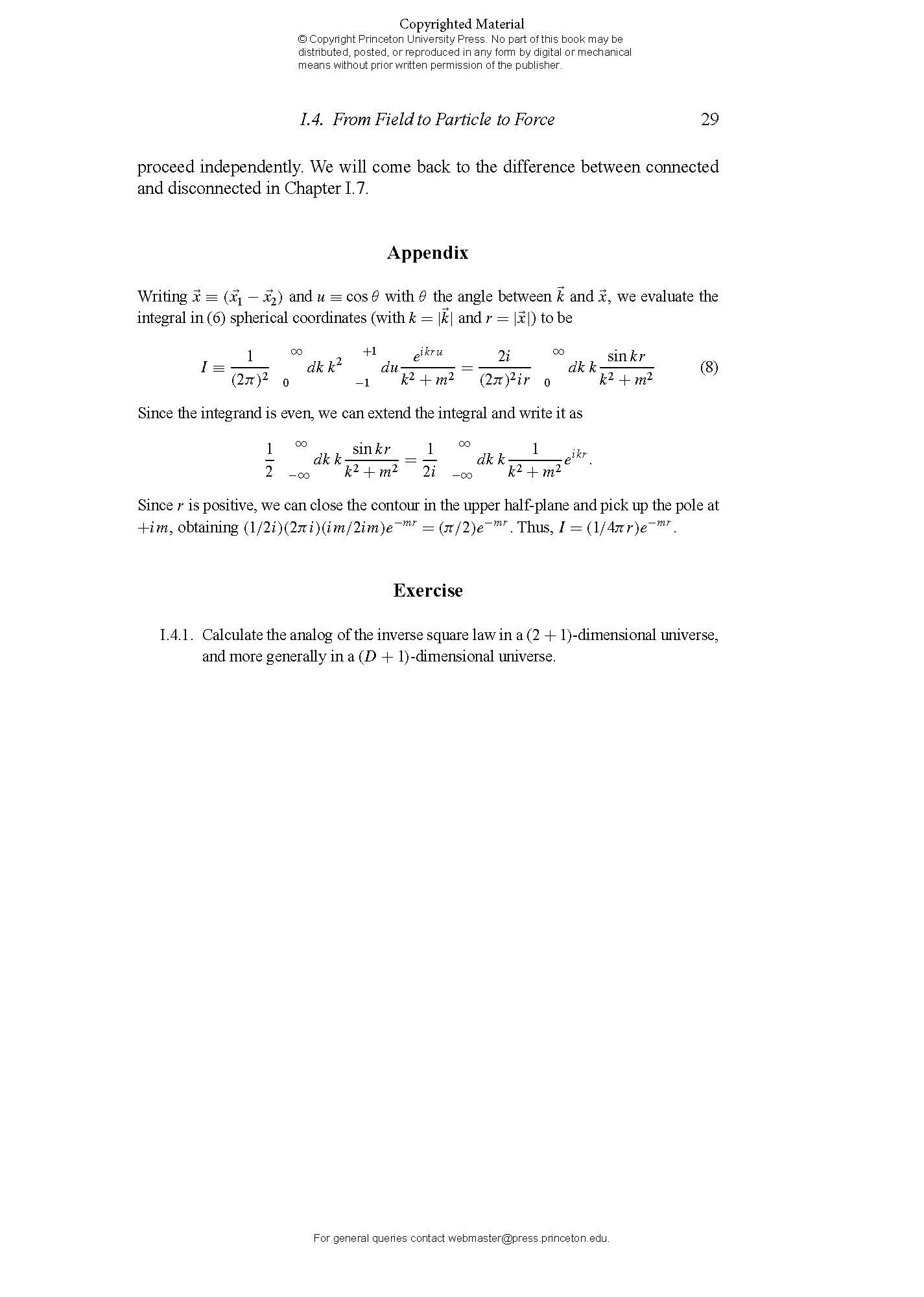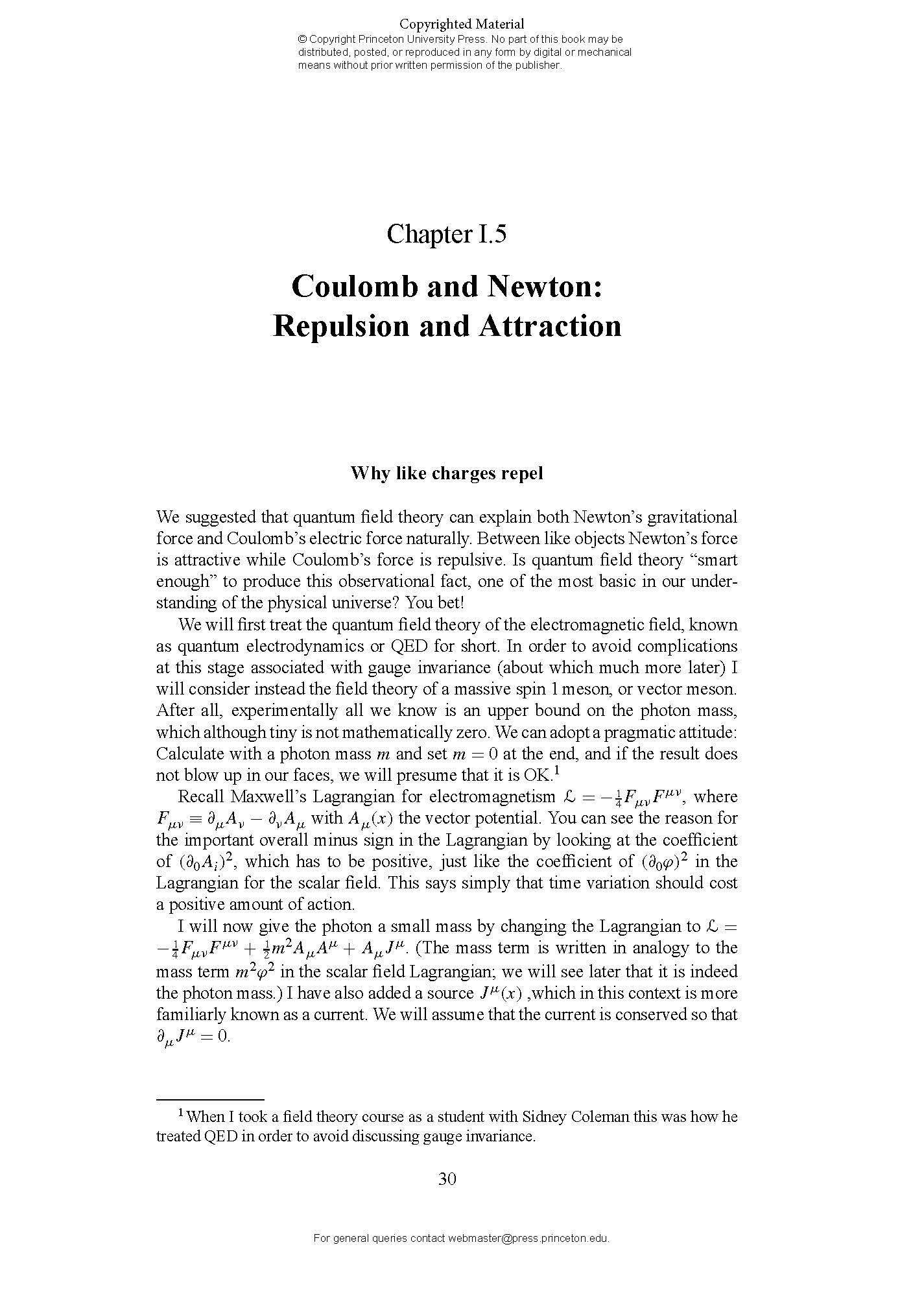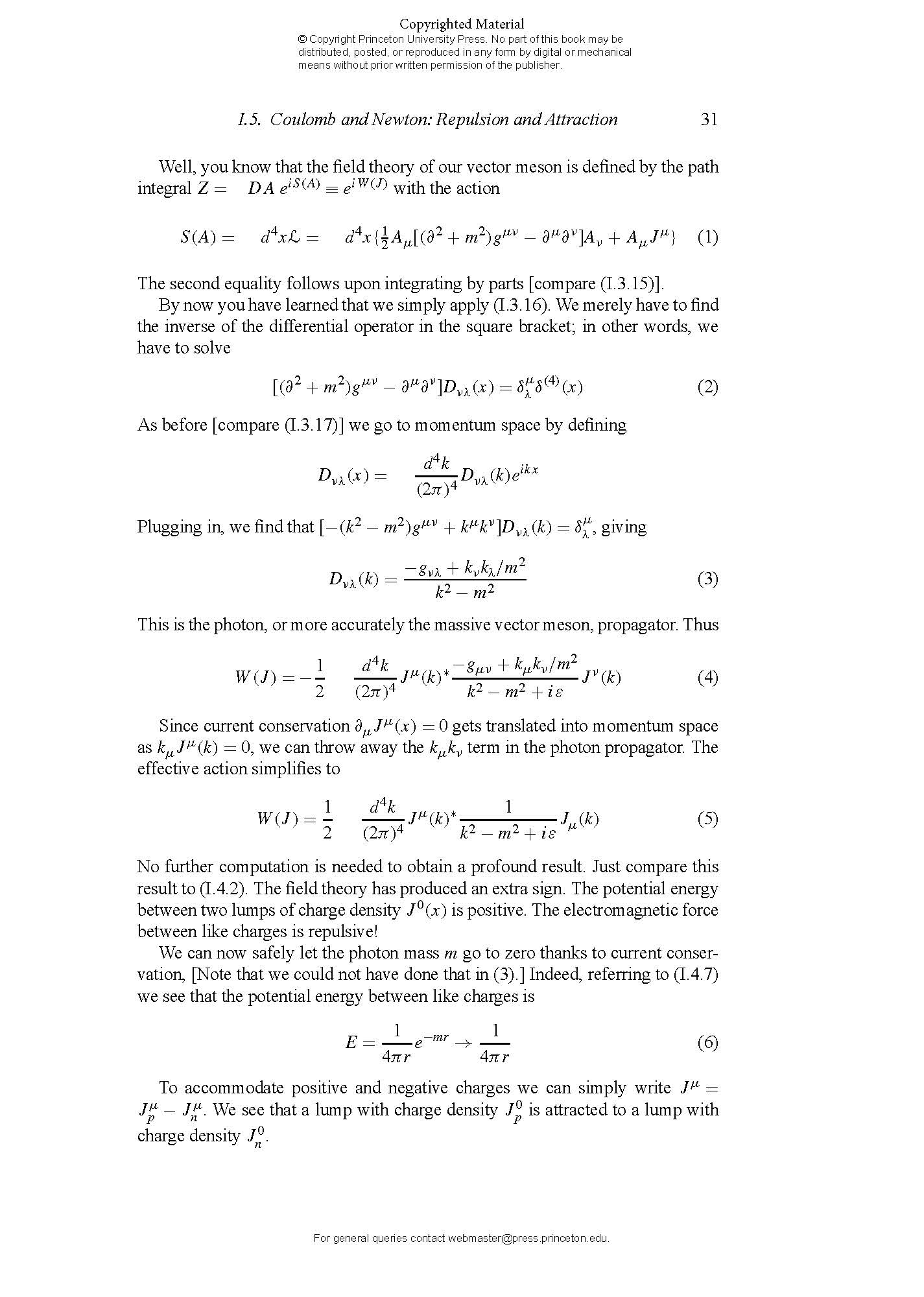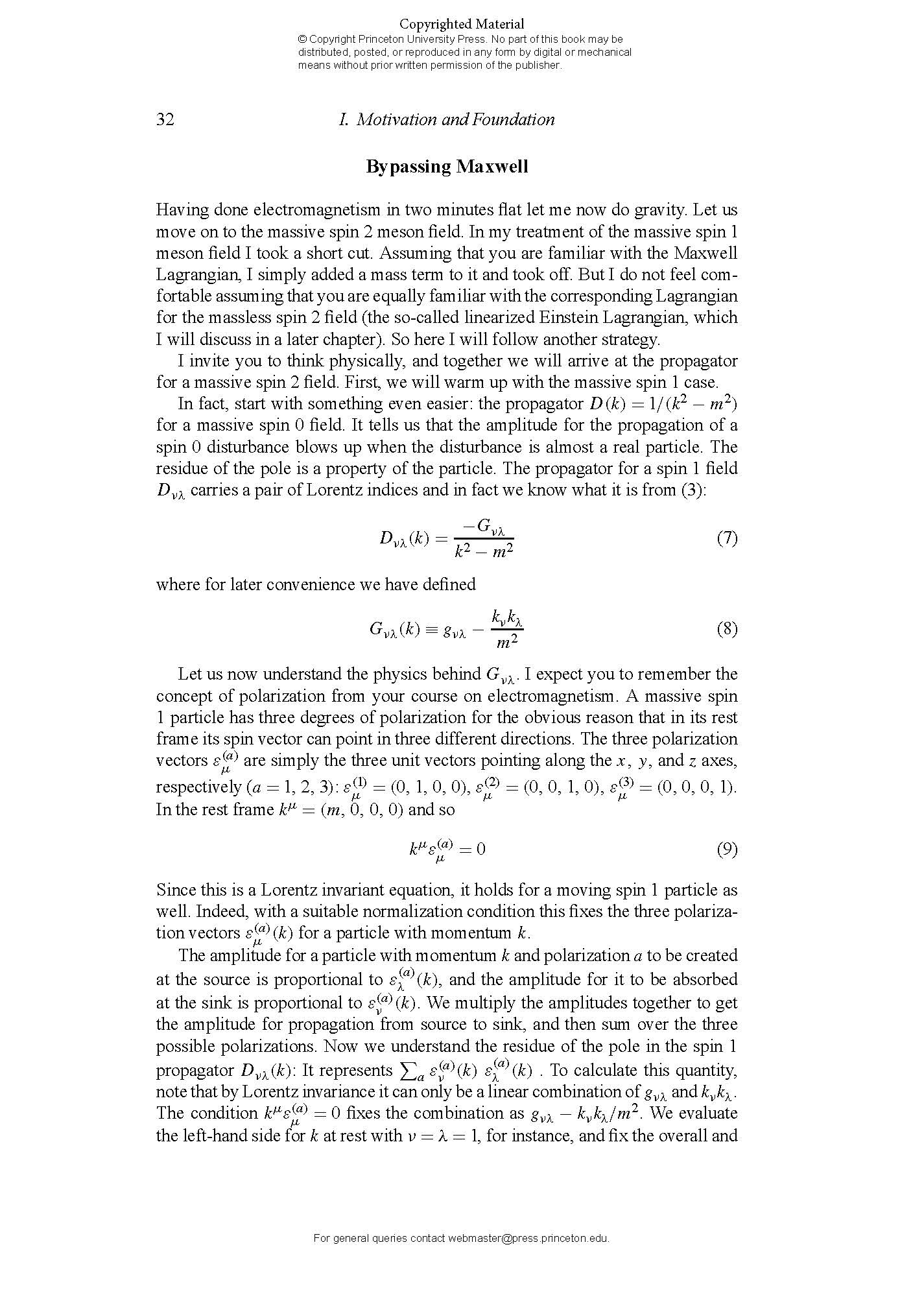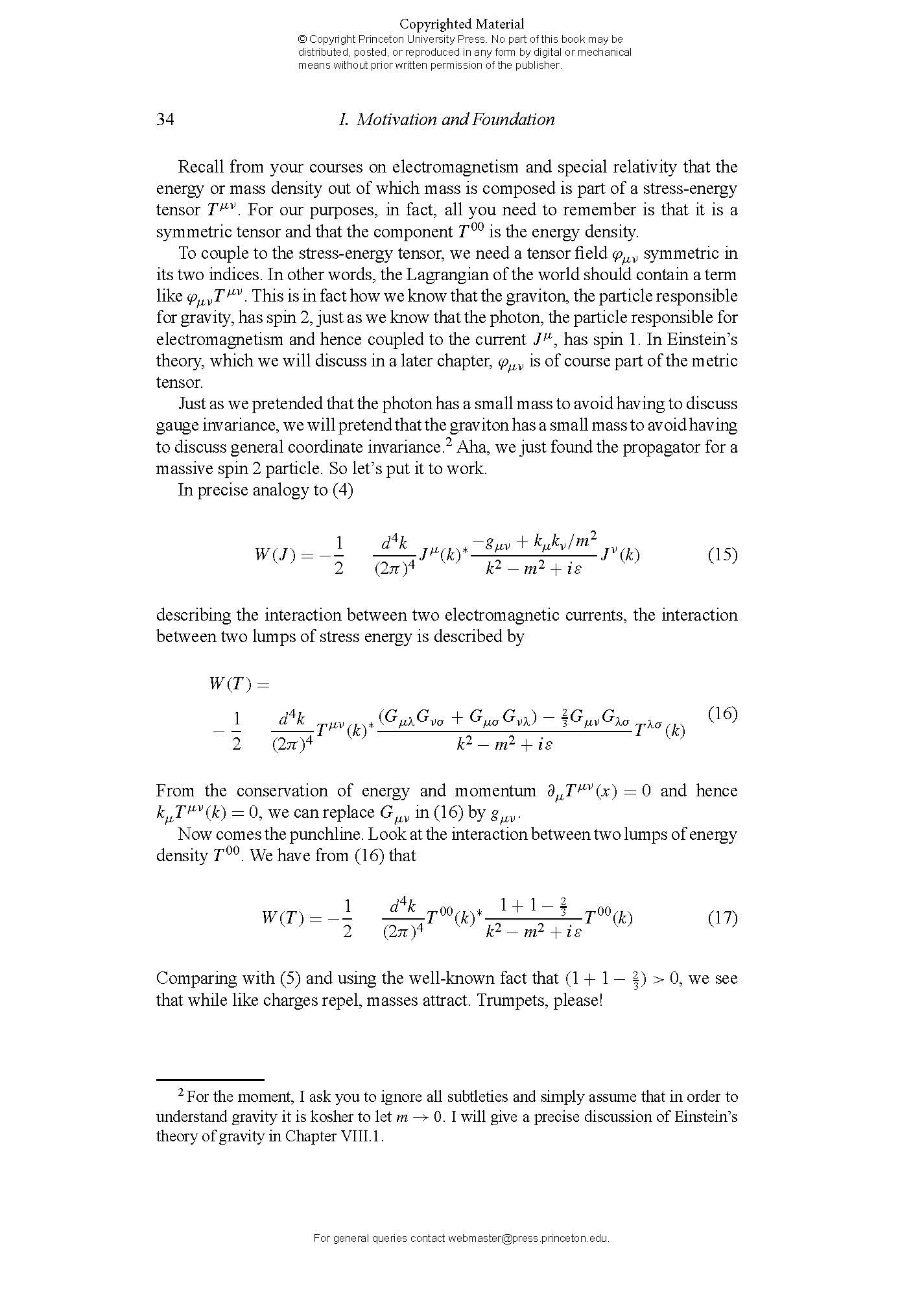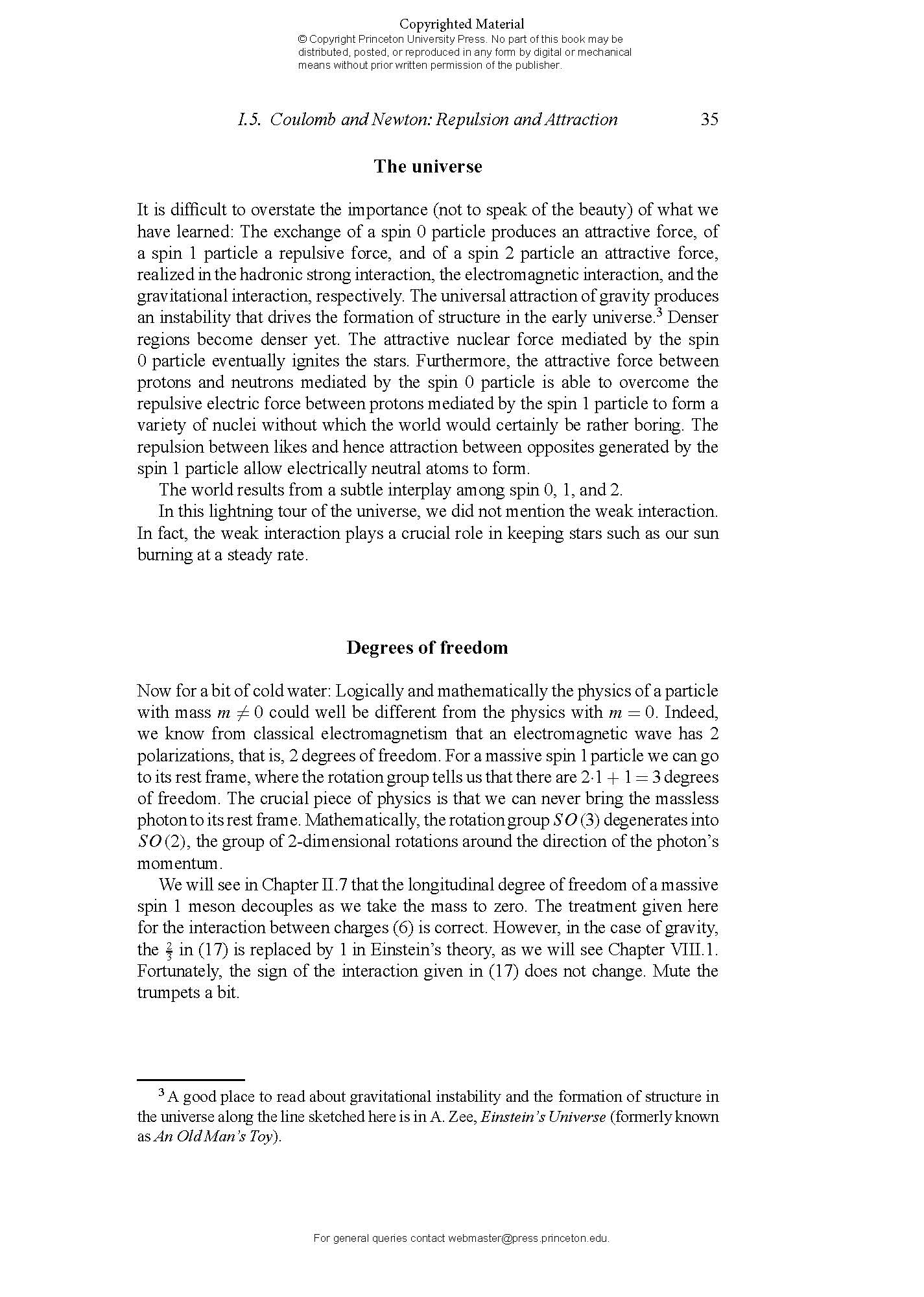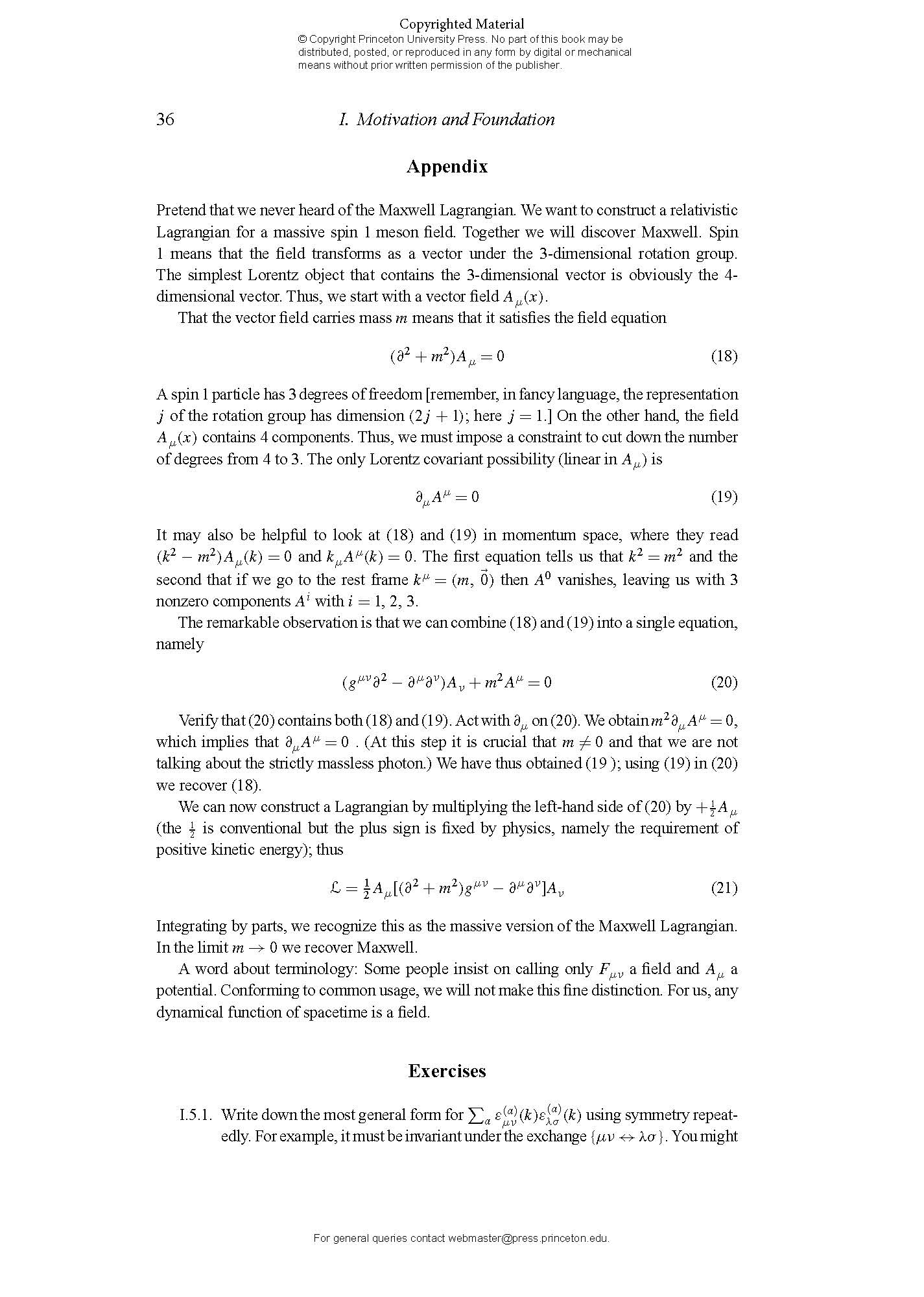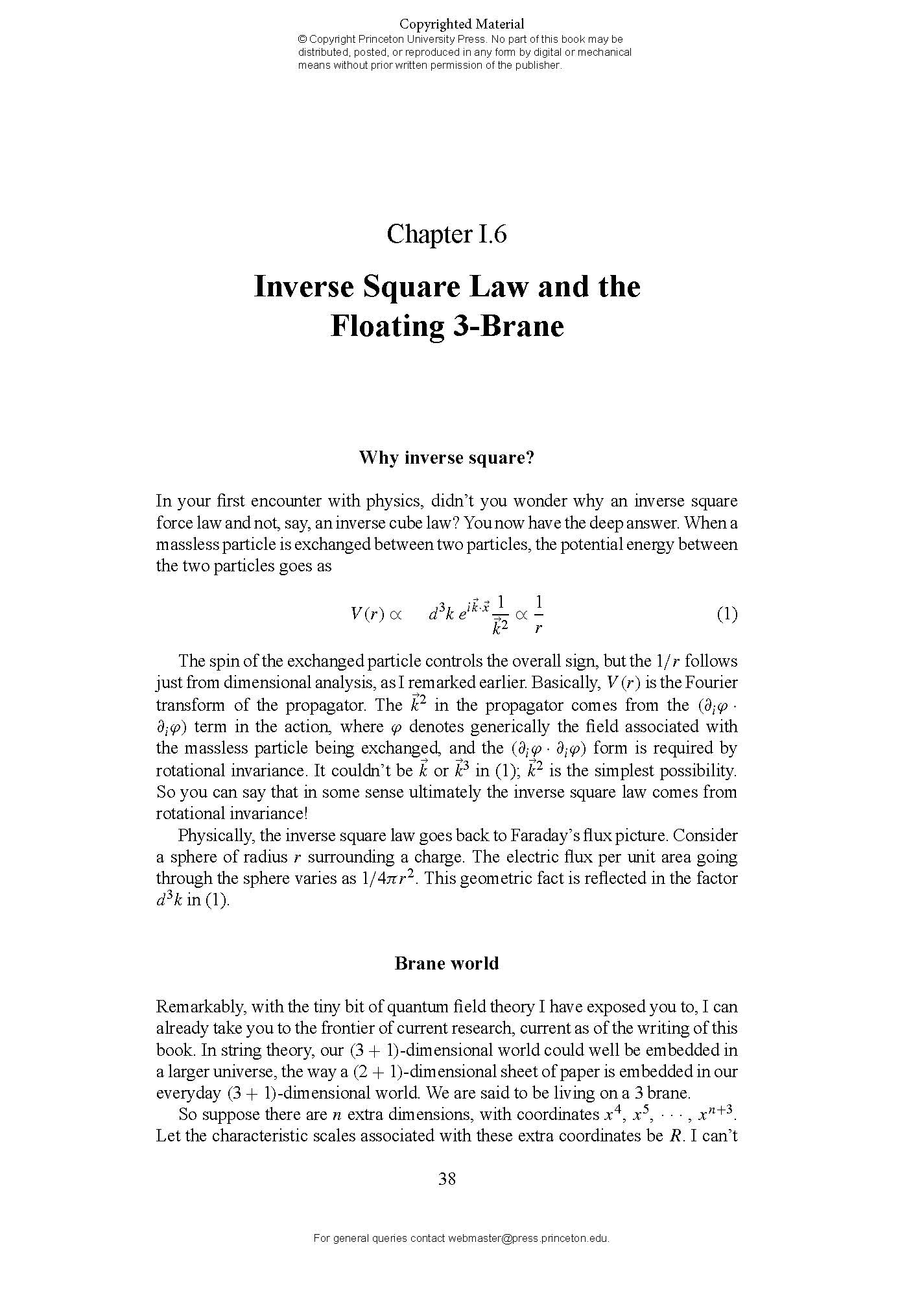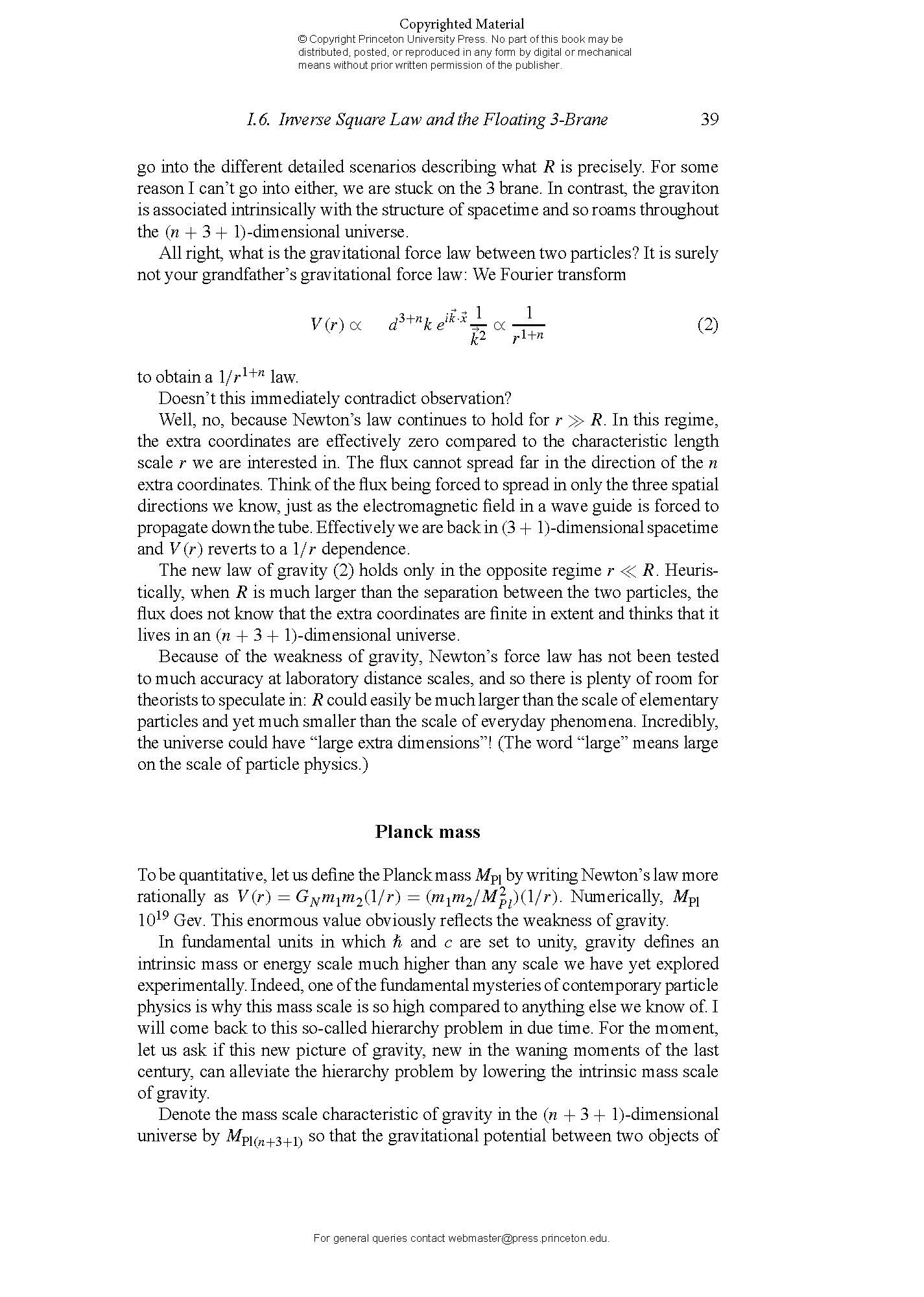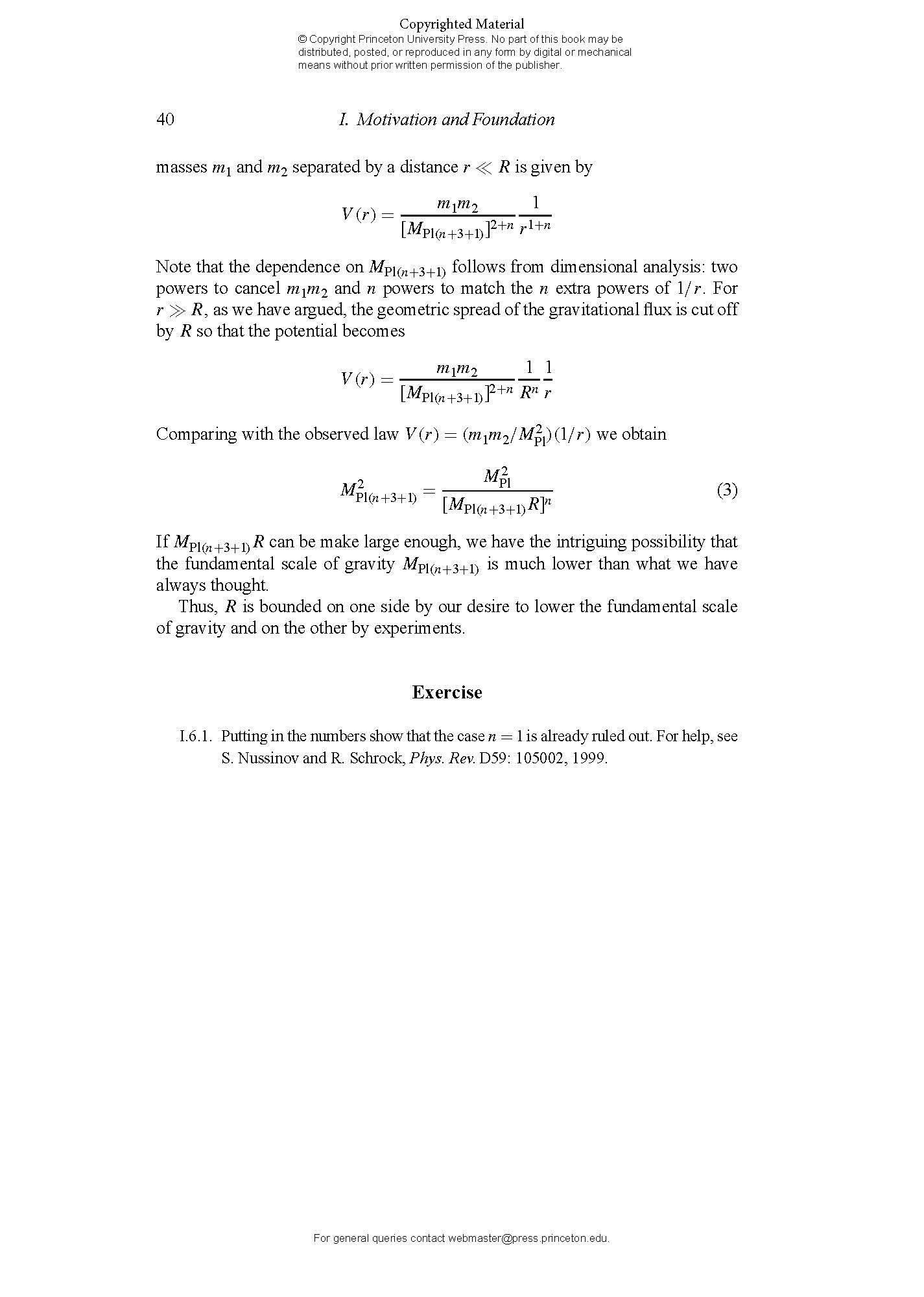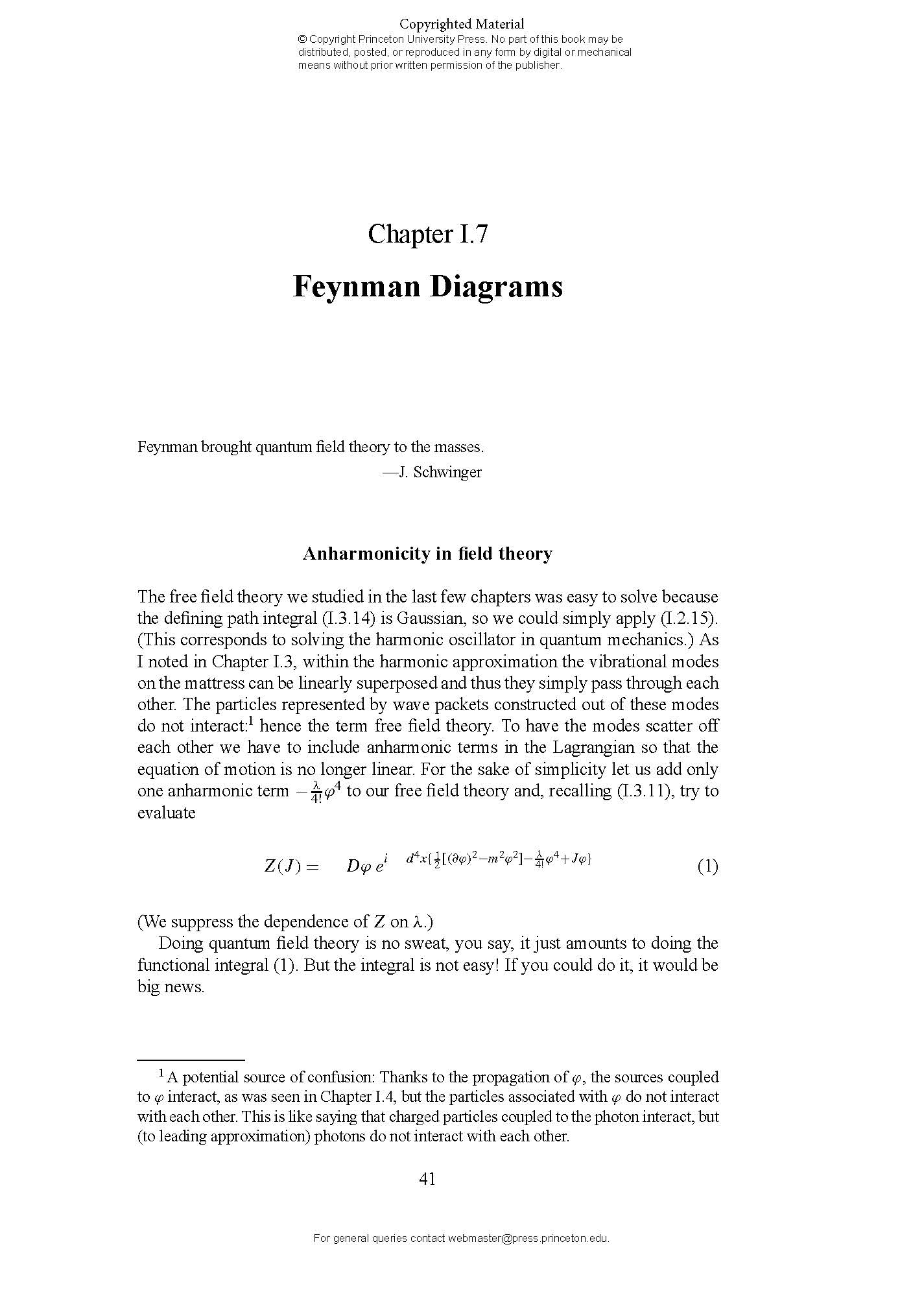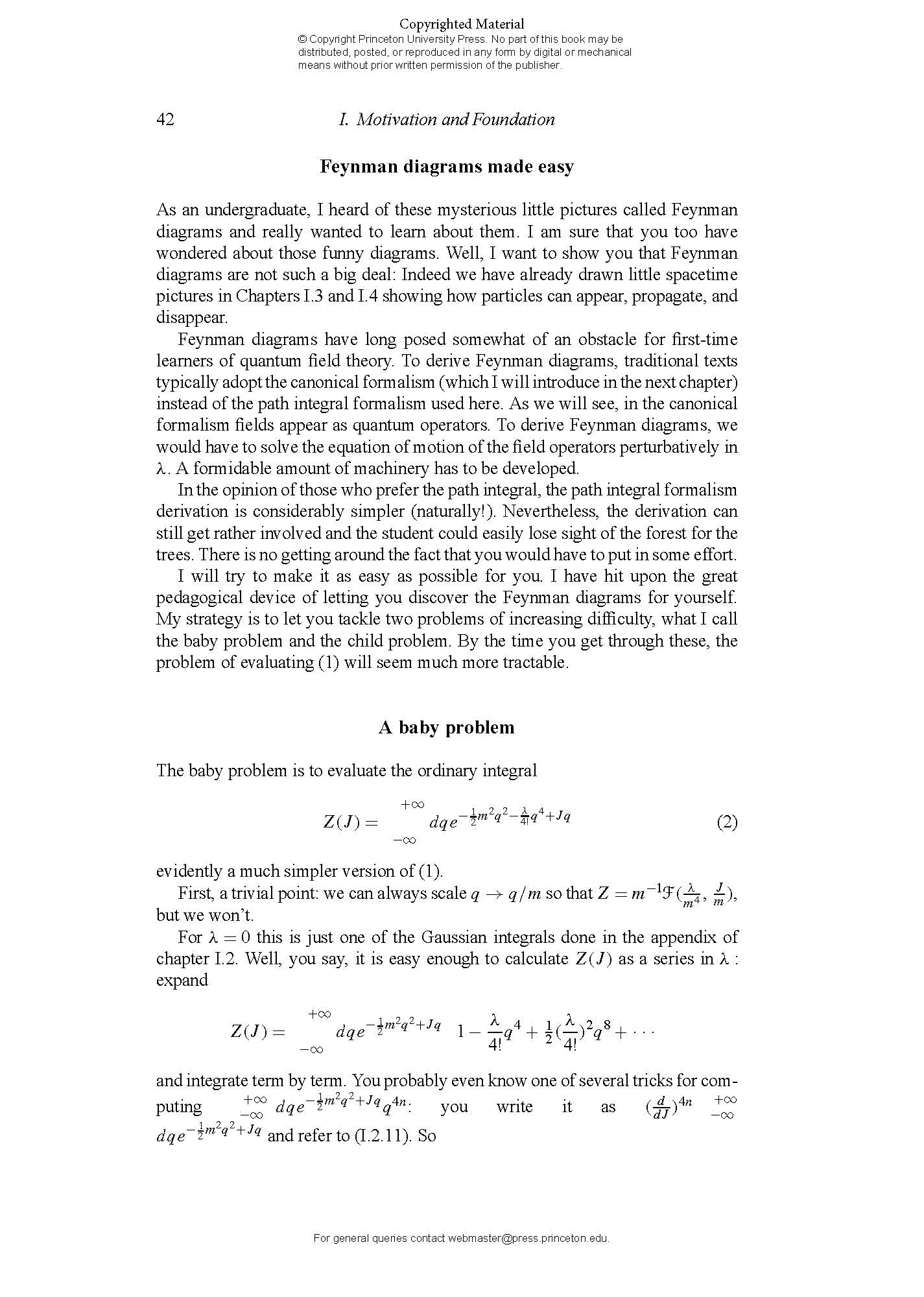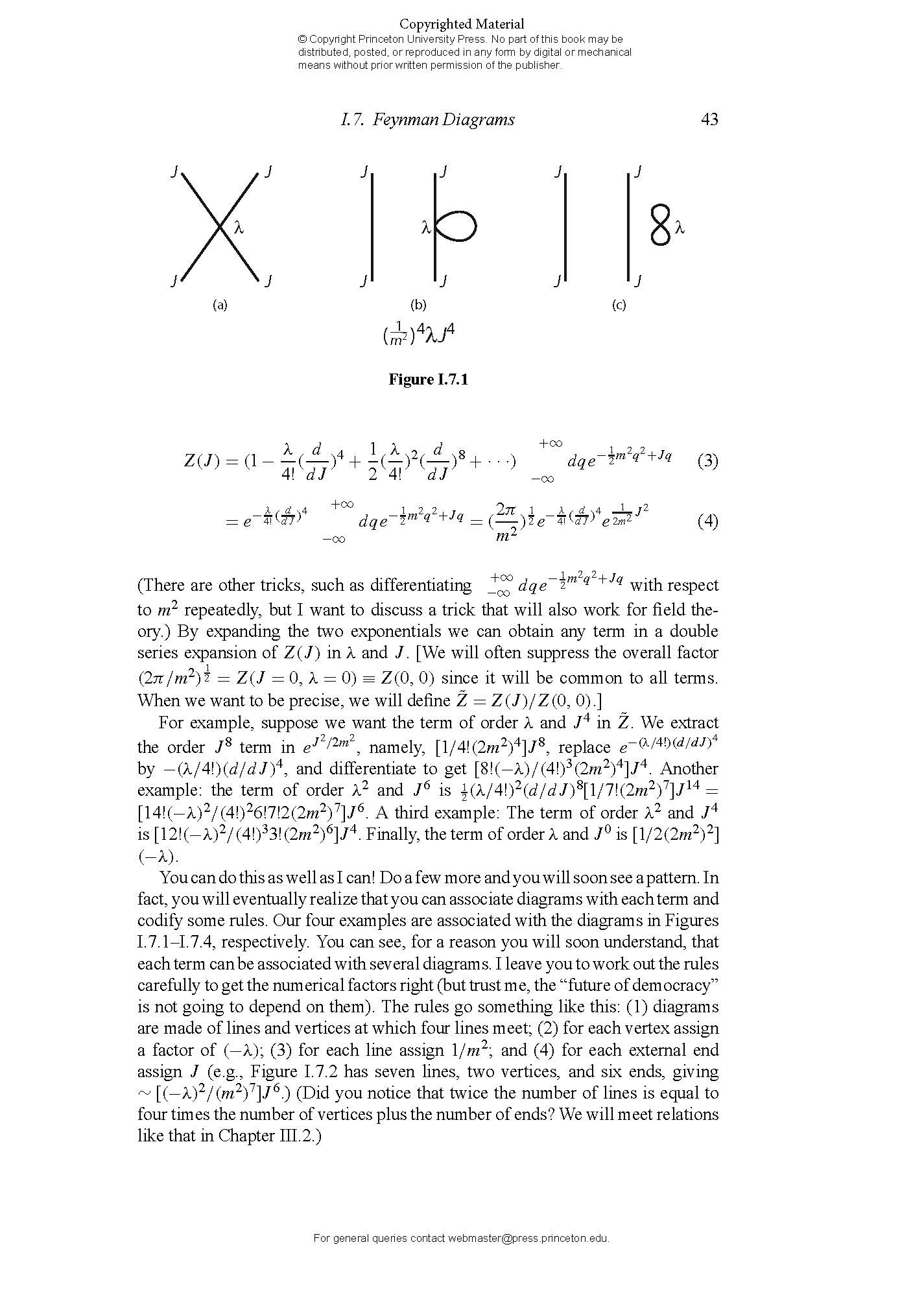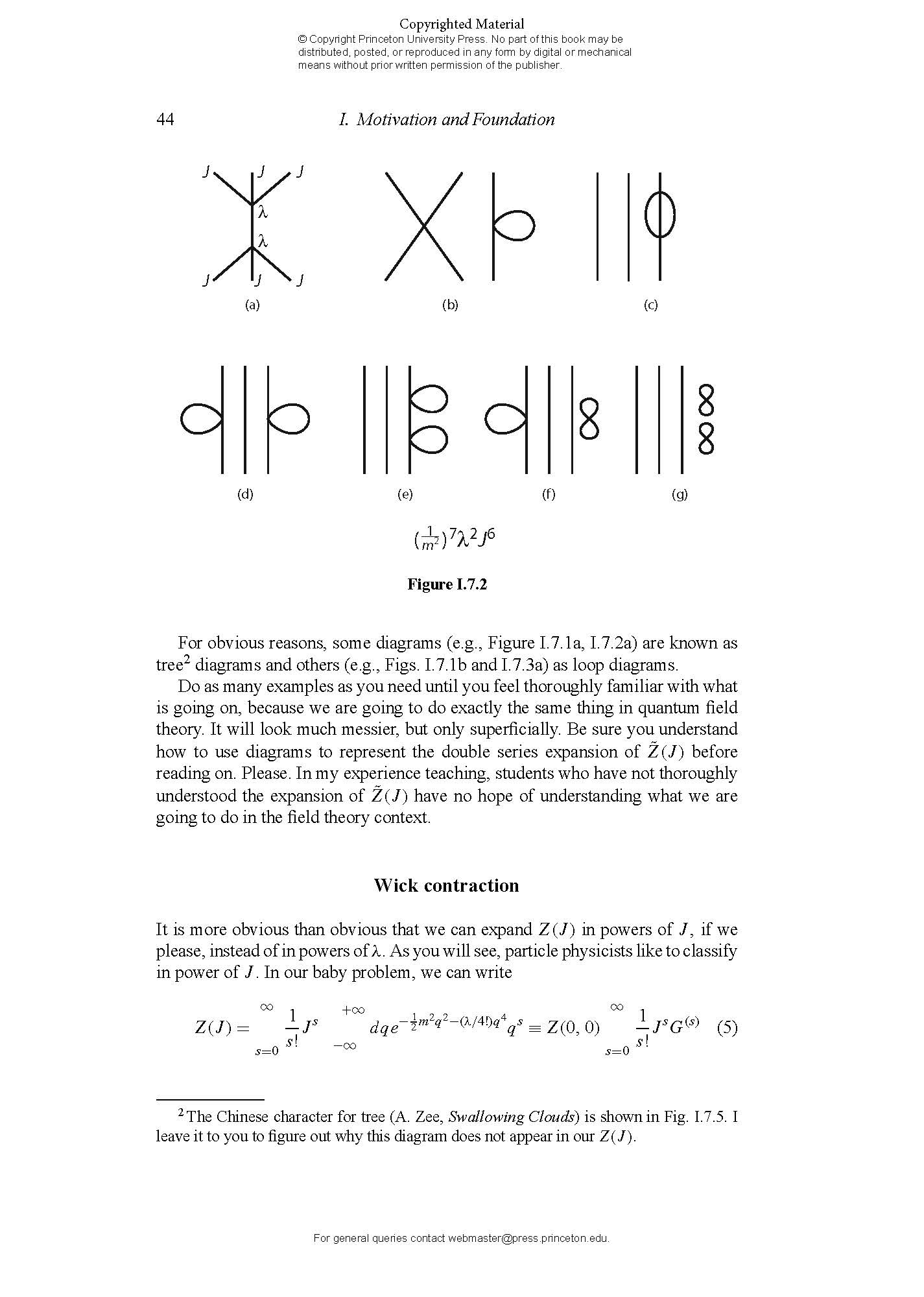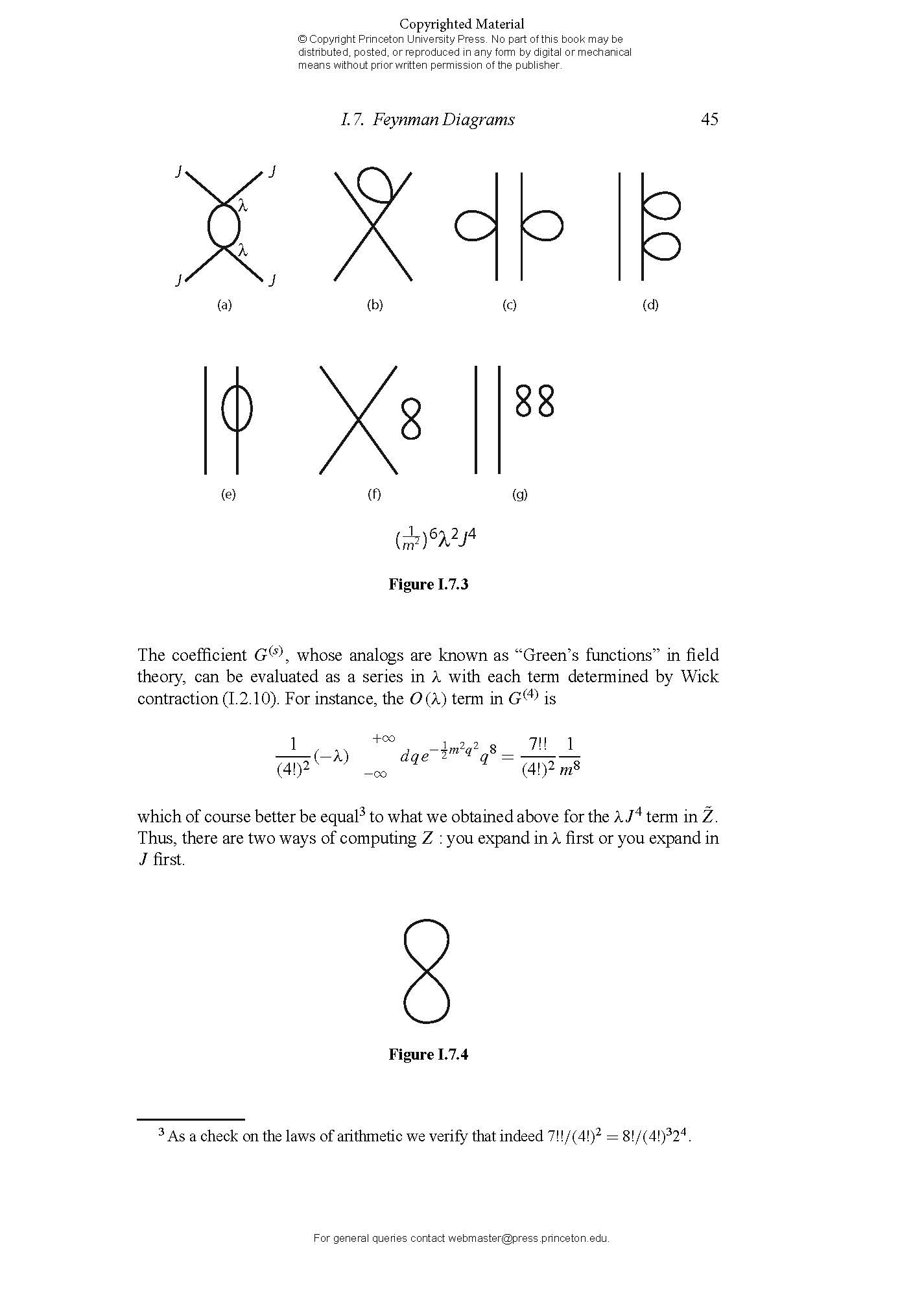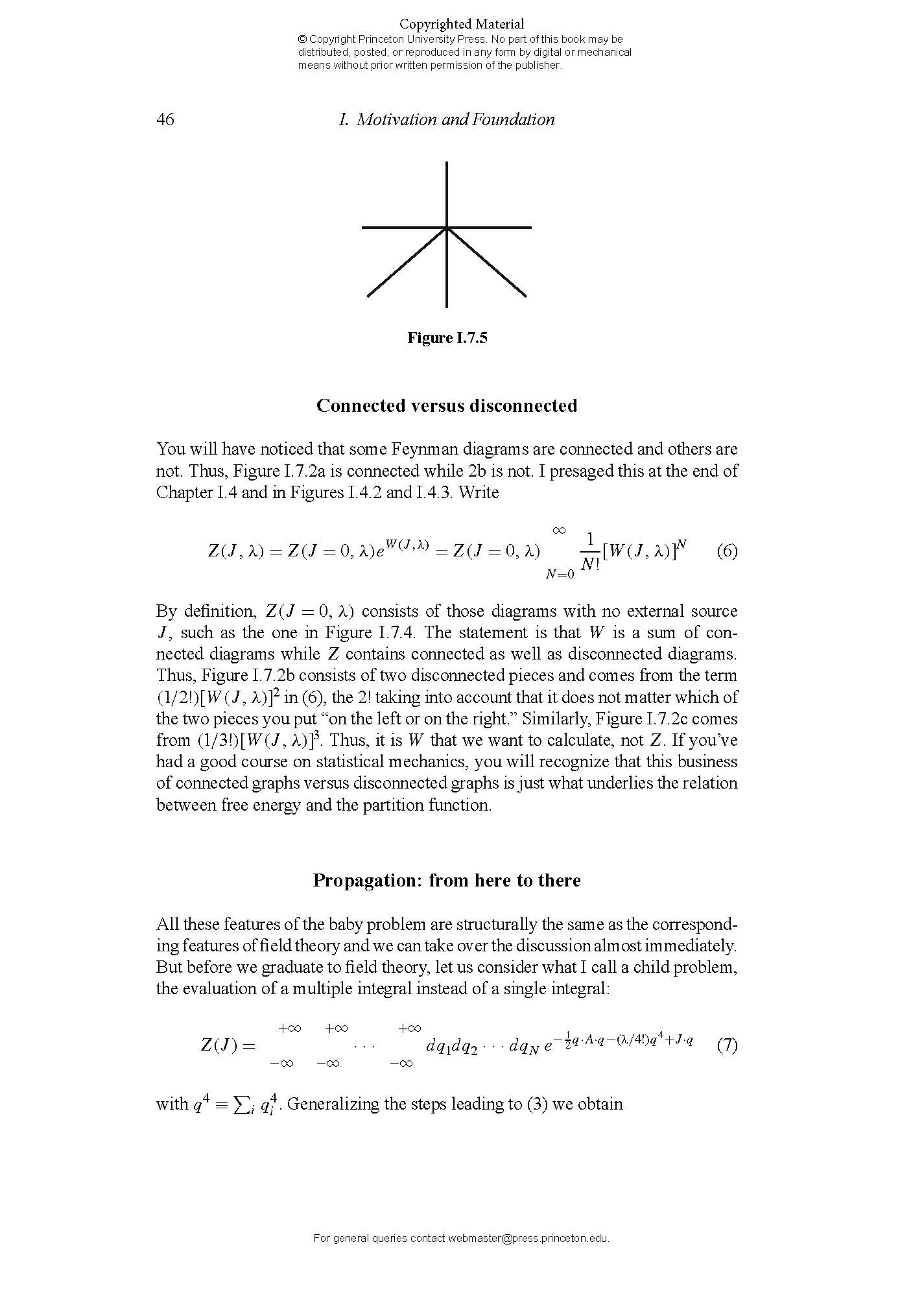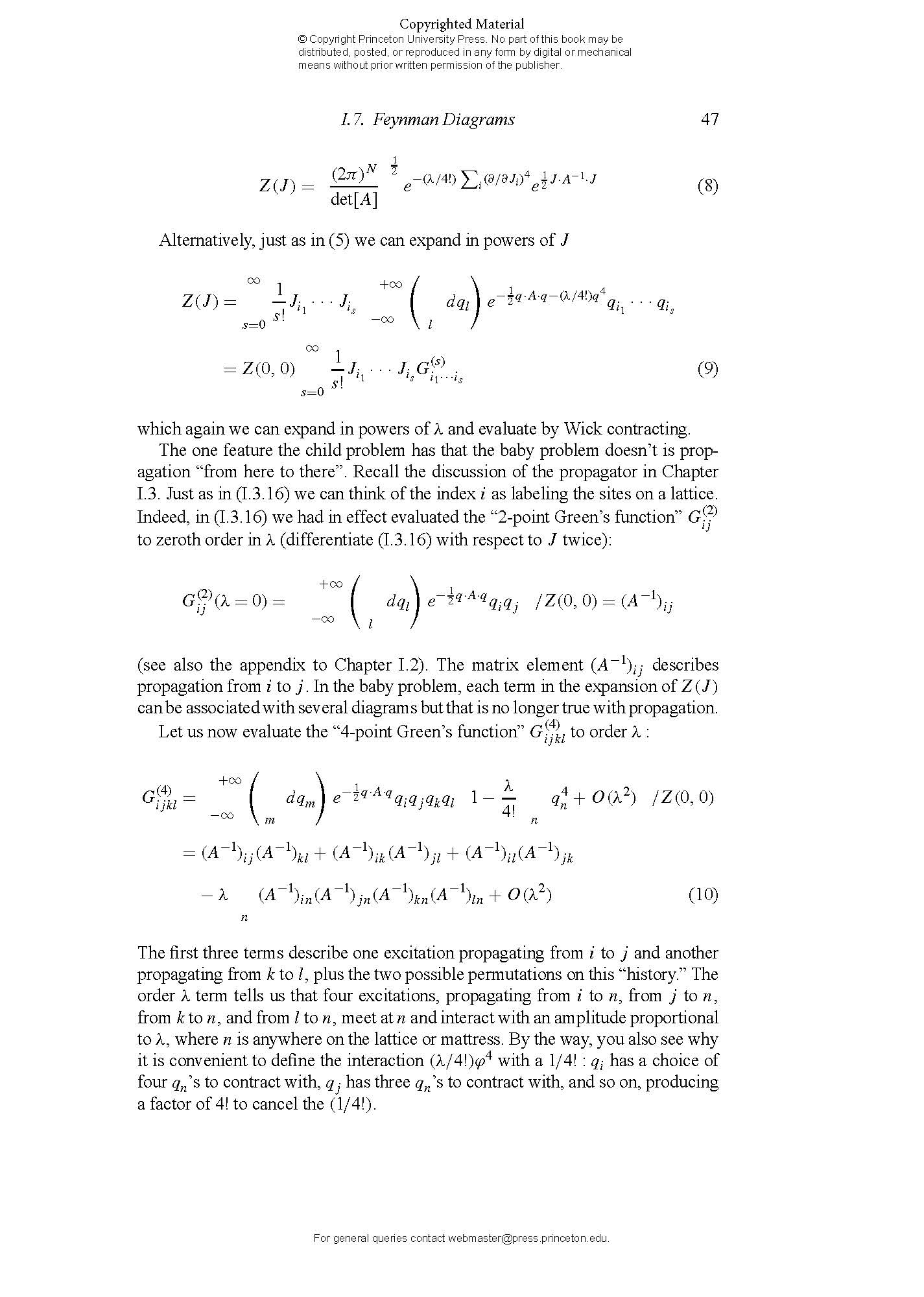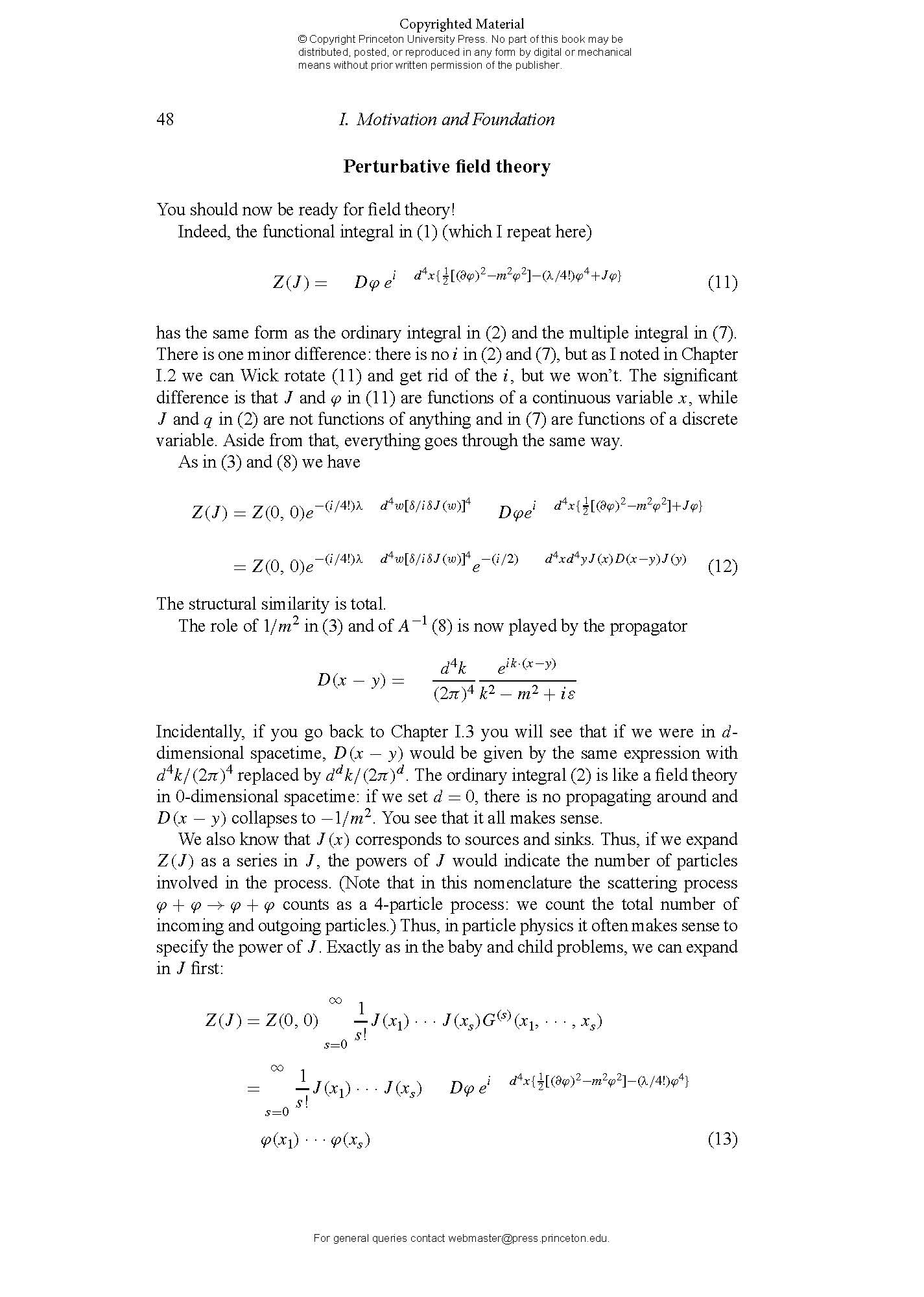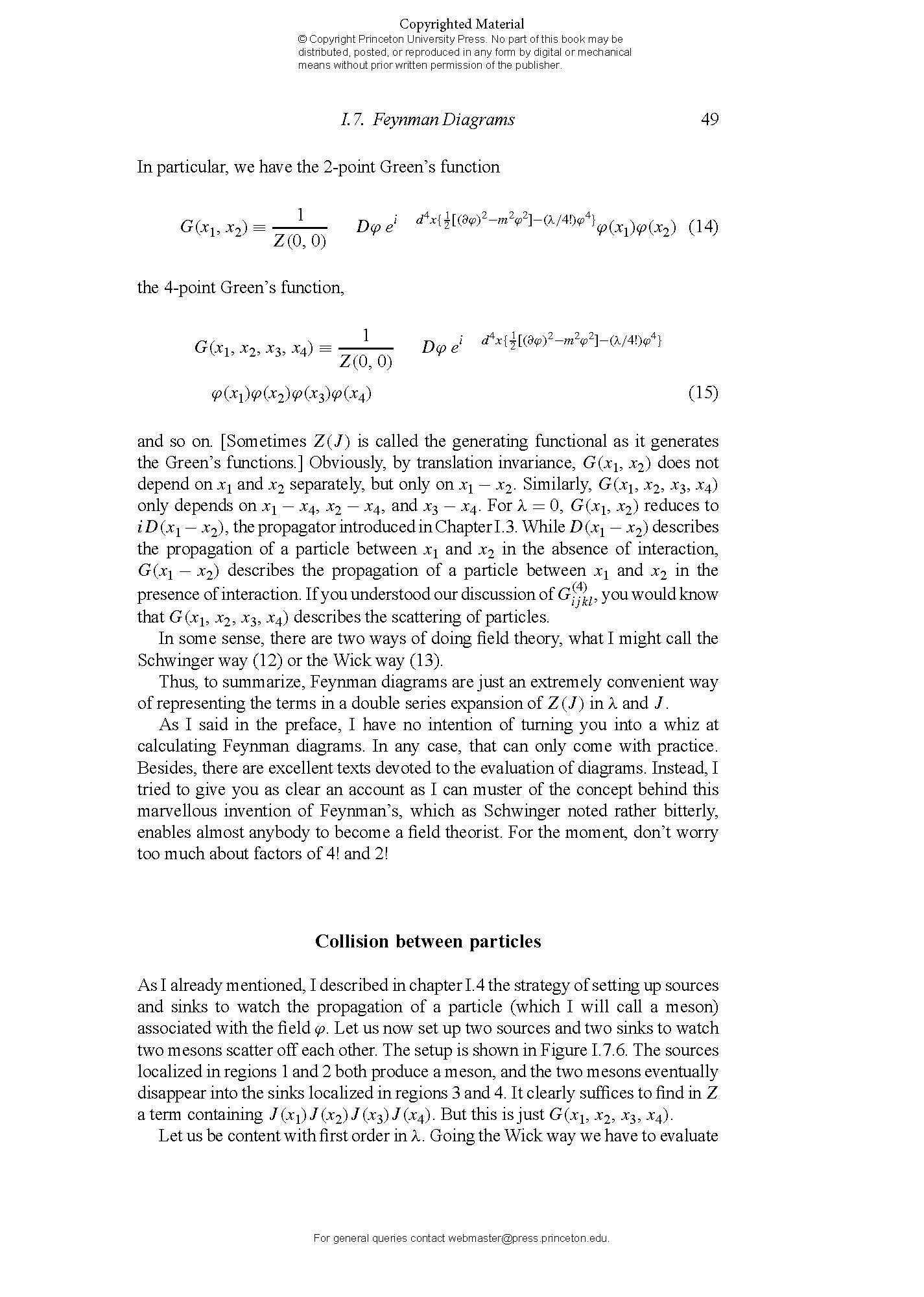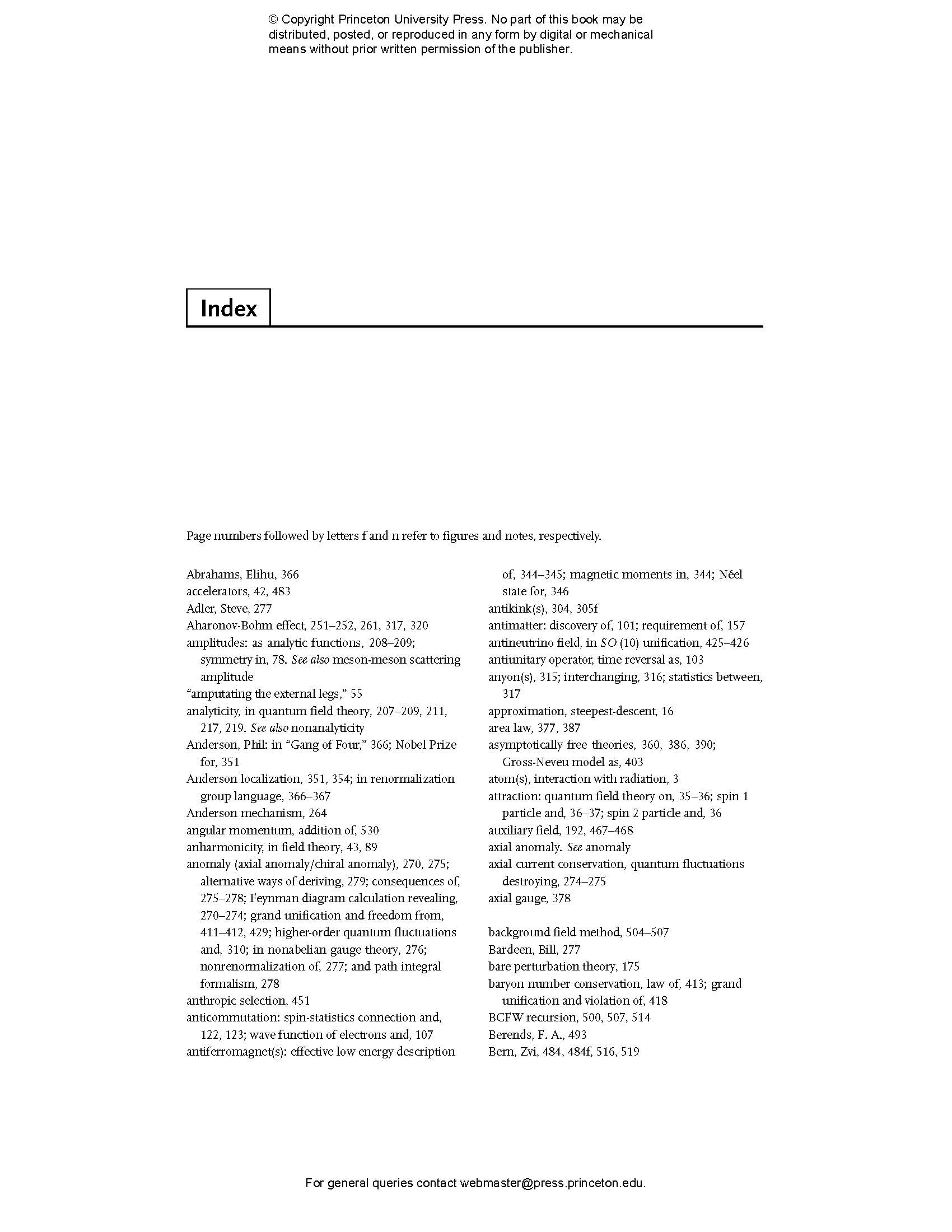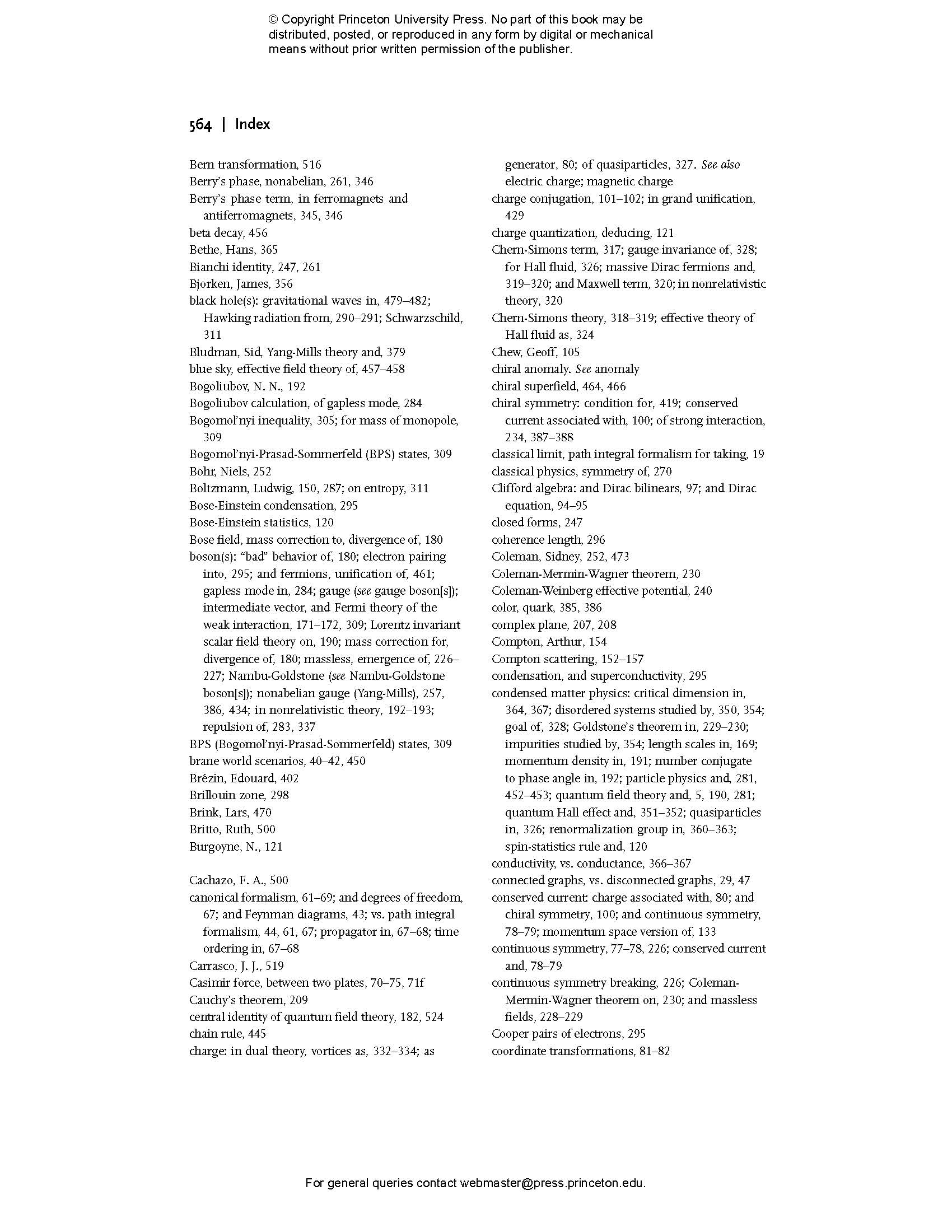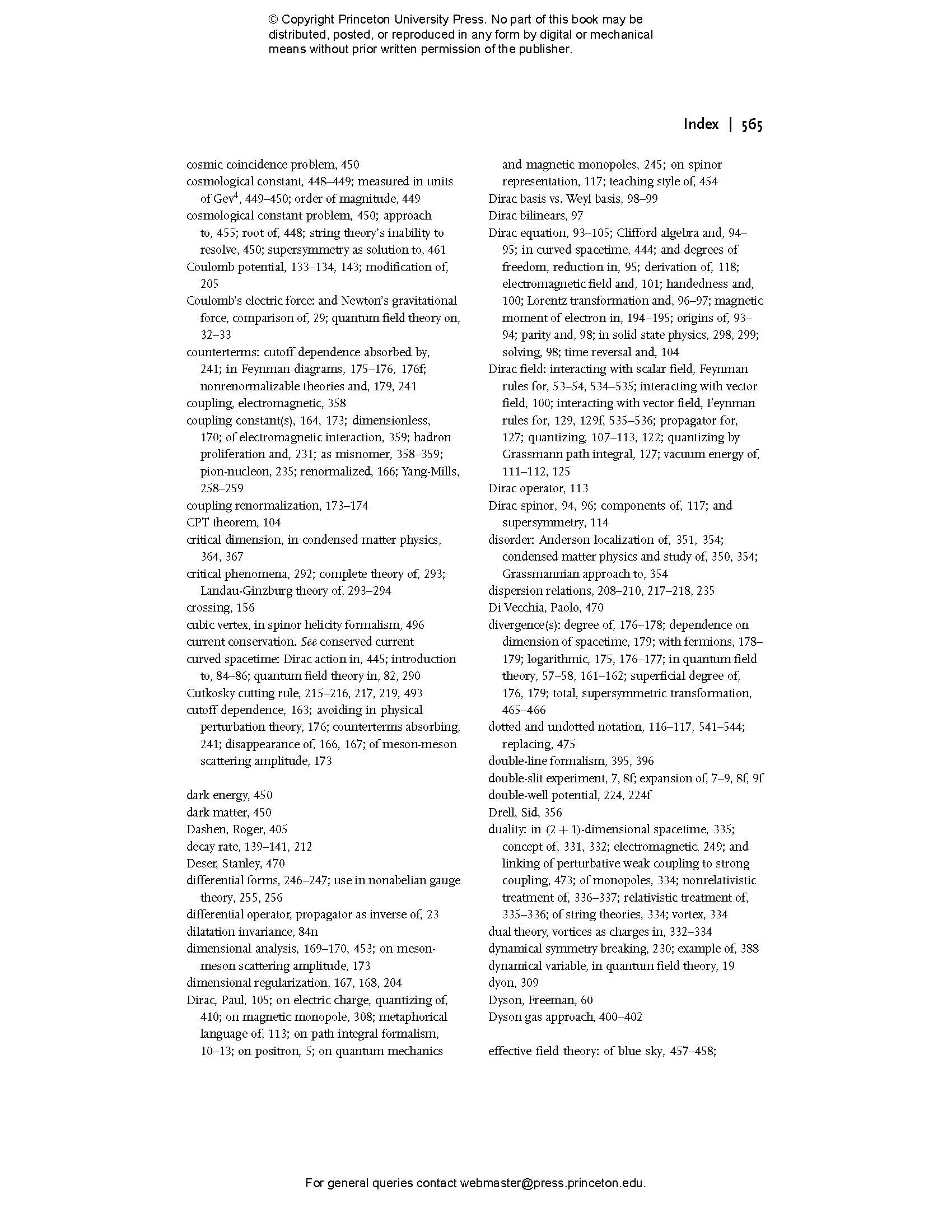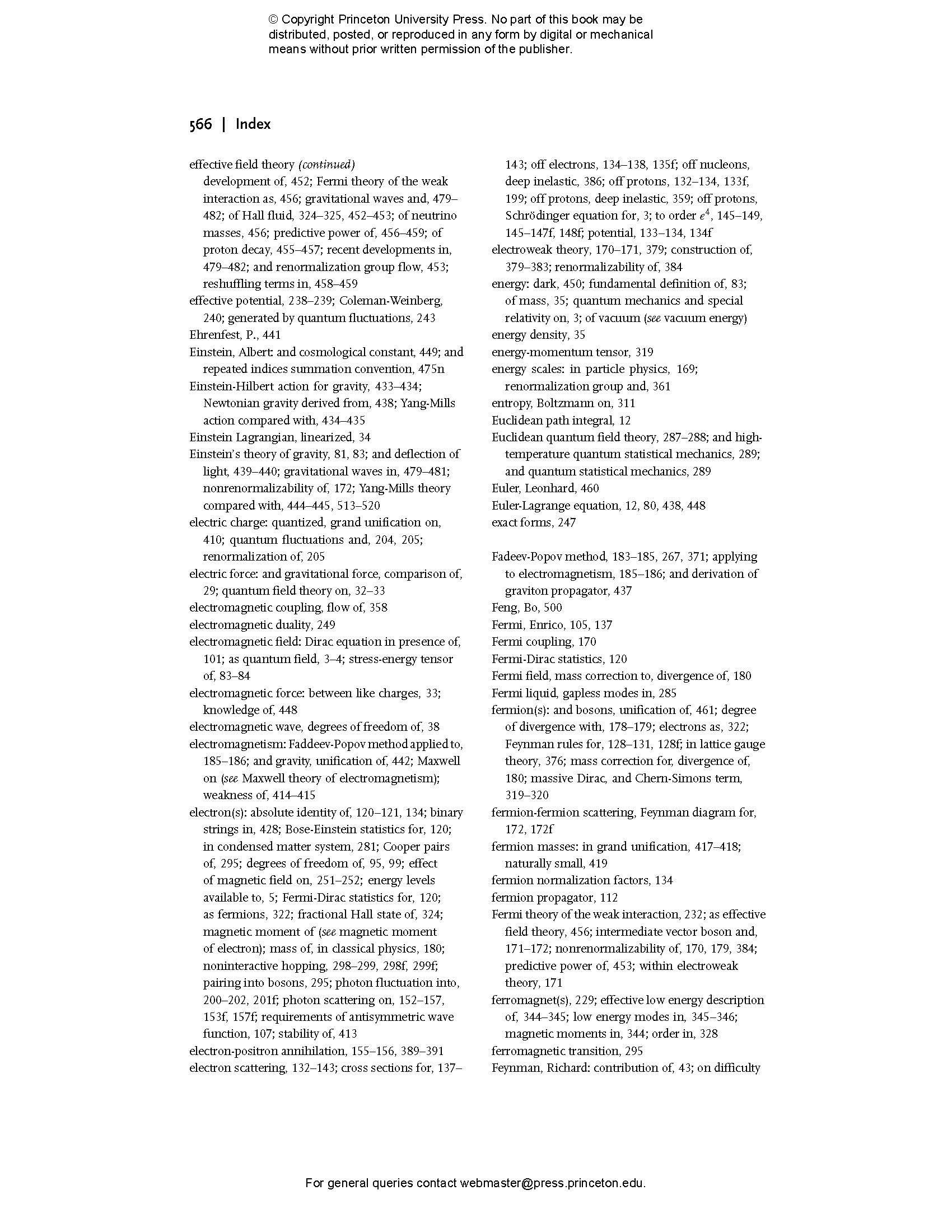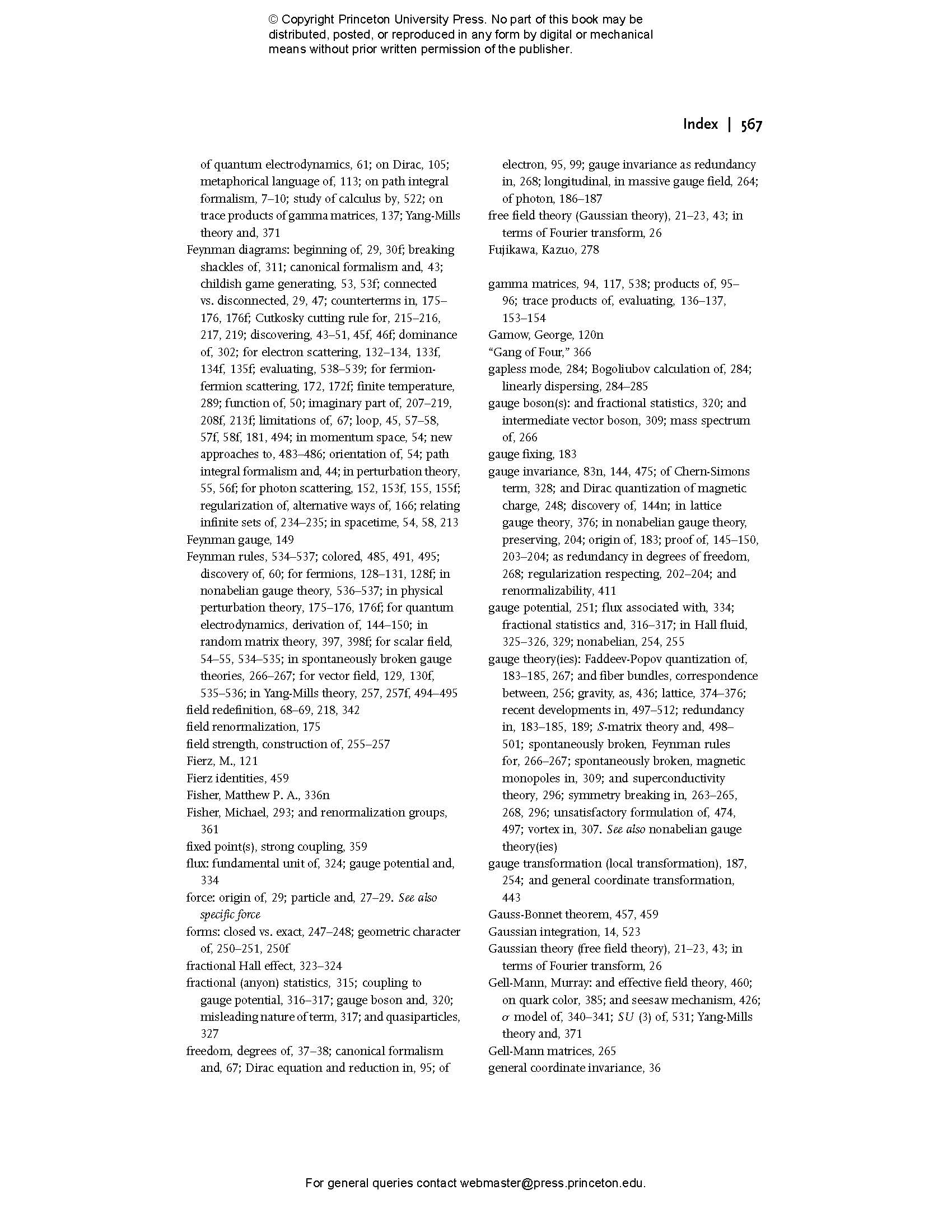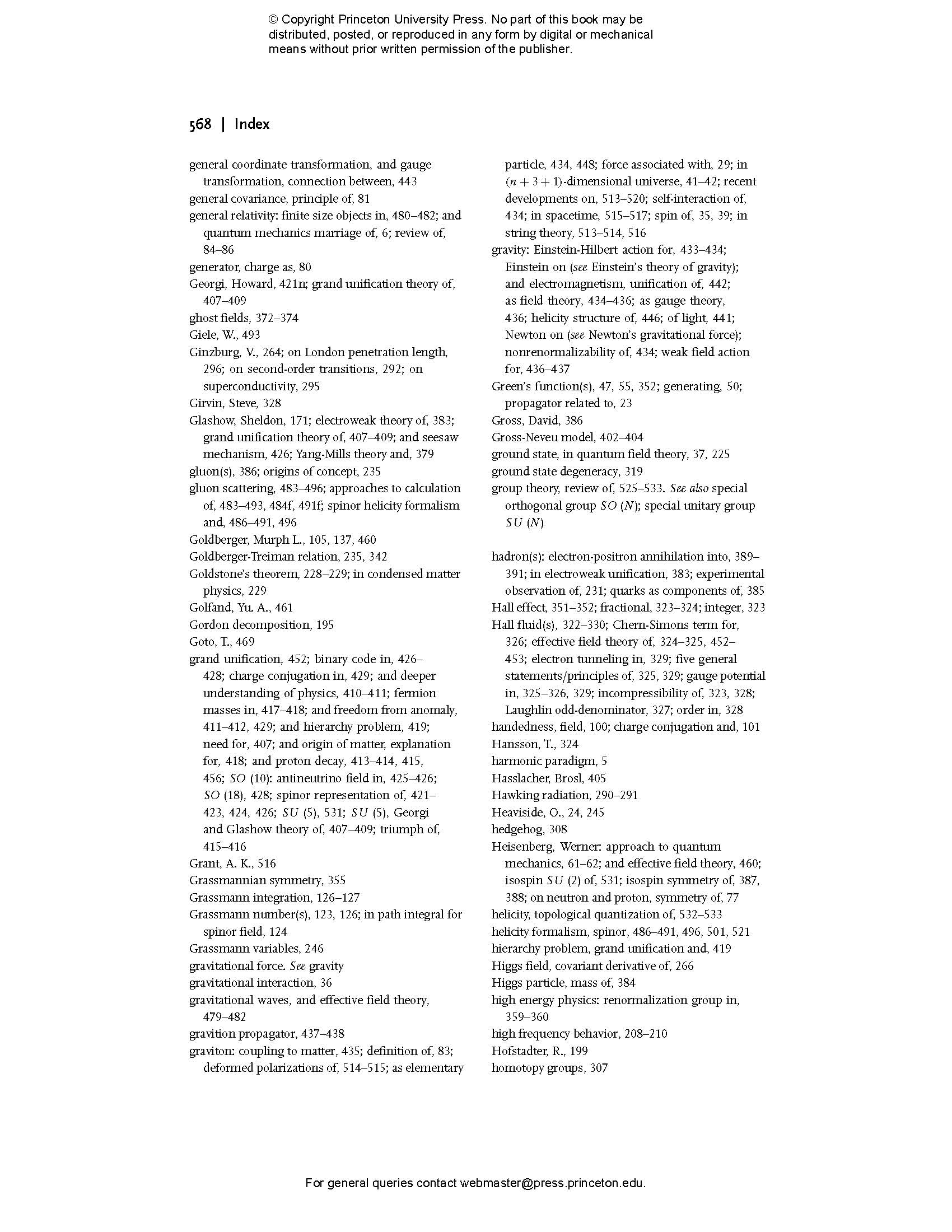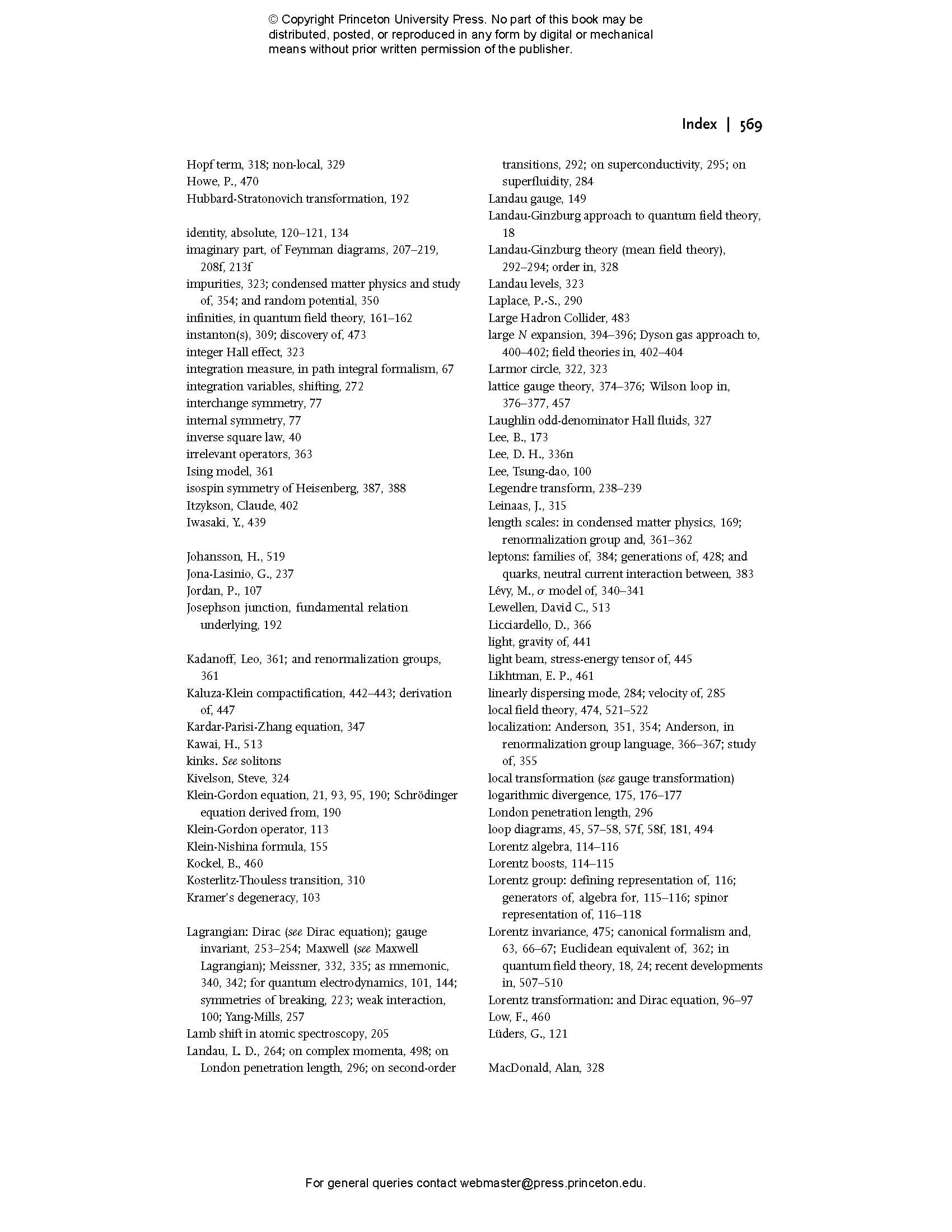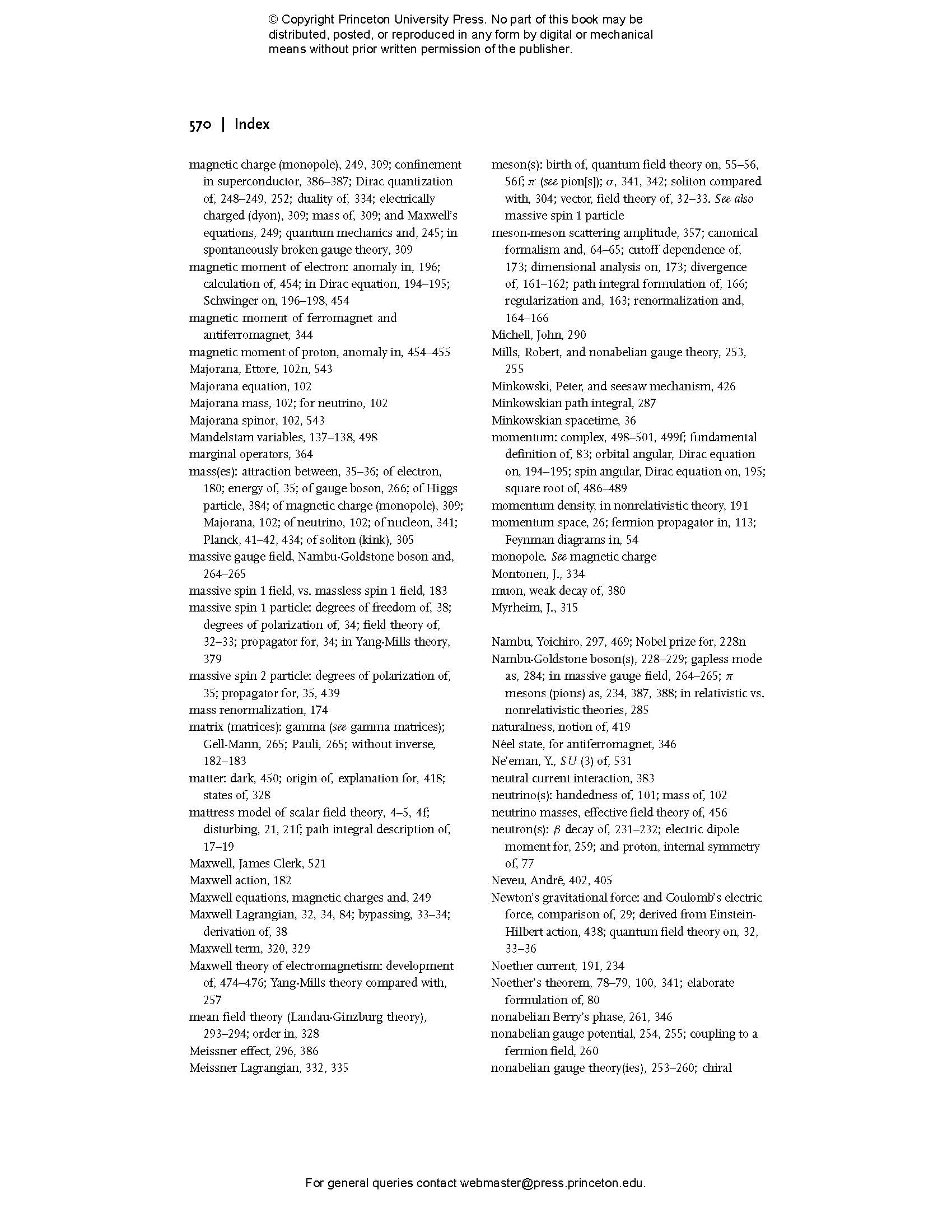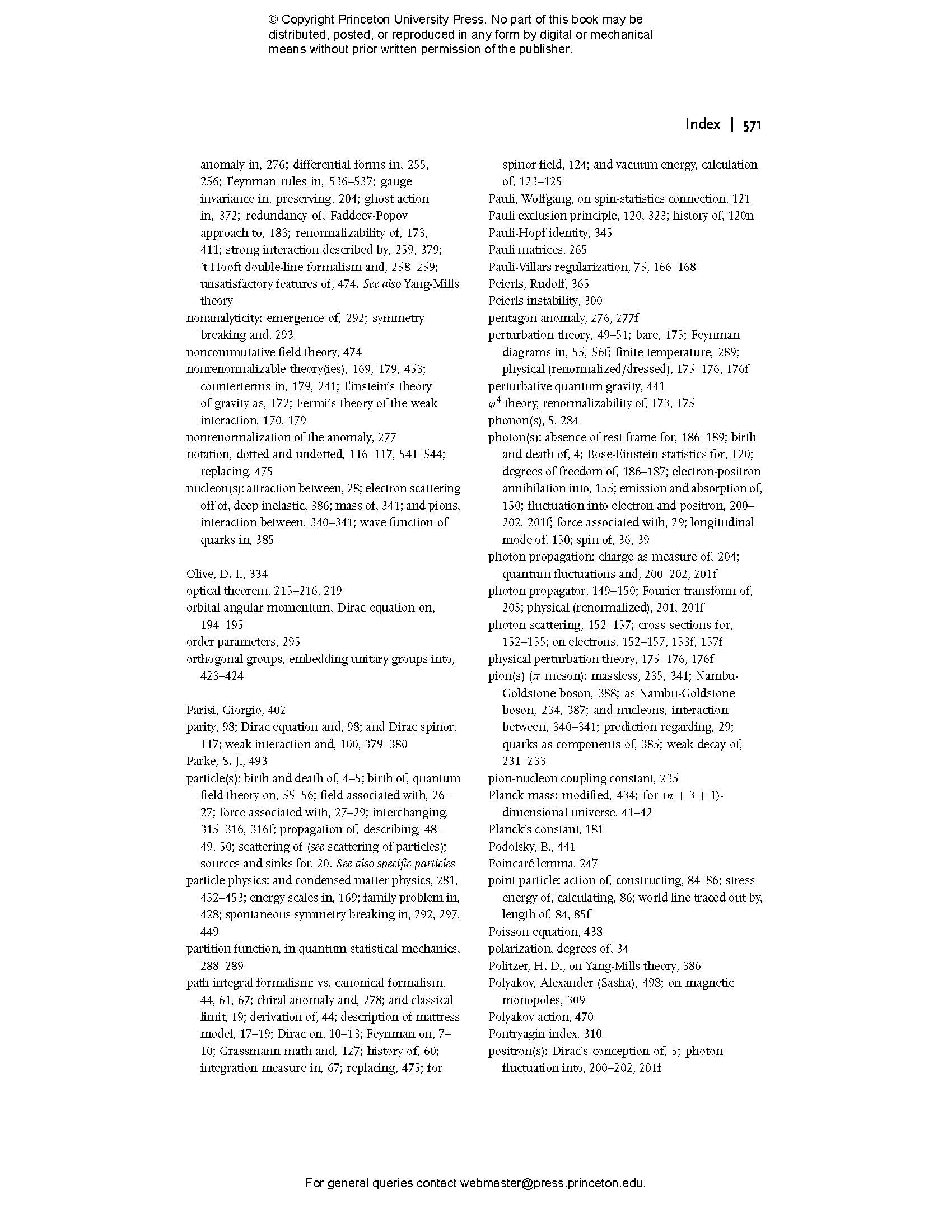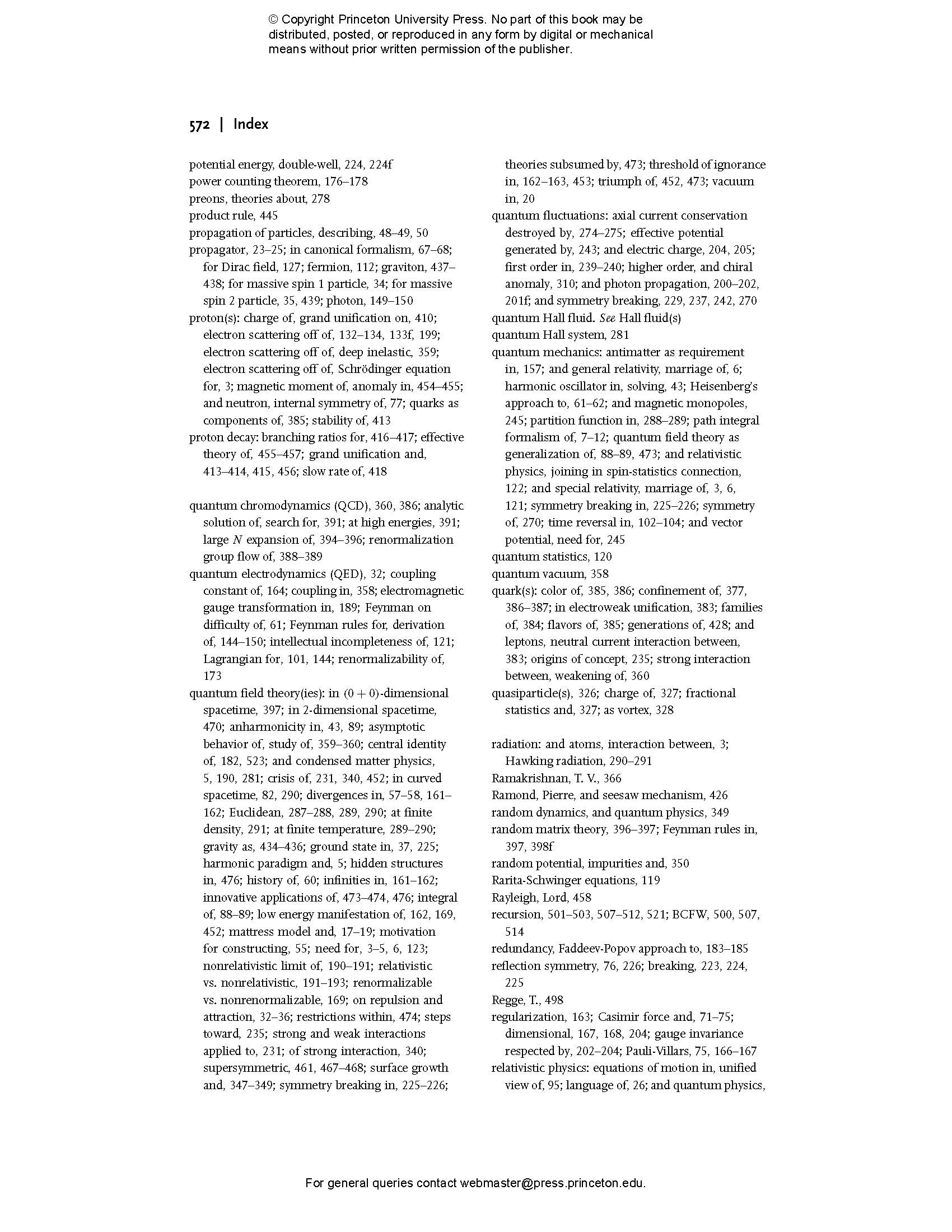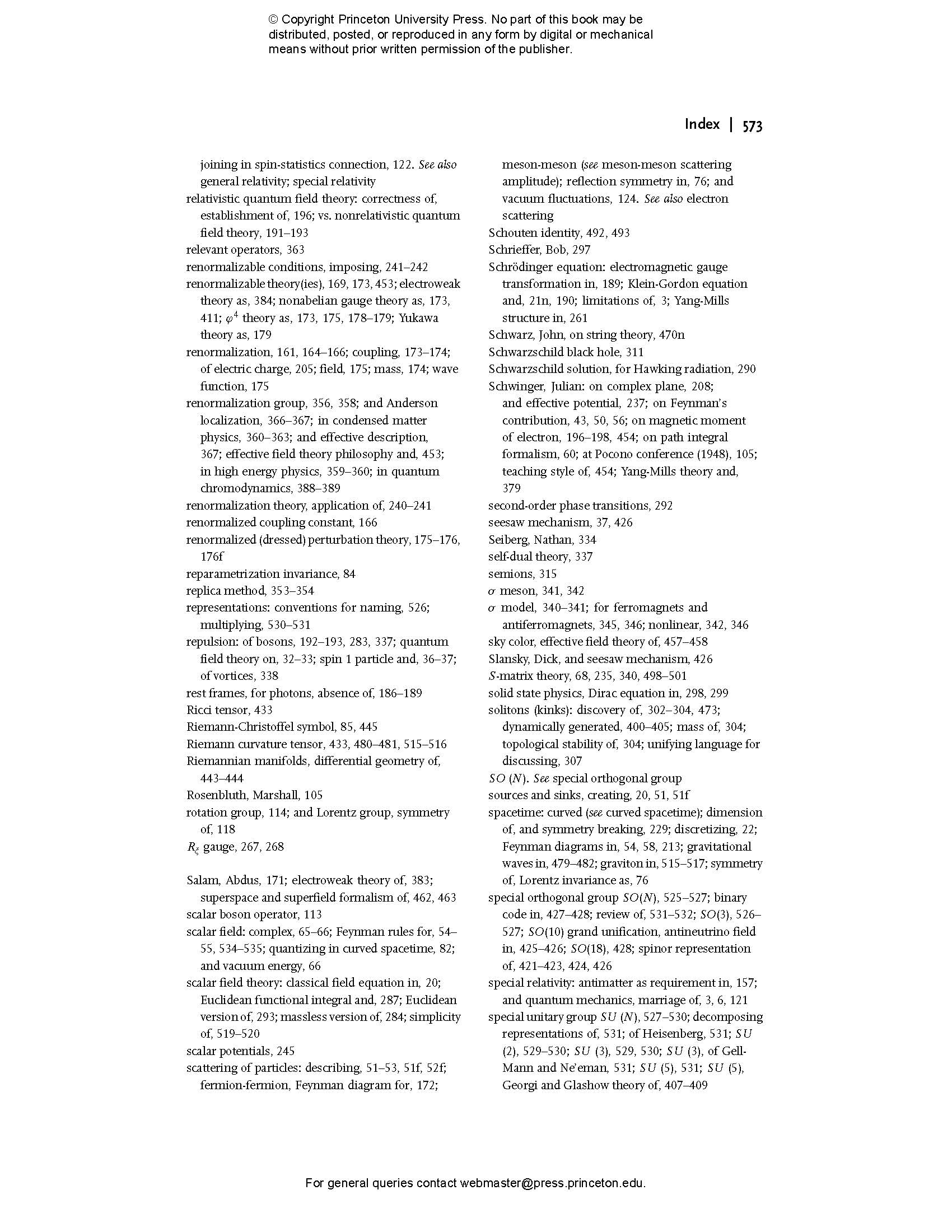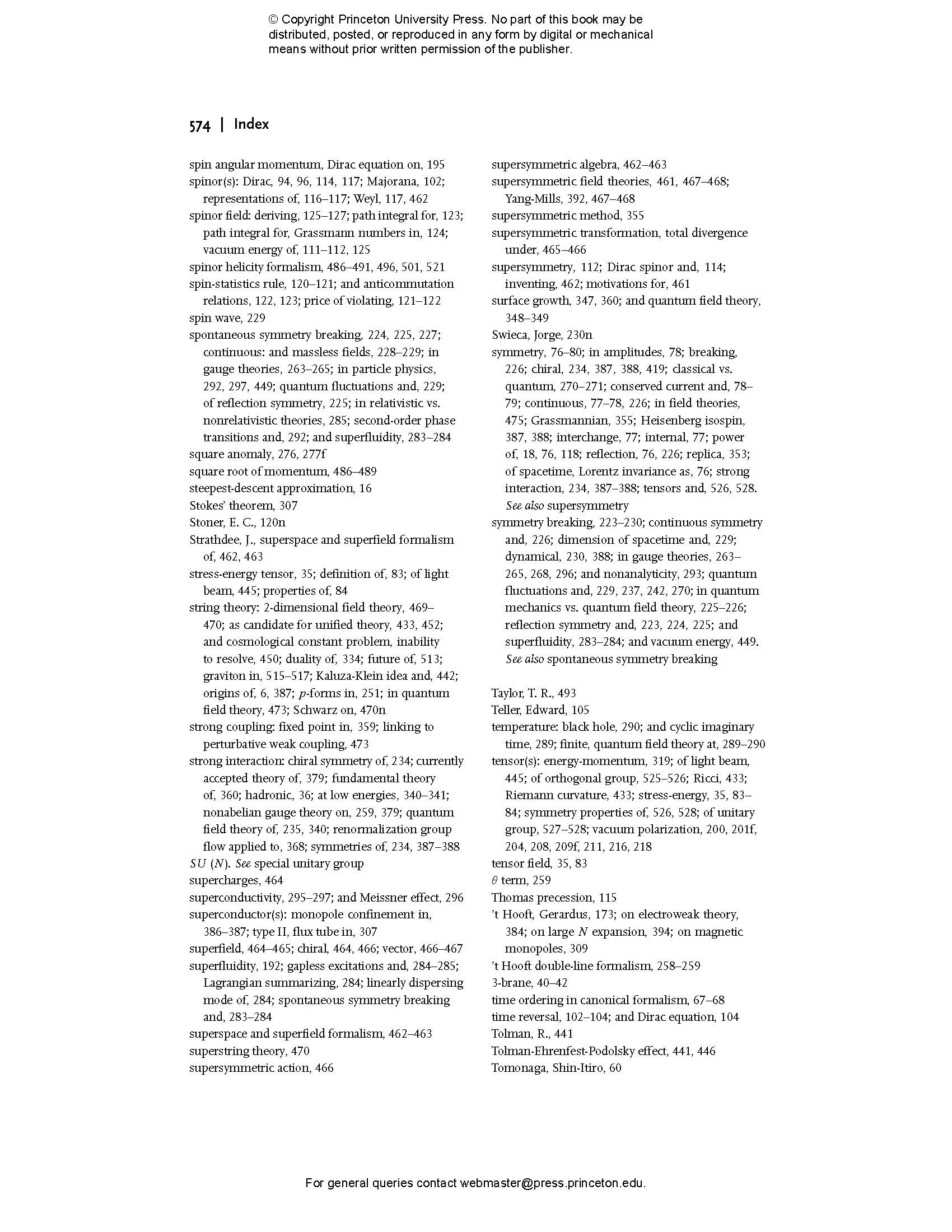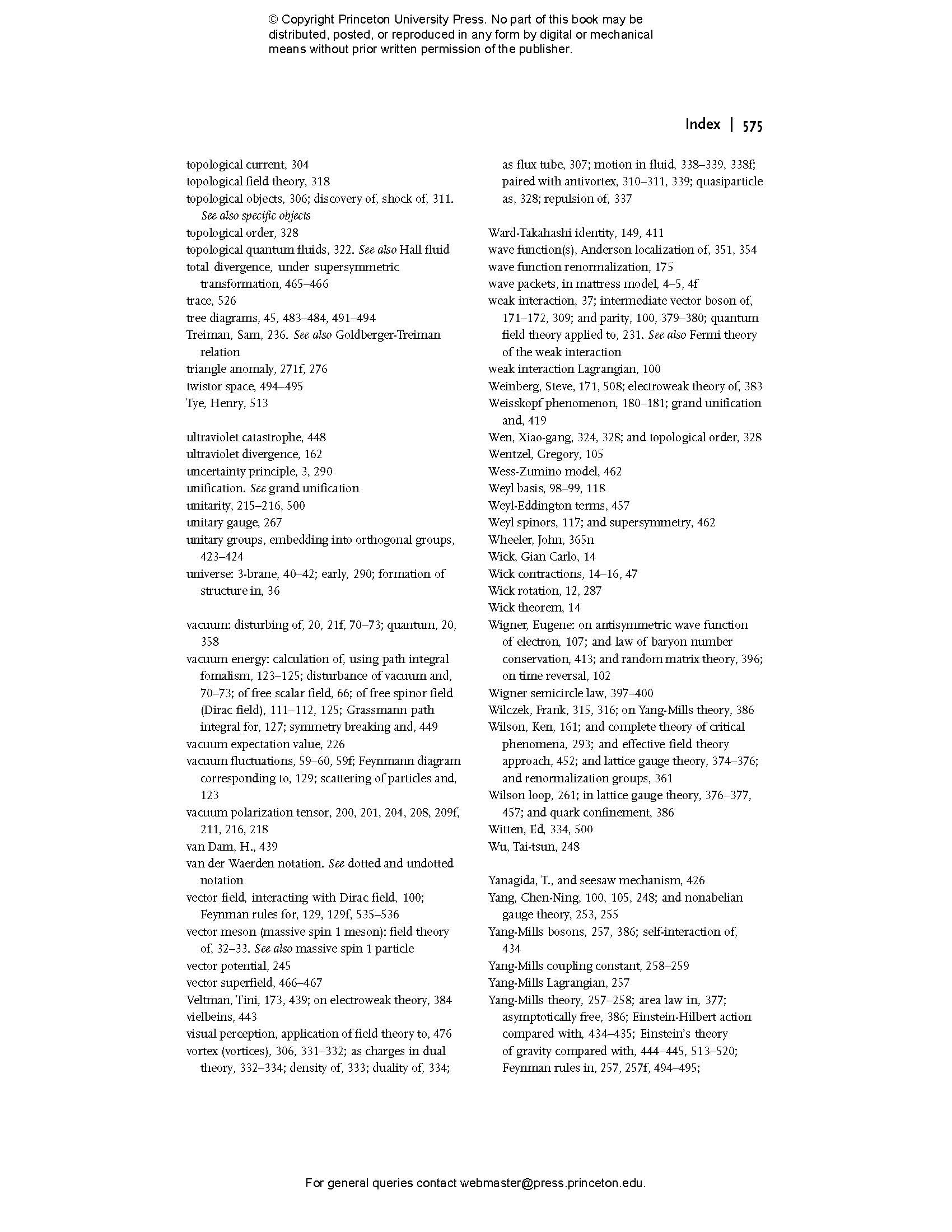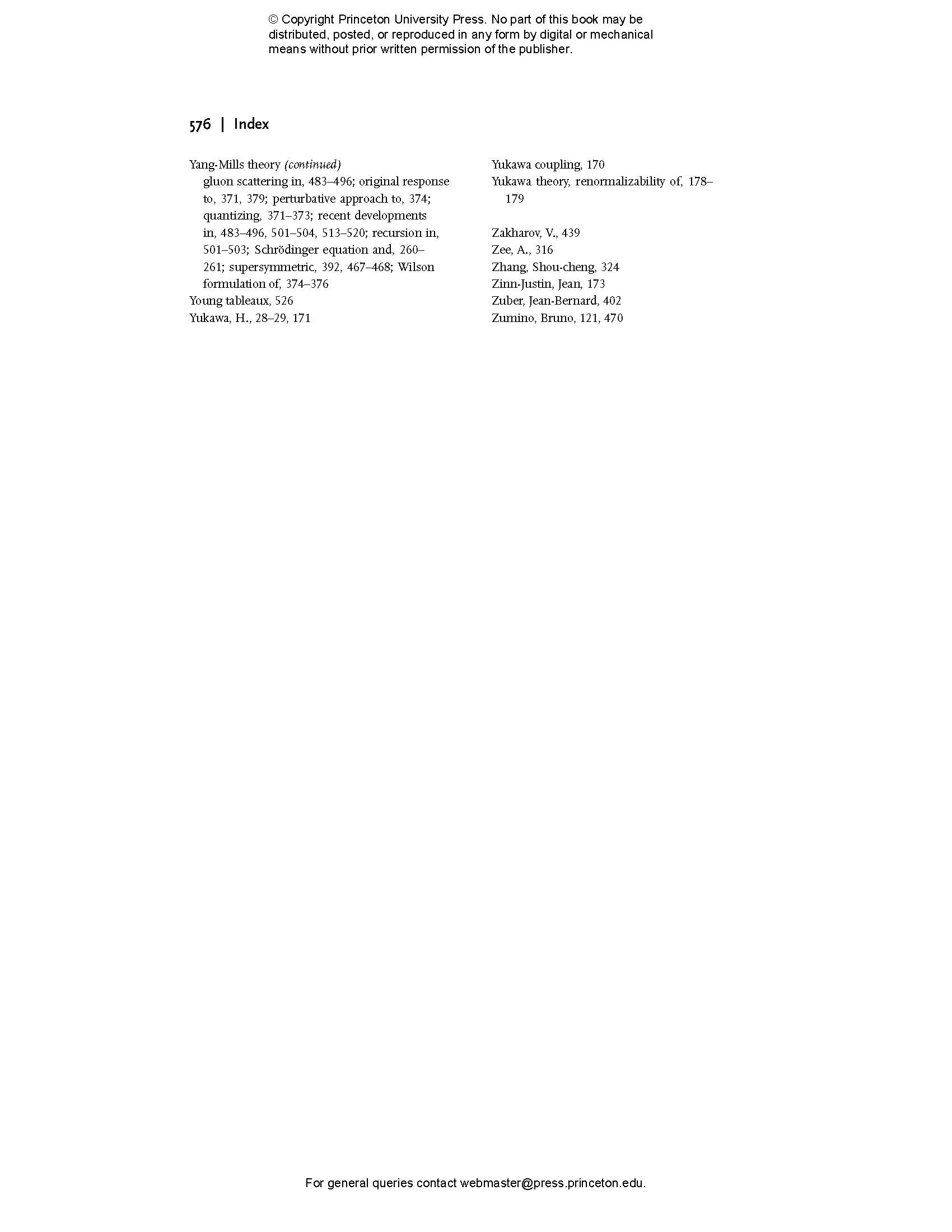Since it was first published, Quantum Field Theory in a Nutshell has quickly established itself as the most accessible and comprehensive introduction to this profound and deeply fascinating area of theoretical physics. Now in this fully revised and expanded edition, A. Zee covers the latest advances while providing a solid conceptual foundation for students to build on, making this the most up-to-date and modern textbook on quantum field theory available.
This expanded edition features several additional chapters, as well as an entirely new section describing recent developments in quantum field theory such as gravitational waves, the helicity spinor formalism, on-shell gluon scattering, recursion relations for amplitudes with complex momenta, and the hidden connection between Yang-Mills theory and Einstein gravity. Zee also provides added exercises, explanations, and examples, as well as detailed appendices, solutions to selected exercises, and suggestions for further reading.
- The most accessible and comprehensive introductory textbook available
- Features a fully revised, updated, and expanded text
- Covers the latest exciting advances in the field
- Includes new exercises
- Offers a one-of-a-kind resource for students and researchers
Leading universities that have adopted this book include:
- Arizona State University
- Boston University
- Brandeis University
- Brown University
- California Institute of Technology
- Carnegie Mellon
- College of William & Mary
- Cornell
- Harvard University
- Massachusetts Institute of Technology
- Northwestern University
- Ohio State University
- Princeton University
- Purdue University - Main Campus
- Rensselaer Polytechnic Institute
- Rutgers University - New Brunswick
- Stanford University
- University of California - Berkeley
- University of Central Florida
- University of Chicago
- University of Michigan
- University of Montreal
- University of Notre Dame
- Vanderbilt University
- Virginia Tech University
A. Zee is professor of physics and a permanent member of the Kavli Institute for Theoretical Physics at the University of California, Santa Barbara. His books include Fearful Symmetry: The Search for Beauty in Modern Physics (Princeton).
- Preface to the First Edition
- Preface to the Second Edition
- Convention, Notation, and Units
- I Part I: Motivation and Foundation
- I.1 Who Needs It?
- I.2 Path Integral Formulation of Quantum Physics
- I.3 From Mattress to Field
- I.4 From Field to Particle to Force
- I.5 Coulomb and Newton: Repulsion and Attraction
- I.6 Inverse Square Law and the Floating 3-Brane
- I.7 Feynman Diagrams
- I.8 Quantizing Canonically
- I.9 Disturbing the Vacuum
- I.10 Symmetry
- I.11 Field Theory in Curved Spacetime
- I.12 Field Theory Redux
- II Part II: Dirac and the Spinor
- II.1 The Dirac Equation
- II.2 Quantizing the Dirac Field
- II.3 Lorentz Group and Weyl Spinors
- II.4 Spin-Statistics Connection
- II.5 Vacuum Energy, Grassmann Integrals, and Feynman Diagrams for Fermions
- II.6 Electron Scattering and Gauge Invariance
- II.7 Diagrammatic Proof of Gauge Invariance
- II.8 Photon-Electron Scattering and Crossing
- III Part III: Renormalization and Gauge Invariance
- III.1 Cutting Off Our Ignorance
- III.2 Renormalizable versus Nonrenormalizable
- III.3 Counterterms and Physical Perturbation Theory
- III.4 Gauge Invariance: A Photon Can Find No Rest
- III.5 Field Theory without Relativity
- III.6 The Magnetic Moment of the Electron
- III.7 Polarizing the Vacuum and Renormalizing the Charge
- III.8 Becoming Imaginary and Conserving Probability
- IV Part IV: Symmetry and Symmetry Breaking
- IV.1 Symmetry Breaking
- IV.2 The Pion as a Nambu-Goldstone Boson
- IV.3 Effective Potential
- IV.4 Magnetic Monopole
- IV.5 Nonabelian Gauge Theory
- IV.6 The Anderson-Higgs Mechanism
- IV.7 Chiral Anomaly
- V Part V: Field Theory and Collective Phenomena
- V.1 Superfluids
- V.2 Euclid, Boltzmann, Hawking, and Field Theory at Finite Temperature
- V.3 Landau-Ginzburg Theory of Critical Phenomena
- V.4 Superconductivity
- V.5 Peierls Instability
- V.6 Solitons
- V.7 Vortices, Monopoles, and Instantons
- VI Part VI: Field Theory and Condensed Matter
- VI.1 Fractional Statistics, Chern-Simons Term, and Topological Field Theory
- VI.2 Quantum Hall Fluids
- VI.3 Duality
- VI.4 The σ Models as Effective Field Theories
- VI.5 Ferromagnets and Antiferromagnets
- VI.6 Surface Growth and Field Theory
- VI.7 Disorder: Replicas and Grassmannian Symmetry
- VI.8 Renormalization Group Flow as a Natural Concept in High Energy and Condensed Matter Physics
- VII Part VII: Grand Unification
- VII.1 Quantizing Yang-Mills Theory and Lattice Gauge Theory
- VII.2 Electroweak Unification
- VII.3 Quantum Chromodynamics
- VII.4 Large N Expansion
- VII.5 Grand Unification
- VII.6 Protons Are Not Forever
- VII.7 SO(10) Unification
- VIII Part VIII: Gravity and Beyond
- VIII.1 Gravity as a Field Theory and the Kaluza-Klein Picture
- VIII.2 The Cosmological Constant Problem and the Cosmic Coincidence Problems
- VIII.3 Effective Field Theory Approach to Understanding Nature
- VIII.4 Supersymmetry: A Very Brief Introduction
- VIII.5 A Glimpse of String Theory as a 2-Dimensional Field Theory
- Closing Words
- N Part N
- N.1 Gravitational Waves and Effective Field Theory
- N.2 Gluon Scattering in Pure Yang-Mills Theory
- N.3 Subterranean Connections in Gauge Theories
- N.4 Is Einstein Gravity Secretly the Square of Yang-Mills Theory?
- More Closing Words
- Appendix A: Gaussian Integration and the Central Identity of Quantum Field Theory
- Appendix B: A Brief Review of Group Theory
- Appendix C: Feynman Rules
- Appendix D: Various Identities and Feynman Integrals
- Appendix E: Dotted and Undotted Indices and the Majorana Spinor
- Solutions to Selected Exercises
- Further Reading
- Index
"Every theoretical physicist and every university library should own this book."—Choice
"This is quantum field theory taught at the knee of . . . one who loves the grandeur of his subject, has a keen eye for a slick argument, and is eager to share his repertoire of anecdotes about Feynman, Fermi, and all of his heroes. . . . Zee misses no opportunity to point out that an argument he gives opens the door to some deeper subject that he encourages the reader to explore. . . . [Quantum Field Theory in a Nutshell] helps them love the subject and race to its frontier."—Michael E. Peskin, Classical and Quantum Gravity
"[T]his is an excellent and unique introduction to quantum field theory. It takes a lot of work, and capable but less confident students would need a great deal of guidance, but it is a beautiful text written with infectious enthusiasm, and I thoroughly recommend it."—S. Virmani, Contemporary Physics
"[This] is an excellent invitation to the wide area of modern quantum field theory, and even provides the mature field theoretician with interesting insights and connections. To the curious student, it is a near-perfect companion to spice up the world of quantum field theory, especially particle physics, beyond the standard presentations. . . . It is definitely highly recommendable to anyone who wants to have a book with a non-standard view on quantum field theory, or who just wants to have an entertaining and insightful reprise of the topic."—Axel Maas, Mathematical Reviews Clippings
"A beautiful exposition of the way modern field theorists think about quantum field theory, packed with insights and physical intuition. Zee's book should be required reading for every serious student of the subject."—Nima Arkani-Hamed, Institute for Advanced Study
